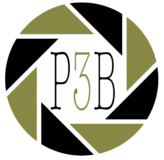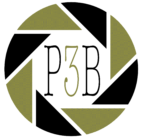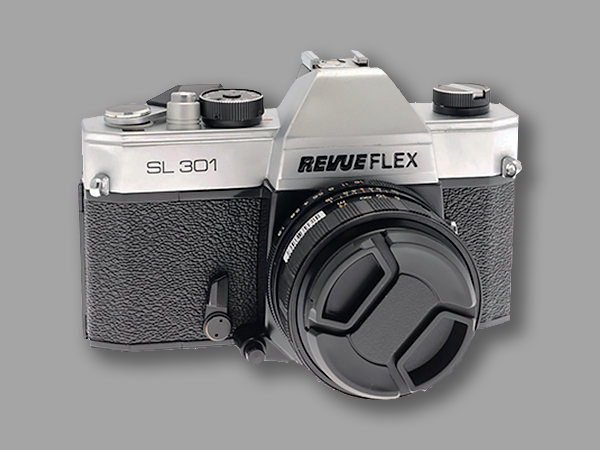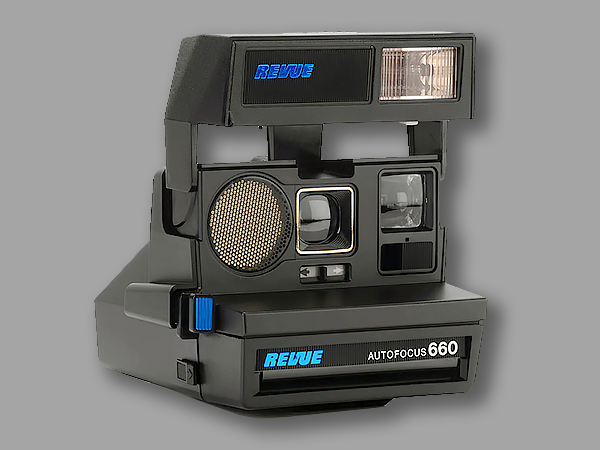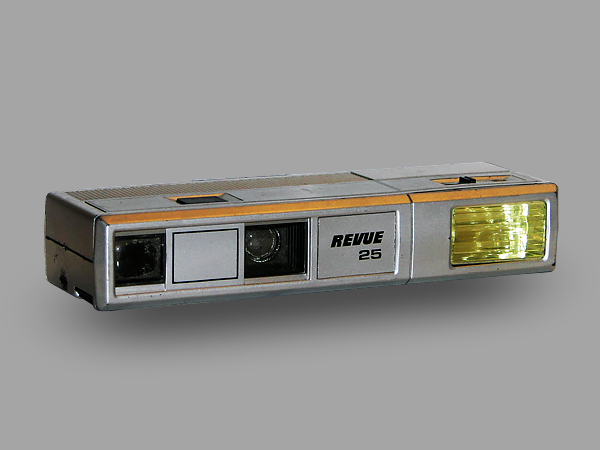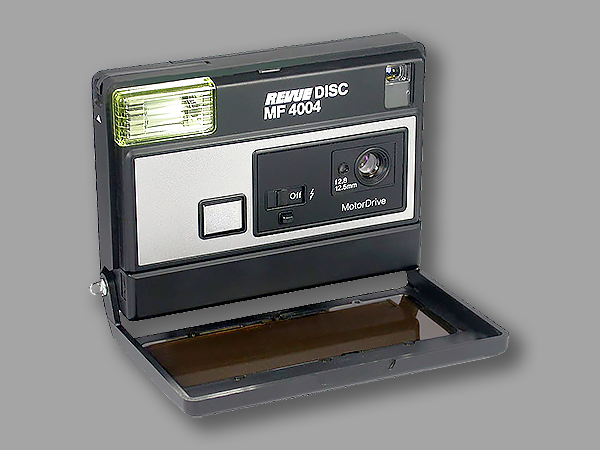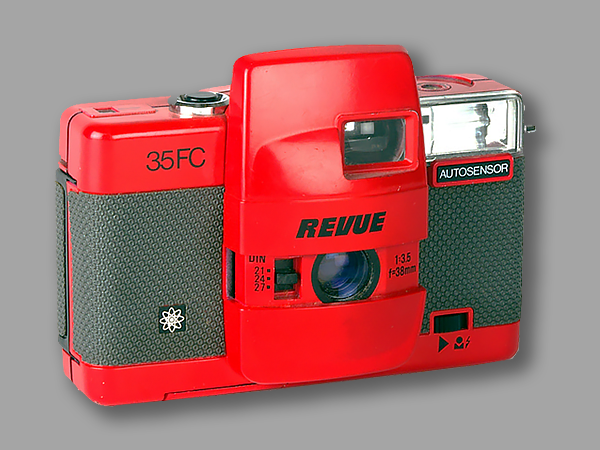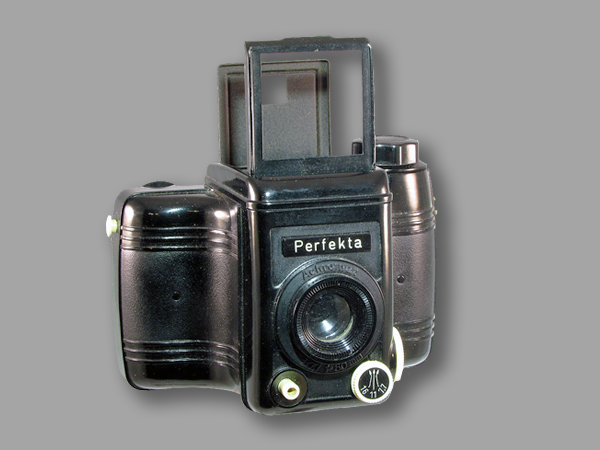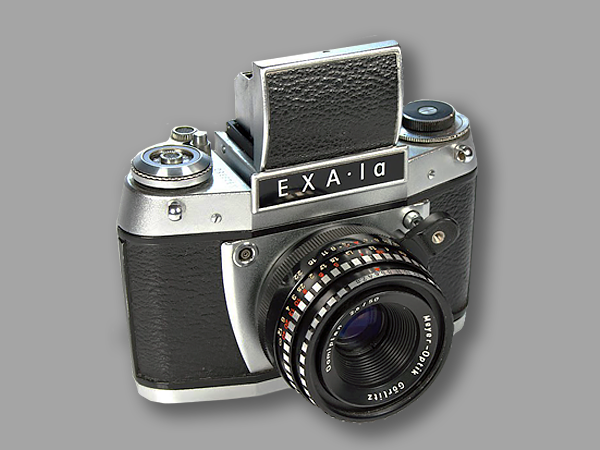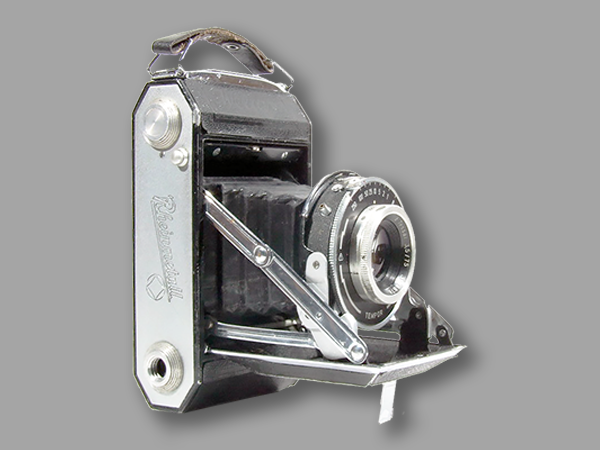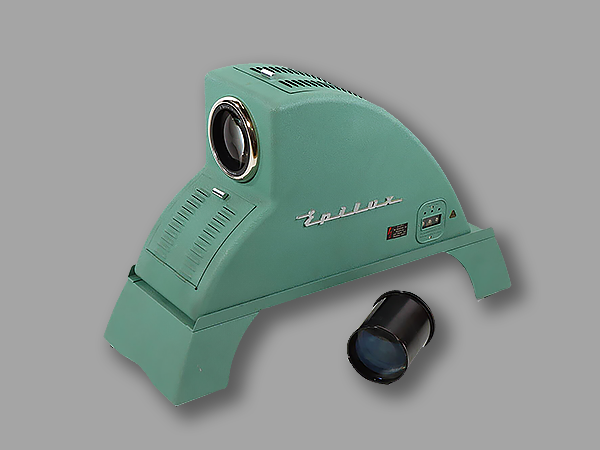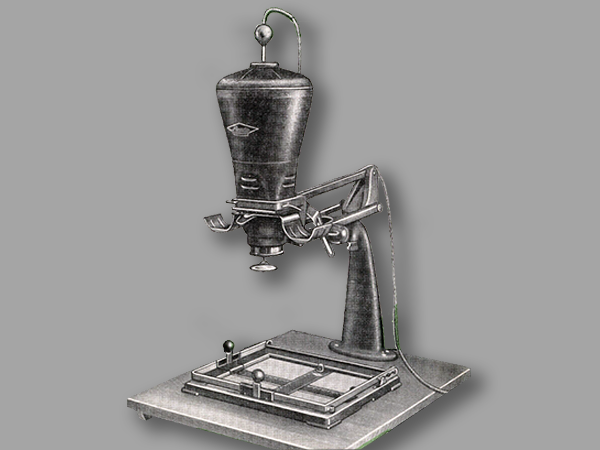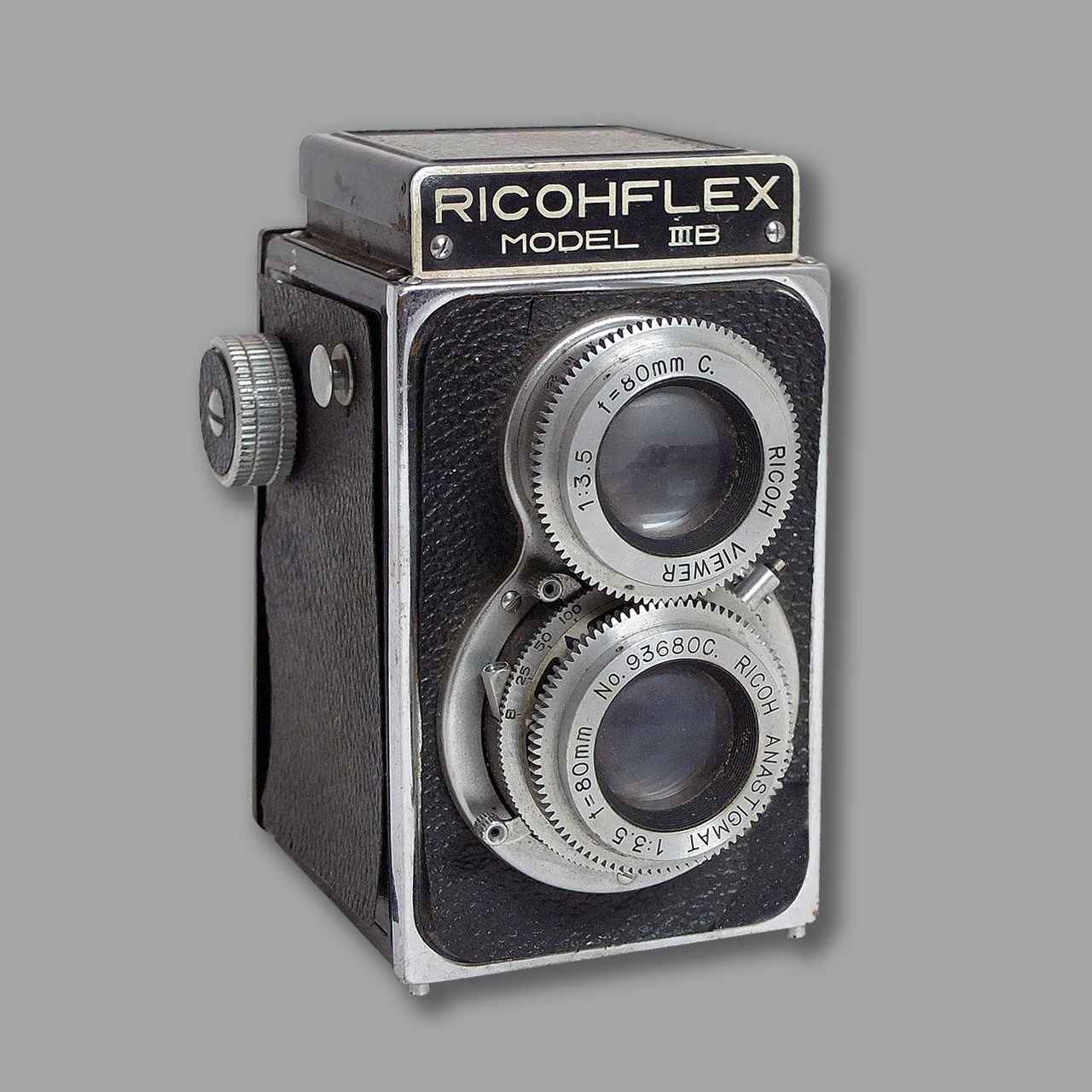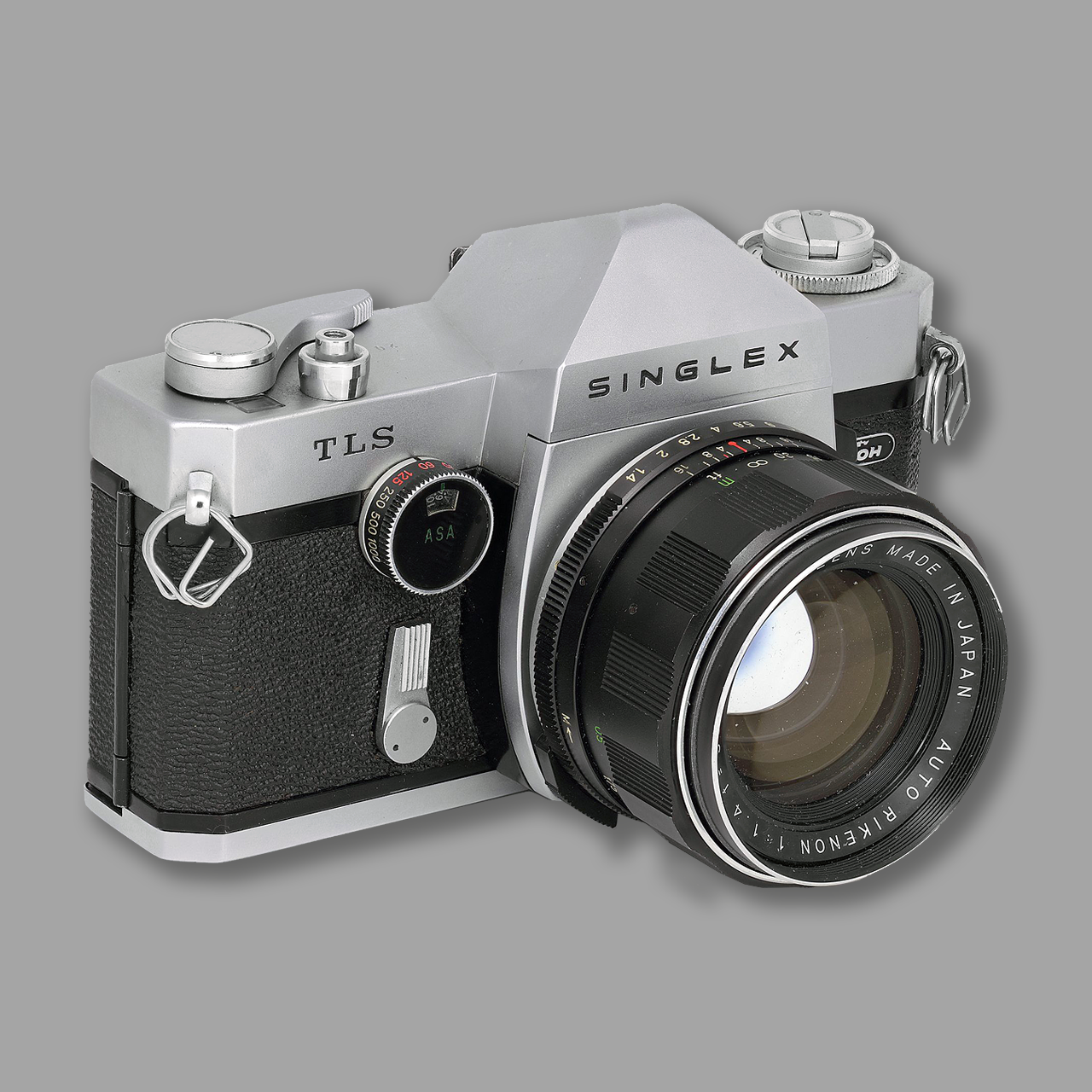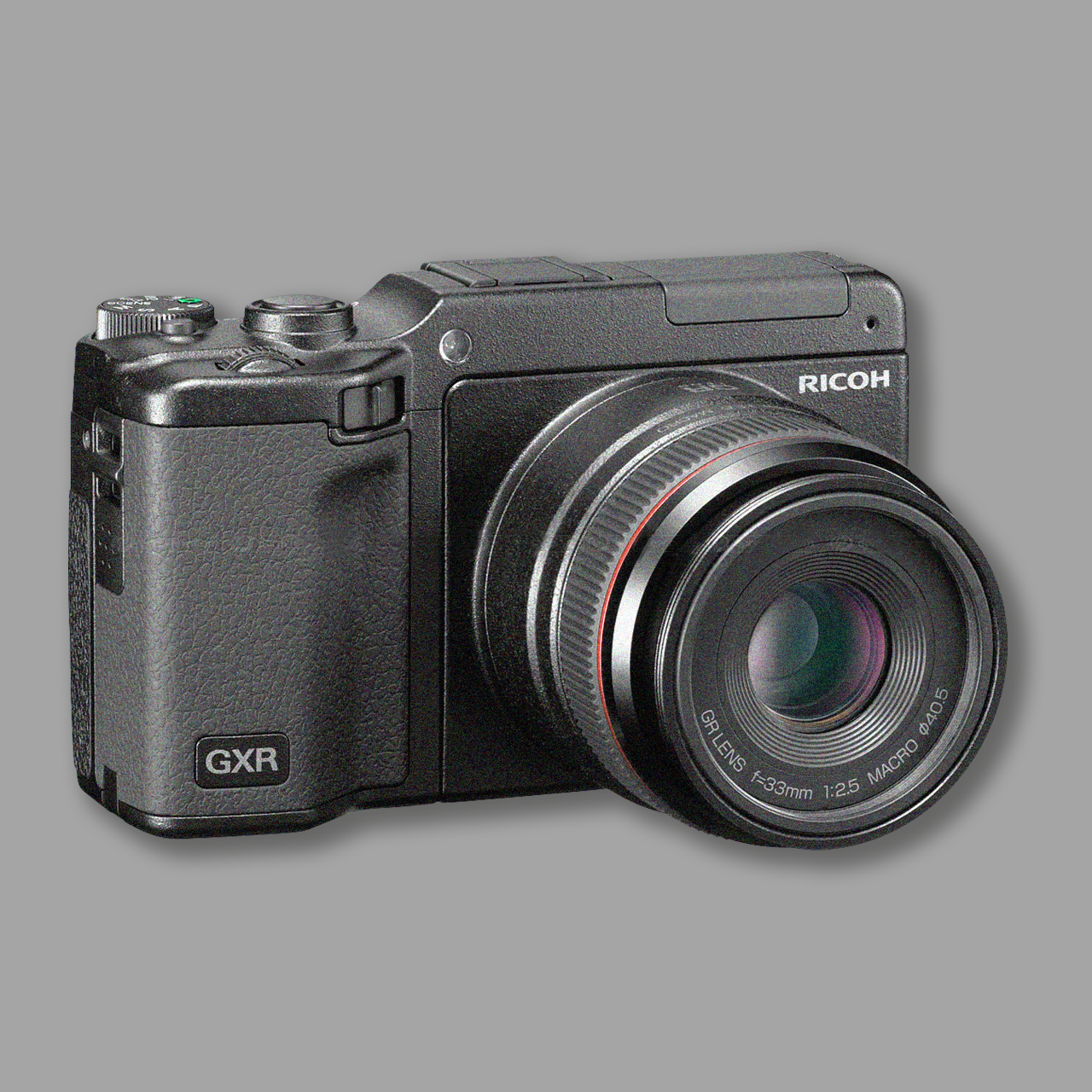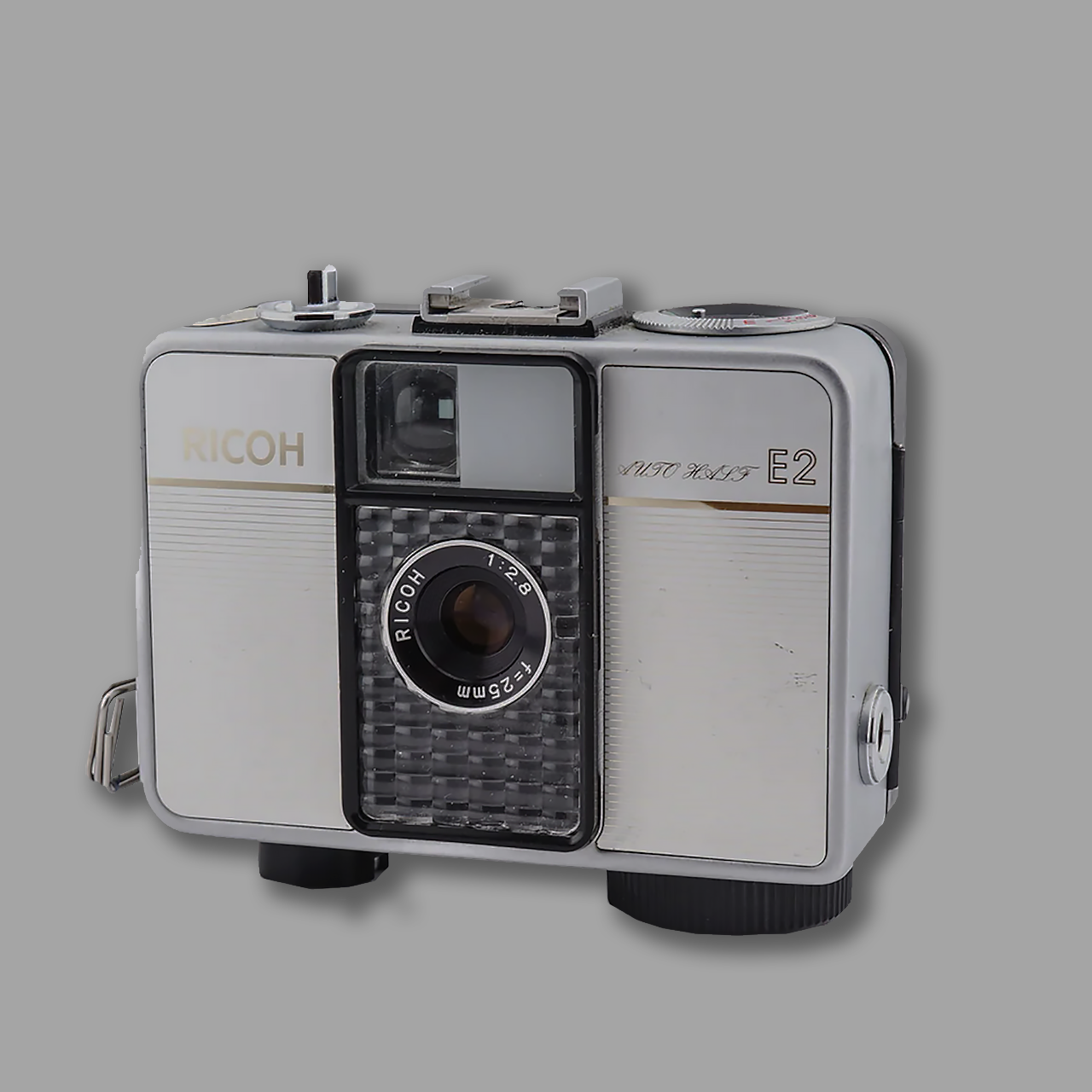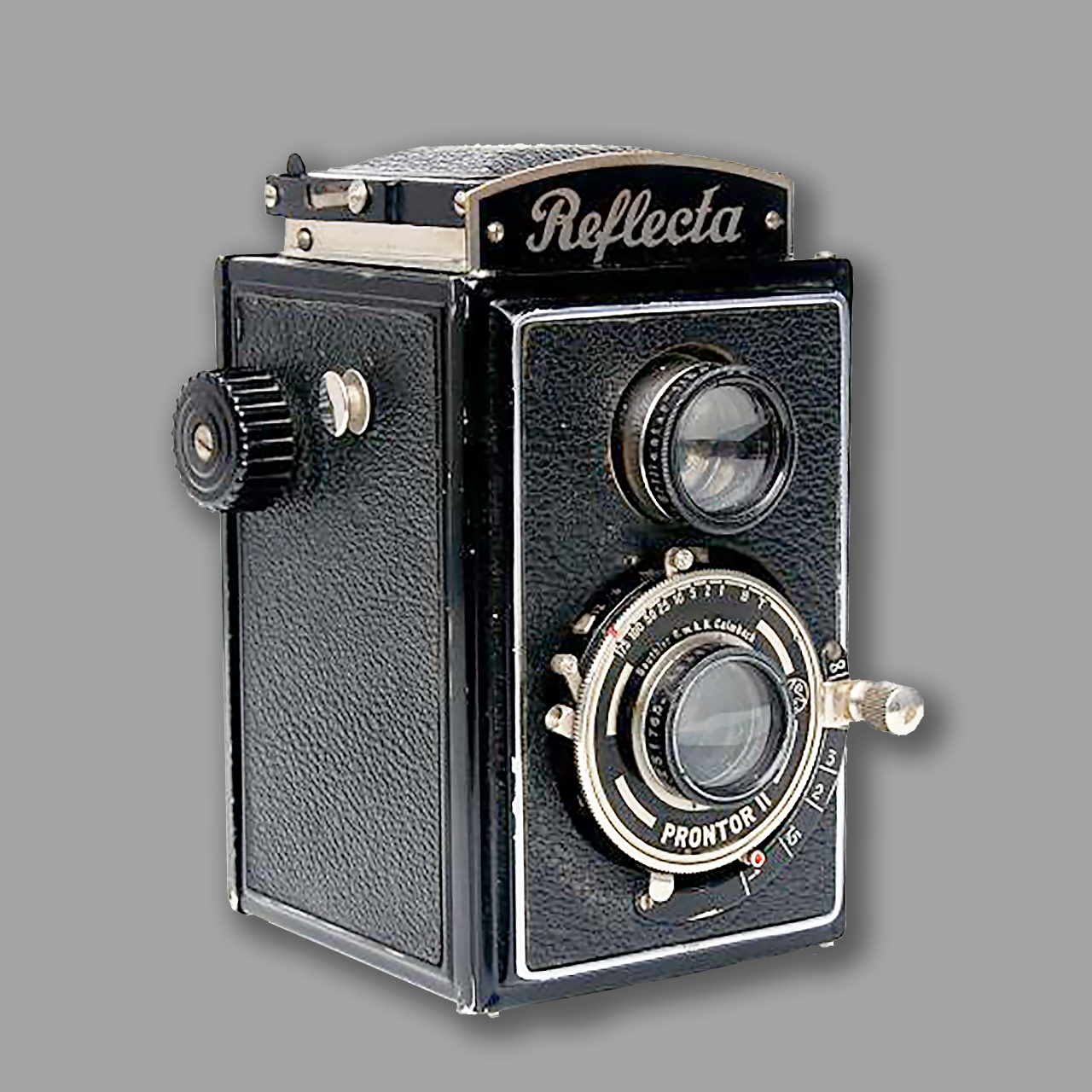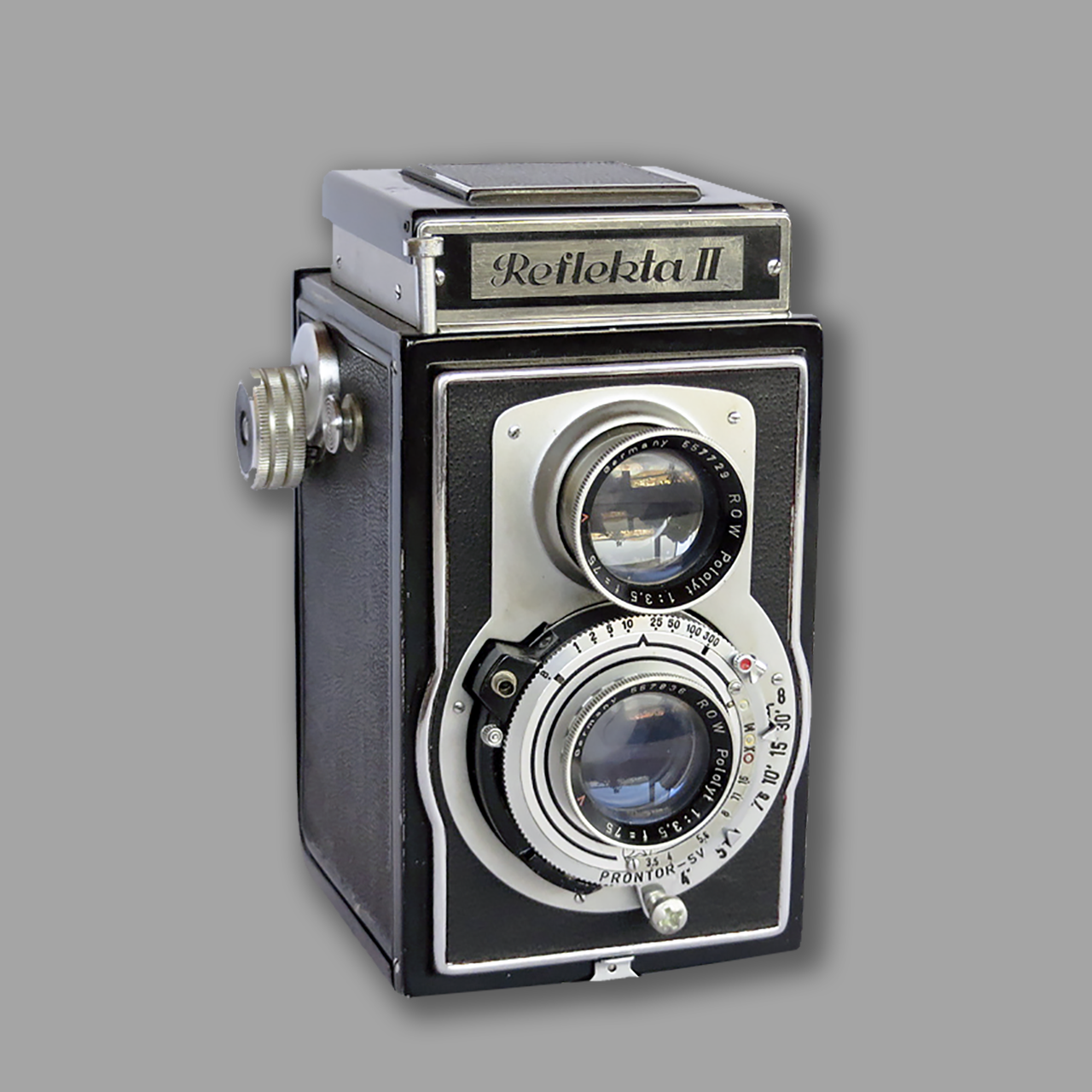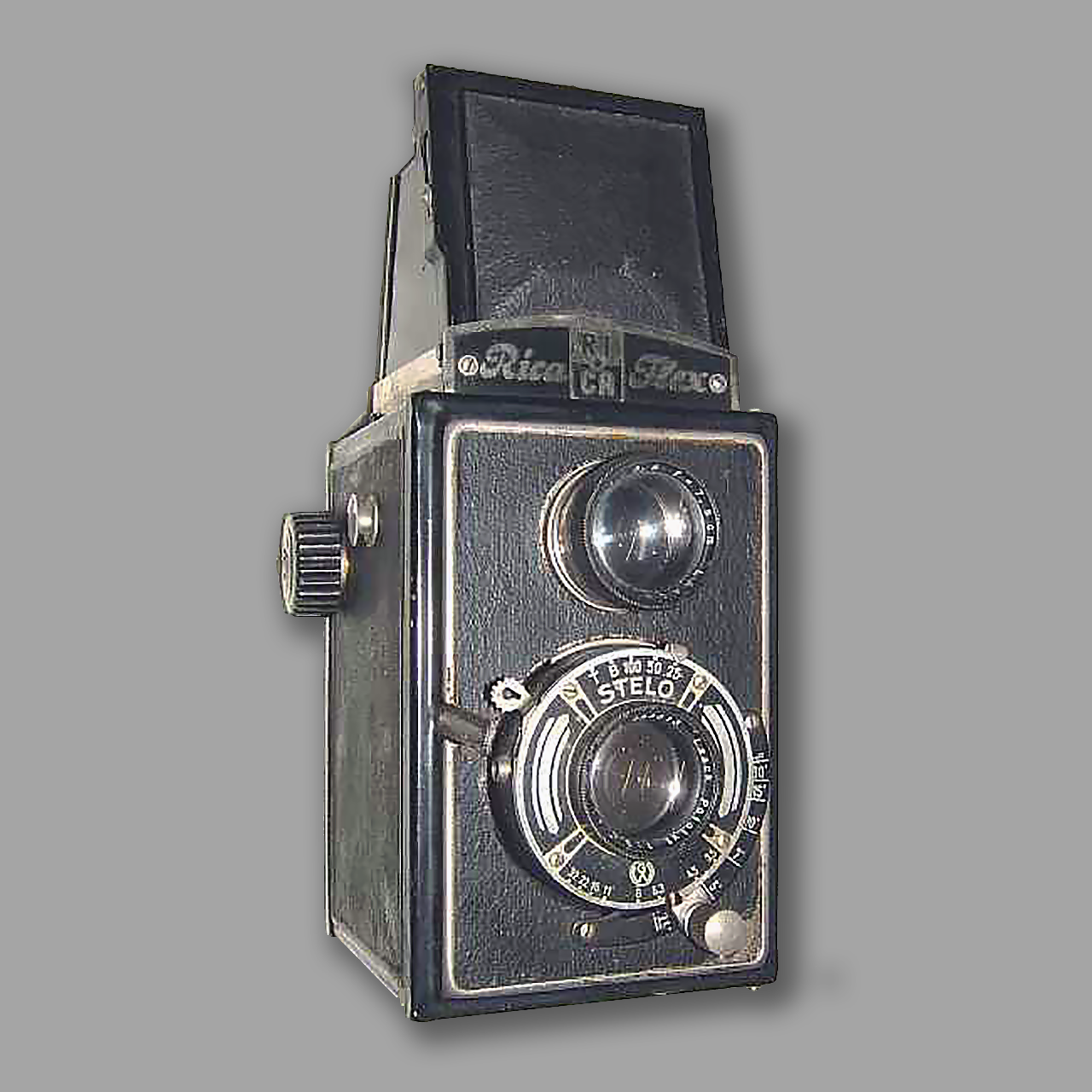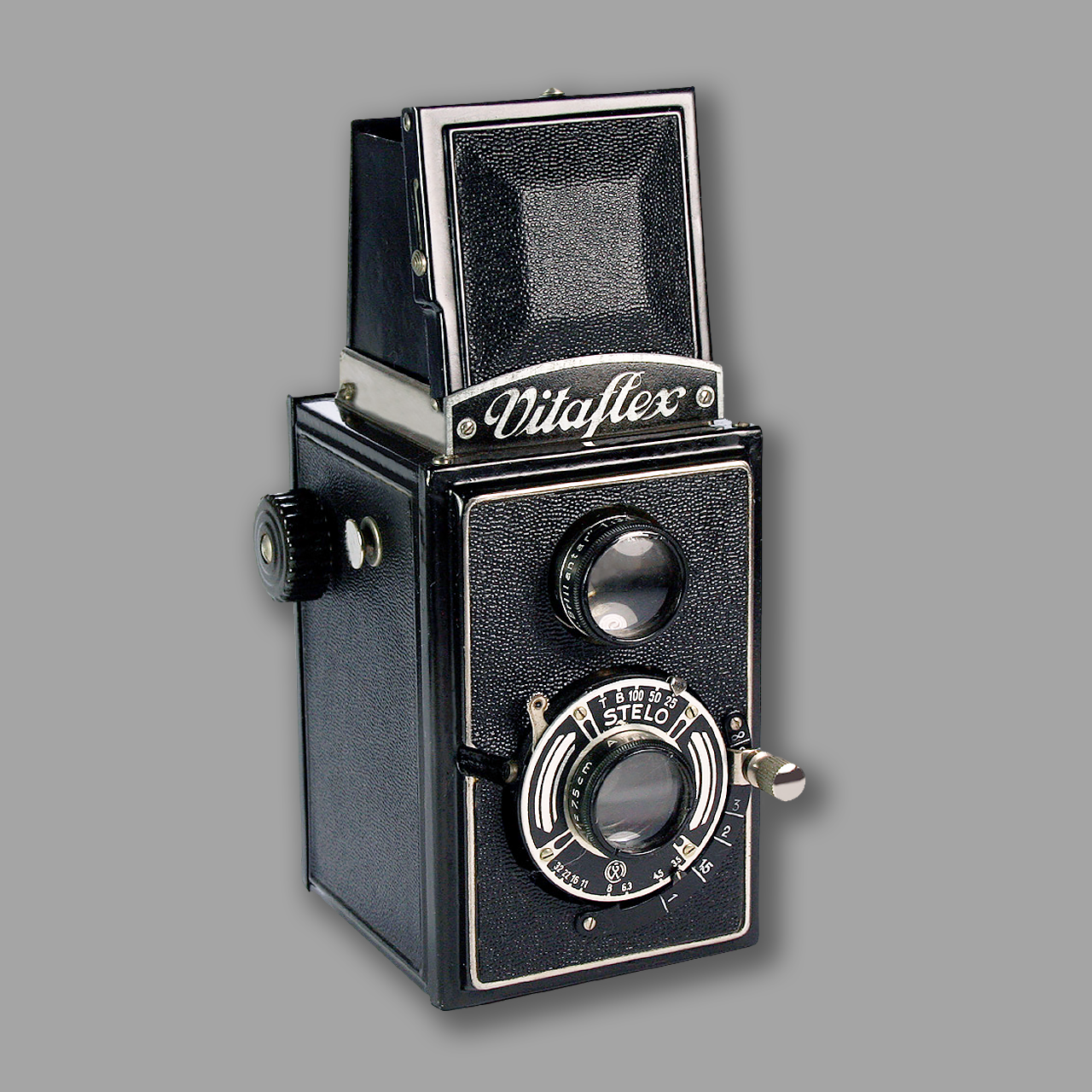Some of the following companies that manufacture(d) photographic material have already passed by in other parts of the site. Here you will find an overview of companies that marketed photographic material in the nineteenth and twentieth centuries. More is usually known about the best known or the most influential companies than about the lesser known ones; therefore they will be discussed more extensively than others.
The emphasis in this part of the site is more on the ups and downs of the company as such, while in other chapters the emphasis was on the product or on the man or woman who founded the company. The order of all companies is alphabetical.
Below are the names of the companies as will be discussed in this or any other chapter. By clicking on a name (so not on the bullet in front of it), you go directly to that part on this page where the manufacturer in question is located. Scrolling is also possible of course, but this service helps you to get to the desired manufacturer in question much faster.
Due to the fact that this introductory page has become much longer than originally planned and desirable due to the large number of manufacturers, we strongly advise you to use the name service below to go to the manufacturer of your choice on this or any subsequent page.
- General Introduction
- ADOX
- Agfa (see also Gevaert)
- Altissa
- Amaloco
- Ansco Camera Co (see also GAF)
- APM/APeM (see also Soho)
Amalgamated Photographic Manufacturers Ltd - Argus Camera Co, Ann Arbor Michigan
- Arsenal (see Kiev-Arsenal)
- Artima Export Ltd (see also Truvox)
- Asahi Pentax
- Bencini
- BOLCo and E Elliott Ltd
(abbrev. for The British Optical Lens Company) - Carl Braun Kamera-Werk
- Canon Inc.
- J.T. Chapman, Manchester
- The Chicago Cluster of Companies
(consisting of 56 companies ) - Chinon
- Concord Camera Corp.
- K.G. Corfield & K.G. Corfield (Sales) Ltd.
- Coronet Camera Company
- Cosina Company, Ltd.
- Dacora
- Dixons
- Durst
- EHO-Altissa company (See Altissa)
- E Elliott Ltd and BOLCo
(abbrev. forThe British Optical Lens Company) - Ellison Kamra
(see also QRS Devry Kamra Company) - ELOP
- Ensign Ltd.
(distribution Company of Houghton-Butcher) - Ernemann-Kamerawerke AG
- Expo Camera Company
- The FED Company
- Ferrania
- Fisher-Price
- Fodor
- Foitzik-Kamerawerke
- C.F. Foth
- Fototecnica
- Franka Kamerawerk –
- Fujica (Camera Division of Fujifilm)
- Fujifilm (brief history)
- Futura
- GAF (see also ANSCO)
(abbrev. for General Aniline & Film) - Louis Gandolfi
- Herbert George Company
- Gevaert Photo-Producten N.V. (see also AGFA)
- Girard et Cie
- GNOME
- GOERZ
- GOMZ (LOMO)
- Graflex (Folmer & Schwing)
- Great Wall Plastics Co
- W. Haking Enterprises Ltd.
- Hanimex
- Hasselblad
- Healthways
- Houghton–Butcher Manufacturing Co (See also Ensign Ltd. and Ross-Ensign Ltd.)
- R.F. Hunter Ltd.
- ICA AG
- Ihagee (Exakta)
- Ilford
- Imperial Camera Corporation
(see the Herbert George Company story ) - Jos-Pe
- Kamera-Werkstätten Guthe & Thorsch
- Keystone
- Kiev Arsenal
- KMZ
- Kochmann
- Kodak USA (incl. Australia, Canada, France, Germany & the UK)
- Konica-Minolta (Konishiroku)
(see also Minolta) - Kowa
- Krügener
- Kürbi & Niggeloh (Bilora)
- Kyocera (Yashica, Contax)
- Lancaster
- Leitz
- Lensless Camera Manufacturing Company
- Linhof
- Lipca (see also Richter-Tharandt)
- LOMO (see GOMZ)
- Loreo
- Mamiya
- Meopta Optotechnica
- Mimosa AG
- Minolta (see also Konica-Minolta)
- Minox Company
- Miranda (Orion)
- MMZ-BeLomo
- Motodori (Condor)
- Dr. August Nagel Kamera Werke
- Neidig Kamerawerk
- Nemrod-Metzeler (See Healthways)
- Nettel
- Nikon Company
- Nimslo Corporation (see also Nishika)
- Nishika Optical Systems (see also Nimslo)
- Noblex (See also K-W Guthe & Thorsch)
- Olympus Company
- ORION (see Miranda)
- ORWO
- Ottico Meccanica Italiana (OMI)
- Paterson Products Ltd.
- VEB Pentacon Dresden
- Pentax (See Asahi Pentax)
- Petri
- Photavit (Bolta)
- Plaubel
- Polaroid
- Photo Porst
- Karl Pouva – VEB Fototechnik Freital (see also Woldemar Beier)
- Purma Cameras Ltd.
- QRS Devry Kamra Company (see also Ellison Kamra)
- Foto-Quelle
- Rectaflex
- VEB Rheinmetall Büromaschinenwerk
- Richter-Tharandt (see also Lipca)
- Ricoh
- Rollei Germany
- Rollei Singapore
- Ross-Ensign
(continuation from Ensign Ltd.) - Ro-To Company
- Sea&Sea-Sunpak
- Shanghai Seagull
- Sida-Fotofex
- Sigma
- Soho Ltd (see also APM)
- Standard Cameras
- Steinheil
- Stenopeika
- Thornton-Pickard
- Topcon (Tōkyō Kōgaku)
- Tougodo Company
- Traid Corporation
- TRUVOX (see also Artima Export)
- Tura AG
- Universal Camera Corp.
- Vivitar
- Voigtländer
- Vredeborch
- Welta
- Werra (C. Zeiss Jena)
- Wirgin
- Kamera-Fabrik Woldemar Beier (see also Karl Pouva)
- Hermann Wolf GmbH
- Wünsche
- Yashica (see also Kyocera)
- Zeiss Ikon AG
- Zion
- Zunow (Teikoku Kōgaku)
FOUNDER: QRS Company
COMPANY NAMES:
1929: QRS merged with De Vry, becoming the QRS-De Vry Corporation; the merged company did not last long, and the camera may have been discontinued quickly.
COMPANY ADDRESS:
1929: 333 North Michigan Avenue, Chicago, ILL.
Not much is known about QRS DeVry. The Q R S company made player pianos and piano rolls (still does). They lent factory facilities to the early Zenith radio corporation. They also made movie cameras for a brief period in 1929, but this appears to be their only still camera.
Michael Ellison and Edward McAuliffe of Chicago filed a patent application in 1926 for a two-blade shutter, which was eventually granted in 1929.
The blades are operated in a simple scissor style, driven by a pin in curved slots which act as cams. The blades of the “scissors” are bent down at right angles, so the working part moves out and in again, in an arc uncovering the light path. All this is built onto a cast aluminium block which also holds the lens.
The shutter provides just one speed. This shutter is triggered by an arm controlled rather cleverly by a cam, rotated by the operating crank. One full rotation winds the film; when the turn is complete the cam follower drops into a slot, from which a slight reverse movement can release it. A spring then drives the arm to fire the shutter.
It seems that within a few months of the launch of the Ellison Kamra, the design was taken over by another Chicago firm, the QRS Company. The Ellison Kamra company faded away and was eventually dissolved on 19th January 1935, having for two years failed to pay its taxes to the State of Delaware.
The Q.R.S. Company of Chicago had become the largest American manufacturer of player pianos and piano rolls before WWI. By the late 1920’s they were producing several motion picture projectors and cameras as well as a number of other products in their broad product portfolio. It is easy to imagine that by 1928 business was declining, and they urgently needed something new to do. The answer was photography, and the coming idea of miniature photography using 35mm film. And here in Chicago is a product, maybe needing some more investment and marketing. So in 1928, less than a year from its launch, the Kamra has moved to a new home with QRS.
QRS merged with De Vry in 1929, becoming the QRS-De Vry Corporation. The merged company did not last long, and the camera may have been discontinued quickly anyway, since De Vry concentrated on cine equipment.
QRS Kamra description
The Model-K-1 Kamra was offered by Q.R.S. prior to the merger and did not last very long after the merger probably since it did not fit well into the new DeVry product line. It took 35mm cinema film stock that had to be loaded into the special cassettes. It was capable of loading enough film for 40 or more frames at one time.
 The QRS Kamra is is an early 35mm camera and in any case a close copy (including the name) of the Ellison Kamra, made only a year or two earlier, though it is a little smaller than the Ellison.
The QRS Kamra is is an early 35mm camera and in any case a close copy (including the name) of the Ellison Kamra, made only a year or two earlier, though it is a little smaller than the Ellison.
In particular, the QRS Kamra relies on the same crank-operated shutter, patented by the owners of the Ellison Kamra Company of Los Angeles, whereby the crank on the top of the camera both advances the film (when wound clockwise) and operates the shutter (when wound anti-clockwise). The crank on both cameras is fragile, and is broken on most surviving.
It is interesting to note that in 1928 there was no standard 35mm still format although Oskar Barnack had committed to the 24mm x 36mm frame size by 1925. Q.R.S. decided to use a 24mm x 32mm frame size in the Kamra. This format was not to appear again in any camera until 1947 when, for equally obscure reasons, Nikon used it in their newly designed rangefinder camera.
The world having forgotten the Kamra, the 24mm x 32mm frame became know as the “Japanese format” by the late 1940’s though it soon disappeared altogether by 1952. However, it was to appear one more time but in a very different camera design – the digital SLR.
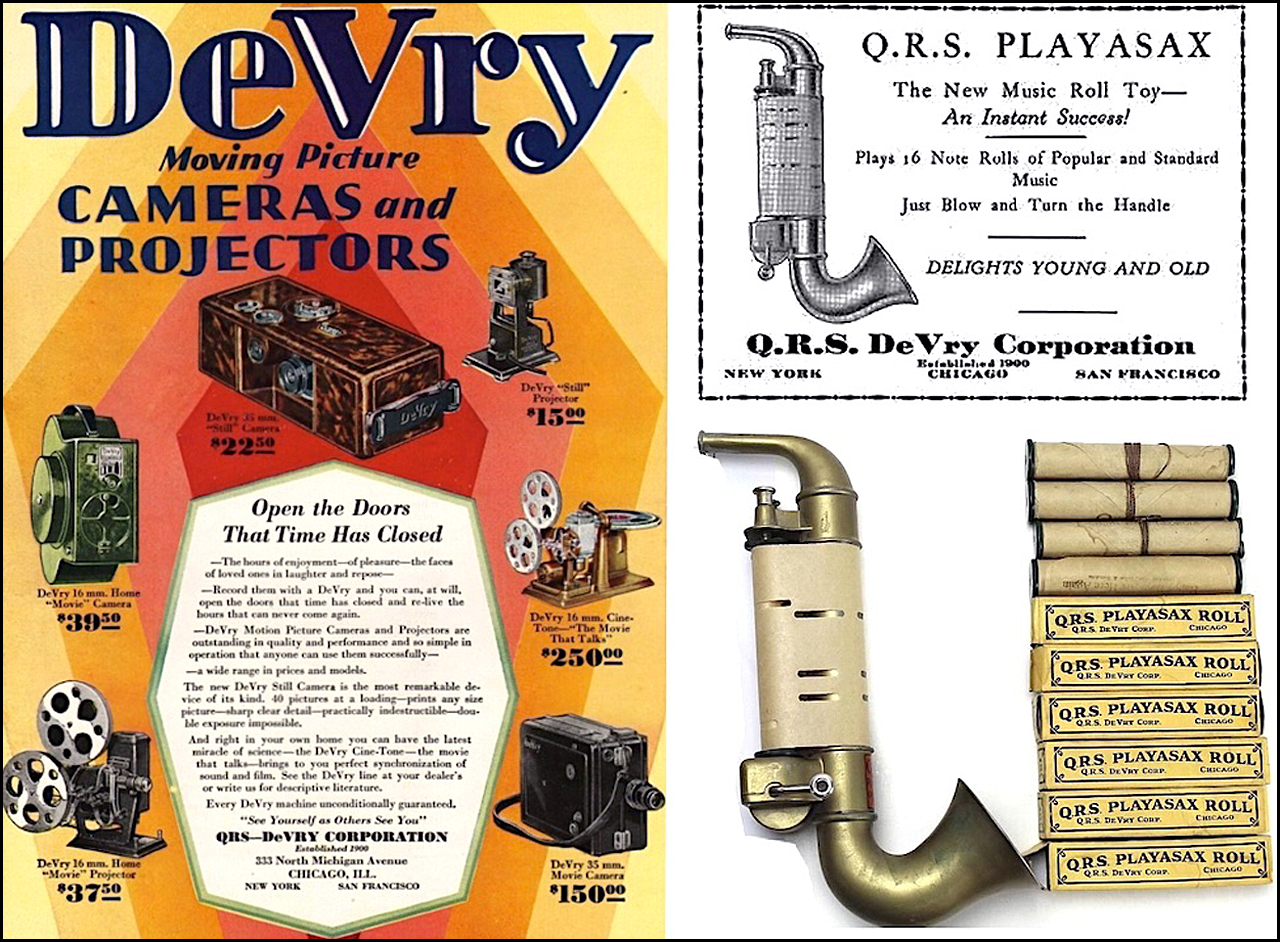
In its hopeful beginnings, the QRS-DeVry merger sought to combine QRS’s music industry sway with the motion picture powers of the DeVry brand . . . but the marriage never sounded quite right.
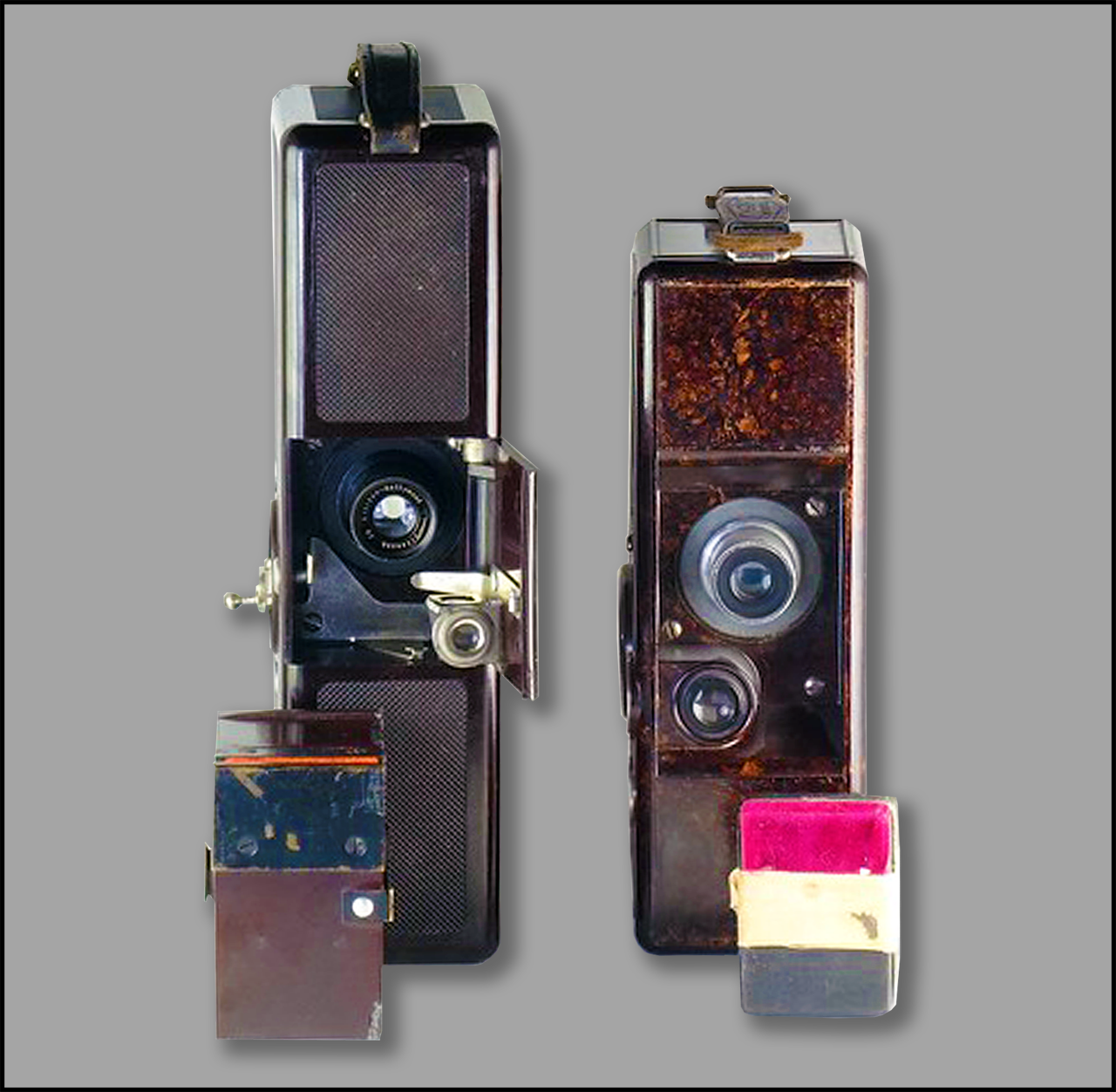
The Ellison Kamra (left) and the QRS Kamra (right), with their cassettes.
QRS Kamra descriptioN (CONTINUED)
The QRS Kamra is a camera that would have benefited from the general availability of faster film, which would have allowed the lens to be stopped down. That in turn would have given better depth of field, sharper pictures and a larger image circle. As it was, users were probably not very impressed with their results, in turn explaining the short production life and low sales.
The rectangular body is made of a bakelite, marbled burgundy, giving an attractive mottled finish. It’s more compact than the Ellison, the width is 18.5cm, down from 22cm. Both are 8cm deep, 6 cm high. All the controls are on one side (the top, if landscape-format pictures are to be taken).
The QRS/De Vry camera has several improvements over the Ellison: it has ‘T’ as well as ‘I’ shutter settings, and it has a frame counter. The camera was fitted as standard with a fixed-focus 40mm f/7.7 Graf Anastigmat with no aperture adjustment (similar to the Ellison, which has a fixed-focus f/5 lens without aperture adjustment), but it was also offered at extra cost with a focusing f/3.5 Graf lens, with an iris diaphragm. The camera has a brilliant finder moulded into the body (the Ellison camera has one mounted on a folding lens-door). The flat back plate is removable for film loading. Film is passed from one cassette to another, a cassette holding about five feet of film for forty 24x32mm exposures.
FOUNDING DATE: 1927 (1957)
FOUNDER: Gustav Schickedanz (Lothar Schmechtig-Foto Quelle)
COMPANY NAMES:
1999: Quelle Schickedanz AG & Co.; 1999: KarstadtQuelle AG which became in 2007: Arcandor AG; 2006: Quelle GmbH; 2009: Quelle GmbH Germany filed for bankruptcy; 2009: The source naming rights were purchased from a competitor, the Otto Group; 2011: online marketplace at www.quelle.de; 2013: online marketplace was discontinued.
COMPANY ADDRESSES:
1927: Nürnberger Straße 91-95, 90762, Fürth; 1957: Fürther Straße, Nuremberg.
Foto-Quelle of Nuremberg, Germany, was a large retailer of camera and photographic equipment. It sold a variety of film cameras and other optical instruments (such as binoculars) produced by other manufacturers under the Revue and Revueflex brands. Foto-Quelle became Europe’s largest photographic retailer by 1966 and in 1970, the world’s largest. Usually twice a year a popular, richly illustrated catalogue was published, not only in Germany, but also in the Netherlands, France, Belgium, Austria, Italy, USA and Switzerland.
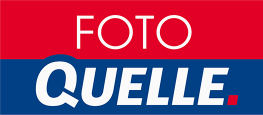
- Largest home shopping company in Europe;
- Almost 100 percent brand awareness in Germany;
- Germany’s No. 1 family mailer;
- Number 1 in German furniture distribution;
- Number 1 in Germany in the sale of sewing machines and washing machines, electric cookers and tumble dryers;
- In the classic German mail order market, Quelle is the highest-selling provider of technology articles;
- 16 national companies in Europe, in most cases market leader or strong number 2;
- Germany’s most customer-oriented service provider in 2008;
- In e-commerce, Quelle with quelle.de is number 3 in Germany in terms of its reach (after Ebay and Amazon) – thus number 1 among classic universal mail order companies.
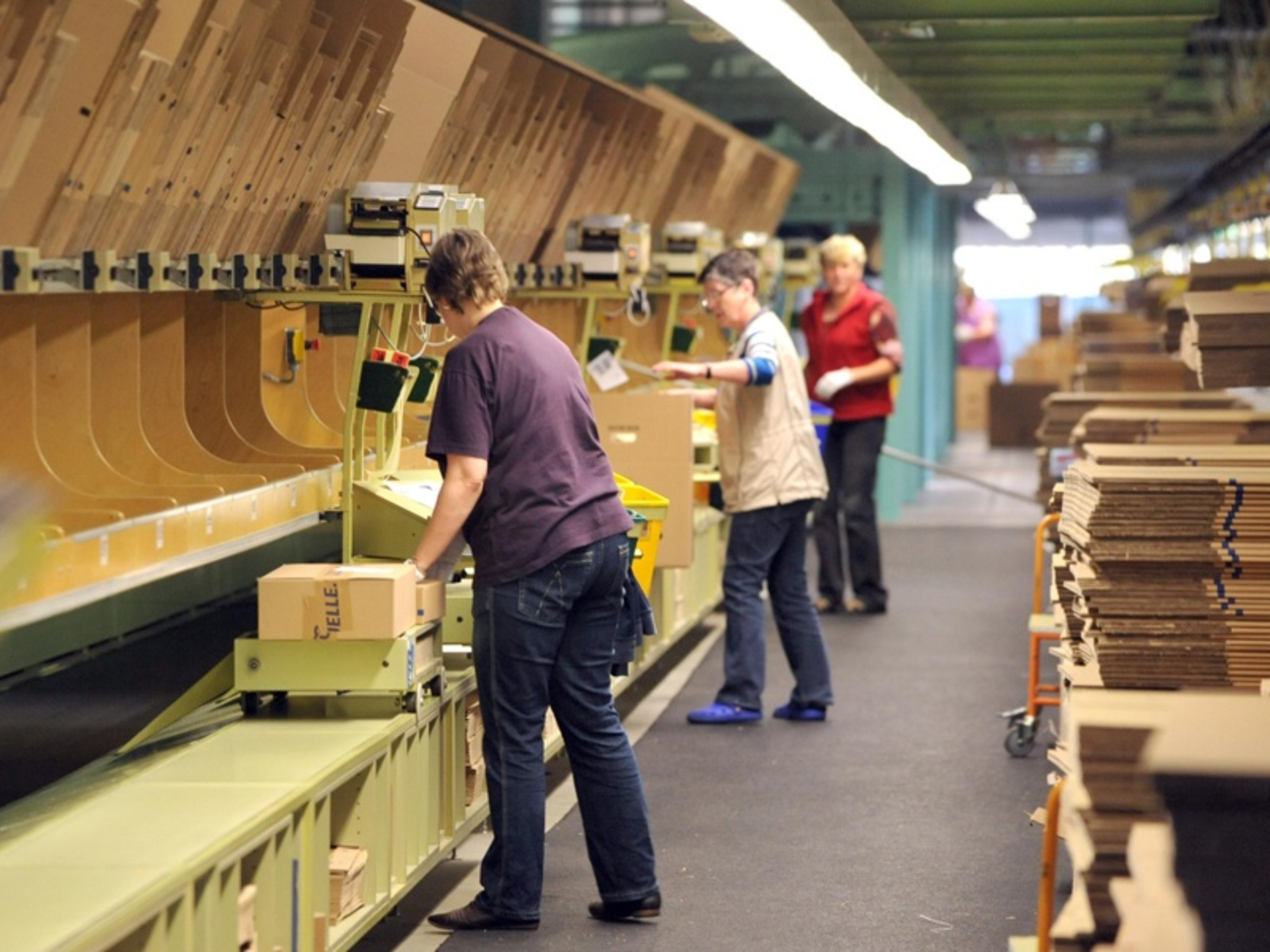
2009 was the year that many of the distribution centers had a hang time for Quelle employees
Introduction
Nuremberg December 2009. The scenery is spooky: once hundreds of employees were busy processing orders for what was once the “largest photo house in the world”. Cameras were sent by post, new products were calculated and new campaigns were created. Now, when visiting in mid-December 2009, there is a silence like in a cemetery. The desks are orphaned, damaged euro pallets are lying around in the corridors, the archive shelves behind heavy iron grids are empty. The scene will be completely closed in a few days. The last one turns off the light.
Thus, Foto-Quelle has suffered the same fate as many well-known names of the formerly flourishing German photo industry – like the Bayreuth camera manufacturer Franka or the Nuremberg factory Carl Braun, which are also history since a long time. Only this time it were not Japanese tinkerers or Chinese brand copiers who are to blame, but also management errors by the parent company Arcandor, which tore Quelle and Foto-Quelle into the abyss.
 Incredible, because the Quelle-catalog and the smaller Foto-Quelle catalog have belonged to German households for decades, like the television in the living room or the crocheted toilet paper hat in the guest toilet. And many hard-working people – also from Franconian Switzerland – had a secure income. Namely, in the 1960s and 1970s, company buses drove hundreds of employees from poor Franconian Switzerland to Grundig and Quelle in the Middle Franconian boom country of Nuremberg-Fürth to work there every day.
Incredible, because the Quelle-catalog and the smaller Foto-Quelle catalog have belonged to German households for decades, like the television in the living room or the crocheted toilet paper hat in the guest toilet. And many hard-working people – also from Franconian Switzerland – had a secure income. Namely, in the 1960s and 1970s, company buses drove hundreds of employees from poor Franconian Switzerland to Grundig and Quelle in the Middle Franconian boom country of Nuremberg-Fürth to work there every day.
Foundation and first years
 On July 13, 1929, she died in a car accident with her son Leo and Gustav Schickedanz ’father Leo Schickedanz.
On July 13, 1929, she died in a car accident with her son Leo and Gustav Schickedanz ’father Leo Schickedanz.
Gustav Schickedanz was seriously injured, the daughter Louise was not injured.
1933–1945: National Socialism and Aryanization gains
In November 1932 Schickedanz joined the NSDAP. In 1935 he became councilor of his home town of Fürth.
In 1935, Schickedanz took over the rights to the Tempo brand, the United Paper Works in Nuremberg, the Geismann brewery and other companies from their former Jewish owners, which was possible in the course of the so-called Aryanization due to his NSDAP membership.
In 1938 the mail order company Quelle had two million regular customers and in 1939 it had a turnover of 40 million Reichsmarks.
In June 1942, Gustav Schickedanz married Grete Lachner (1911–1994), who had already been employed by Schickedanz ’first wife Anna in 1927 at the age of 15 as an apprentice at Quelle.
Grete Schickedanz-Lachner gave birth to her daughter Madeleine on her 32nd birthday, October 20, 1943, in the air-raid shelter of the Nuremberg Women’s Clinic.
In 1943, the Fürth company’s warehouse was destroyed by Allied bombings and the mail order business was discontinued.
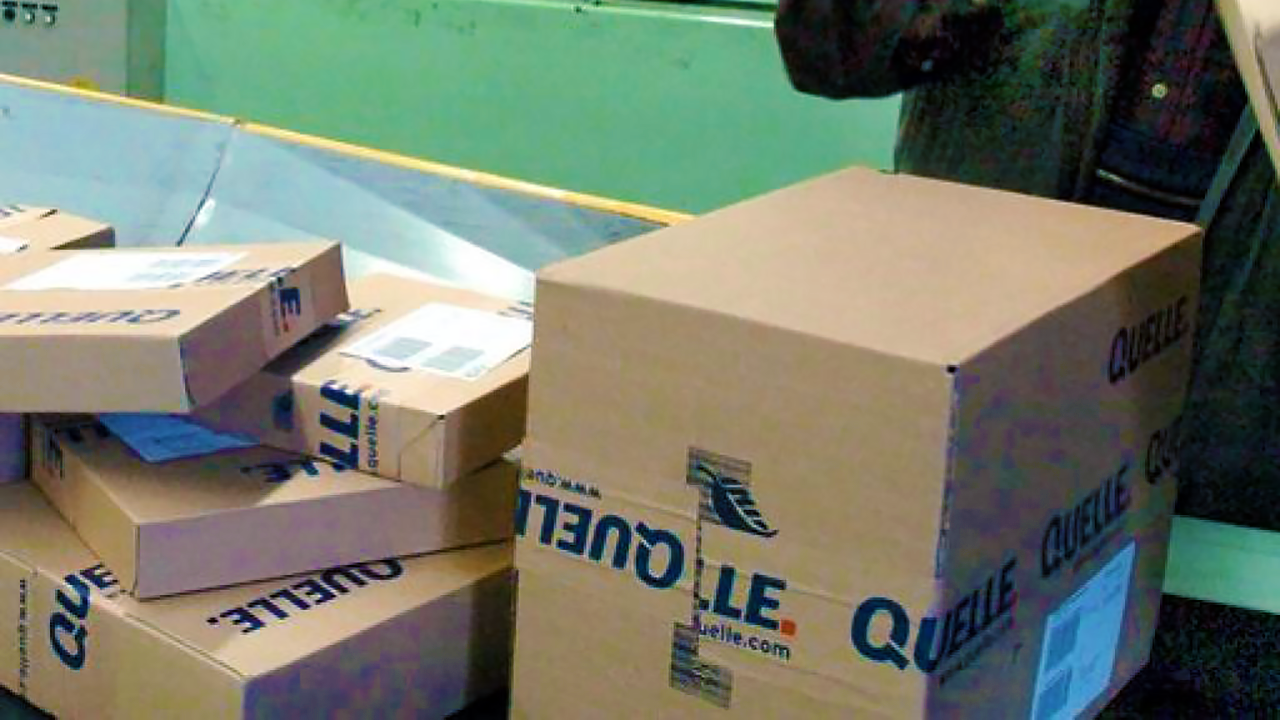
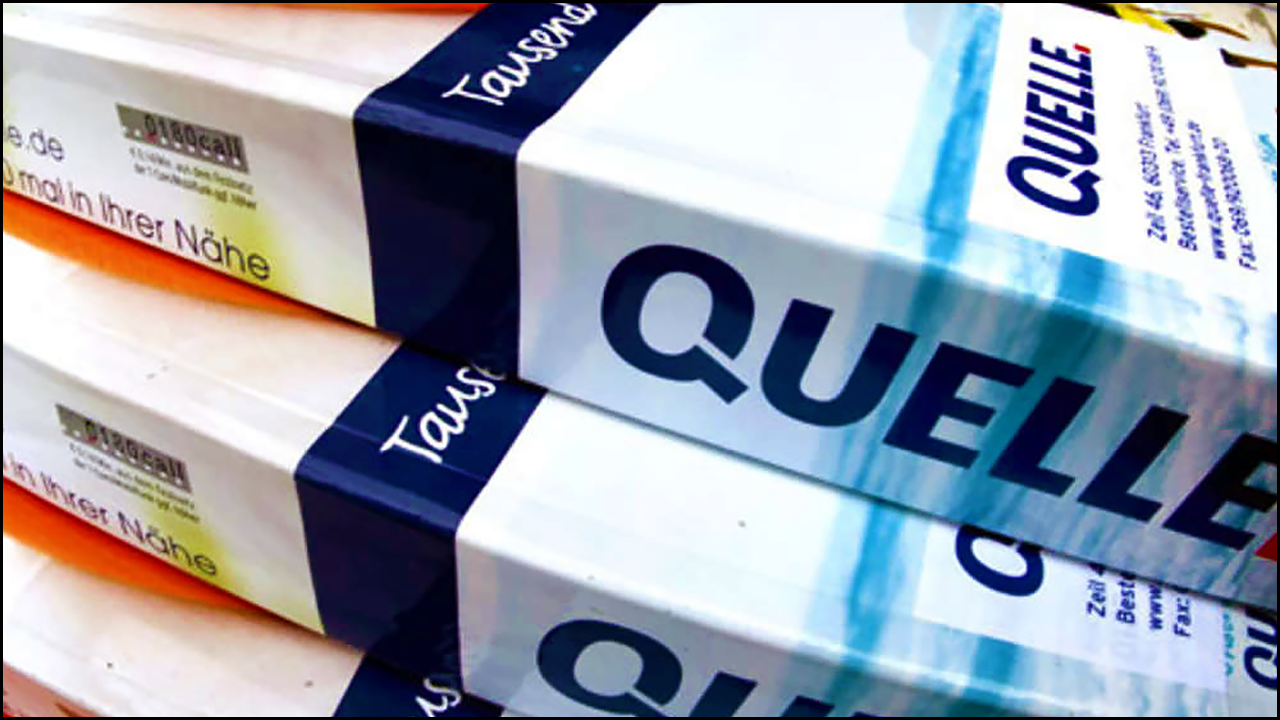
Usually twice a year a popular, richly illustrated catalog was published, not only in Germany, but also in the Netherlands, France, Belgium, Austria, Italy, USA and Switzerland.
Foto-Quelle story and stories
In 1957, Foto-Quelle was founded as a subsidiary of the Quelle mail order company in Fürth. The miracle began with three extremely cheap discontinued models of proven cameras. Later, Foto-Quelle became the largest photo house in the world and, at the height of its success in the mid-1980s, published the almost encyclopedic photo catalogs for France, Holland, Belgium (French and Flemish editions!), The USA, Austria, Italy , Switzerland (in German and French).
 In 1957, according to the company’s review, the proud German camera industry was not (yet) ready to supply the newcomer with their popular products. And so Lothar Schmechtig, founder and long-time boss of Foto-Quelle, found suppliers in Japan, Hong Kong and the USA.
In 1957, according to the company’s review, the proud German camera industry was not (yet) ready to supply the newcomer with their popular products. And so Lothar Schmechtig, founder and long-time boss of Foto-Quelle, found suppliers in Japan, Hong Kong and the USA.
In 1961 the Revue house brand was invented, the logo of which soon adorned millions of cameras, lenses, projectors and flash units. It was an unexpected success. Ten years after its founding, Foto-Quelle exceeded the 100 million mark in sales, founded photo laboratories, founded the Apollo eyewear shops and thus became the “jewel of the Quelle group”.
In the meantime, Foto-Quelle no longer has to source its cameras only from Minolta, Mamiya, (Japan), Alpa (Switzerland), the state-owned companies of the GDR or the Soviet Union, but is also supplied by Agfa, Balda, Regula-King, Leidolf or Lipca – only the cameras of Franka from Bayreuth are searched in vain in the catalogs of Foto-Quelle.
From Schickedanz to Arcandor
 In early 1975, Grete Schickedanz joined the newly formed Gustav and Grete Schickedanz Holding KG as a personally liable partner. She was committed to social improvements in her company. Her initiative included the construction of an old people’s home and a kindergarten in Fürth. In addition, she enforced an advanced retirement pension scheme for Quelle employees, which was only legally enshrined years later.
In early 1975, Grete Schickedanz joined the newly formed Gustav and Grete Schickedanz Holding KG as a personally liable partner. She was committed to social improvements in her company. Her initiative included the construction of an old people’s home and a kindergarten in Fürth. In addition, she enforced an advanced retirement pension scheme for Quelle employees, which was only legally enshrined years later.
Grete Schickedanz was awarded the Grand Federal Cross of Merit (1976) with star (1981) and shoulder band (1991), the Bavarian Order of Merit (1979), the honorary senatorial status of the University of Tübingen (1978), the professorial status of the Republic of Austria (1981) , the Golden Citizen’s Medal from Fürth (1978) and honorary citizenship from Fürth (1981) and Hersbruck (1981).
After Gustav Schickedanz’s death on March 27, 1977, Grete Schickedanz took over the management of the Quelle mail order company. In spring 1983 Grete resigned from her management and supervisory posts.
The entrepreneurial interests of her daughter Madeleine Schickedanz were subsequently taken over by her first husband Hans-Georg Mangold, whom she had married in 1965, and later by her second husband Wolfgang Bühler, who worked in the company management until the divorce in 1997. From 1977 to 1989, the husband of the daughter Louise, Hans Dedi, was also on the company management. In 1999 Quelle was converted into a public limited company (Quelle Schickedanz AG & Co.) and merged with the Karstadt AG department store group to form KarstadtQuelle AG, from 2007 Arcandor AG.
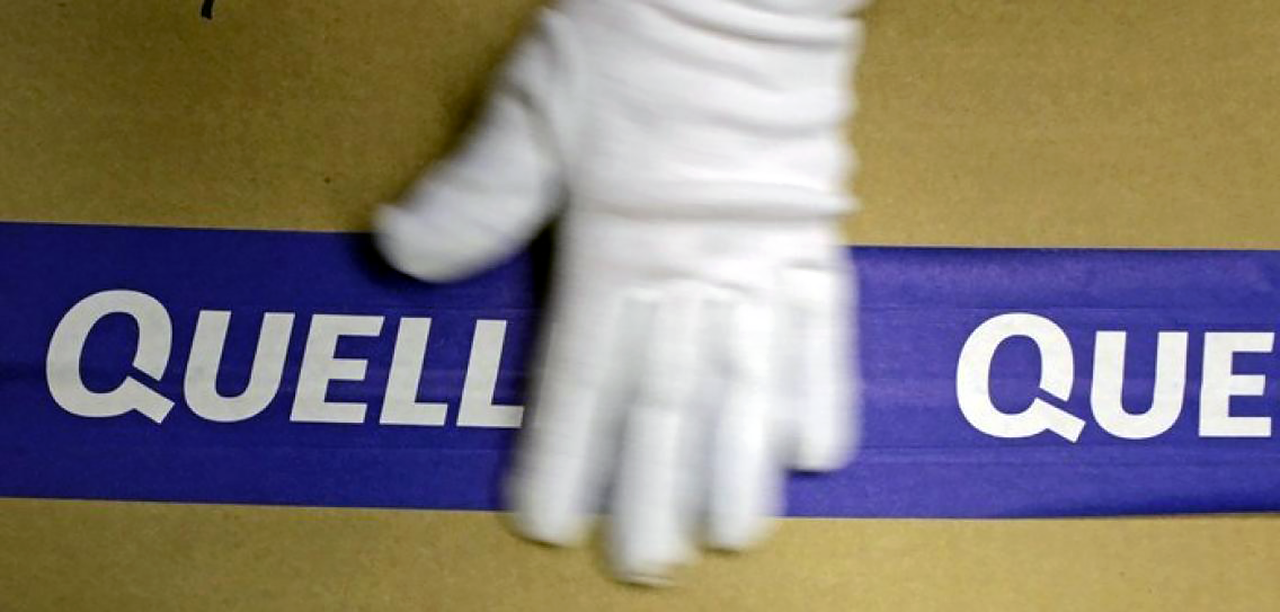
Source suppliers feel cheated after the bankruptcy. Have the suppliers been betrayed?
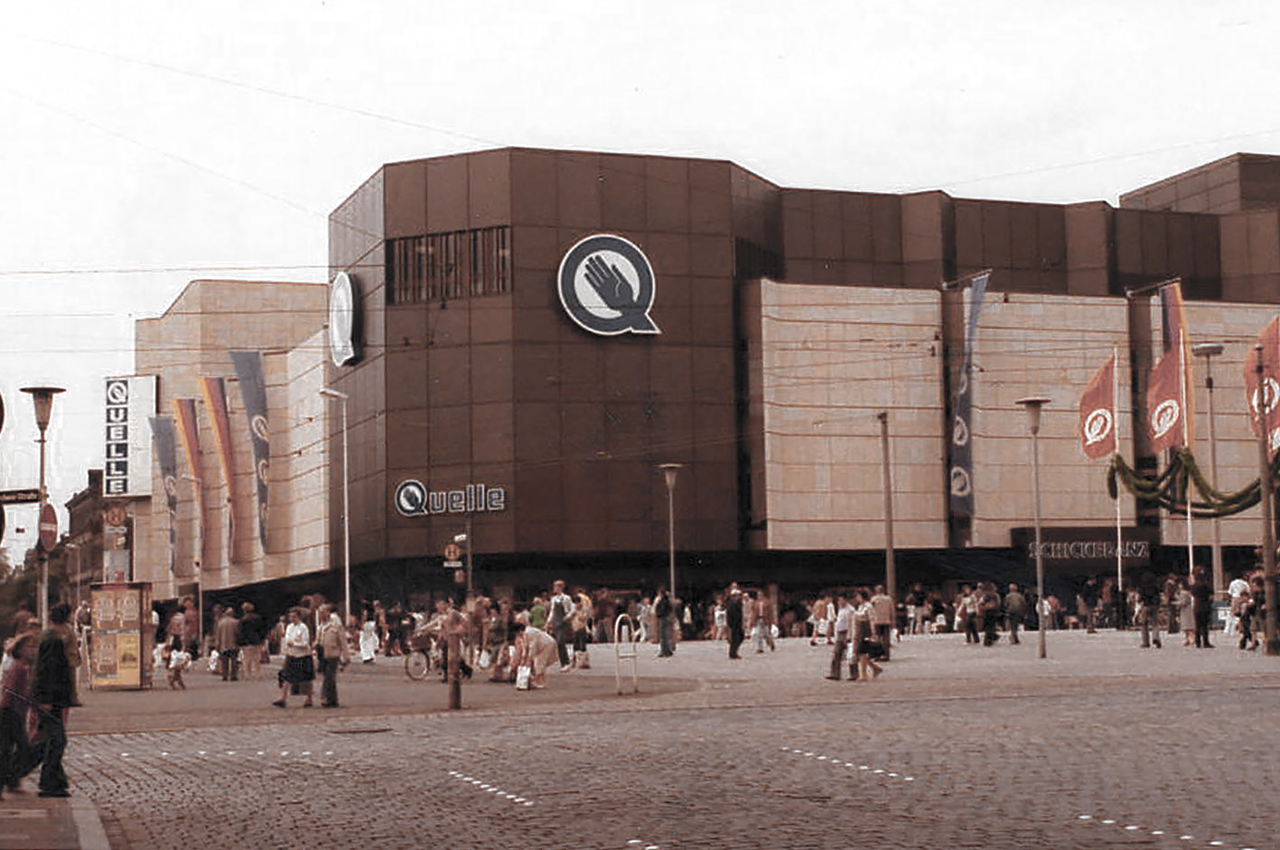
The Fürther Quelle department store, around 1990
THE inevitable END
According to the Arcandor Group, Quelle AG became Quelle GmbH on January 1, 2006. Konrad Hilbers led the company as chairman of the management, assisted by the second managing director Wolfgang Binder. Quelle was the largest company in the Arcandor mail-order group Primondo, which has bundled all of the group’s mail-order activities since March 2007.
On June 9, 2009, Quelle GmbH Germany filed for bankruptcy; on November 16, 2009, the largest foreign subsidiary, Quelle AG Austria, filed for bankruptcy.
The source naming rights were purchased in November 2009 from a competitor, the Otto Group; the business unit Foto Quelle and the brand Revue were acquired by the ORWO Net GmbH. ORWO Net itself is a part of the former Filmfabrik Wolfen (Orwo).
Today Foto Quelle is a service provider for photo prints, photo books, calendars, etc..
In August 2011, an online marketplace was set up at www.quelle.de, where retailers could offer their goods. Due to a lack of success, the online marketplace was discontinued on May 1, 2013. Since May 2, 2013, www.quelle.de has been a universal mail order company.
The Quelle Organization
After the story of the rise and fall of the Photo department of the Quelle company, it is appropriate to paint a picture of the total Quelle-organization.
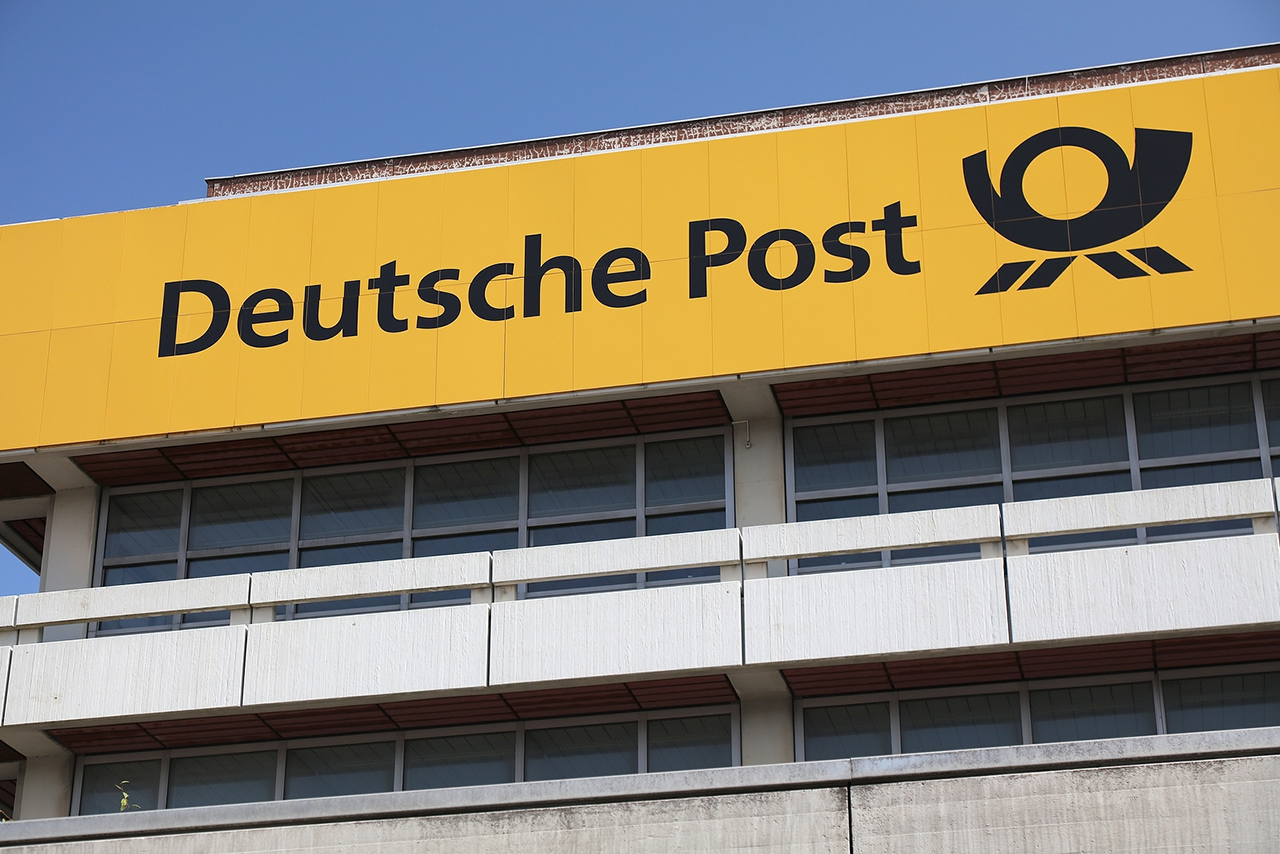
Quelle was by far the largest customer of the Deutsche Post.
Locations and sales channels of the Quelle Company
The Quelle company was largely based in Fürth and Nuremberg (Bavaria) and in Leipzig (Saxony) and employed around 8,000 people across Europe. This included the employees of the domestic subsidiaries (e.g. Profectis, Foto-Quelle, SB-Gross Handels-GmbH) and the subsidiaries abroad (Estonia, Greece, Italy, Croatia, Latvia, Lithuania, Poland, Austria, Romania, Russia, Switzerland , Slovakia, Slovenia, Czech Republic, Turkey, Ukraine and Hungary).
A large part of the mail order business was handled by so-called bulk buyers. Quelle gave discounts when multiple customers or families joined together for a shipping order. This developed into a special sales channel heavily promoted by the company, which eventually led to small, privately run shops. Selling on credit was also very important. Small loans were granted by the affiliated bank (initially Noris Kaufhilfe, later Norisbank or Noris Consumer Bank GmbH) without major formalities and pledges.
Quelle maintained 18 national companies (including Germany). Three subsidiaries (Profectis, Foto Quelle and SB-Gross Handels-GmbH) supported the core business.
Quelle was one of the largest customers of Deutsche Post, because (in contrast to Hermes of the Otto mail order company) it did not have its own parcel delivery company. Large articles that could not be sent by post were brought to the customer via forwarding agents. Quelle saw itself as a multi-channel company with the sales channels e-commerce, catalog, shops, mobile phone and the teleshopping channel HSE24.
Locations and sales channels of the Quelle Company
Shops
The Quelle partner branches, formerly known as “Quelle agencies”, were particularly well known. Since 2004 their number has been reduced from 6,000 to 1,600 (as of 06/2009). They were legally independent retail stores on a commission basis.
Department stores
Until the 1980s, Quelle was one of the five major German department store chains at the time. Locations included Fürth, Nuremberg, Berlin (Wilmersdorfer Strasse and Karl-Marx-Strasse), Hamburg (Elbe shopping center) and Bielefeld. Some of the department stores were continued from Hertie Waren- und Kaufhaus GmbH from the early 1990s.
In addition, technology shops (“Quelle-Technorama”) were developed in around 120 cities, which later also took over parts of disbanded department stores. In the department stores and technical shops, the full range could be ordered from the catalogs and the goods could then be picked up free of charge (order acceptance).
There were special stores (“Quelle-Fundgrube”) for the sale of defective and/or exchange goods from the mail order business.
Catalogs
The Quelle main catalog had a circulation of around eight million copies in the autumn / winter season 2009 and cost 20 million euros to manufacture. In addition, Quelle Germany published over 20 special catalogs, namely:
- Photo Quelle (Revue): according to Quelle, the “largest photo house in the world”;
- Healthier living with medical and nursing care products;
- Bouquets, similar to Fleurop, but as an order service;
- The new kitchen, kitchen catalog and separate built-in devices catalog;
- My furniture discounter;
- Play along, toy catalog;
- My size;
- Men’s style;
- Madeleine Mode (named after Madeleine Schickedanz, the daughter of the owner);
- Jewelry and watches;
- My baby & me.
In addition to monthly catalogs, there were also irregularly sent campaign catalogs with reduced prices, discontinued goods and remaining stocks. From time to time regular customers got catalogs which had a hard cover.
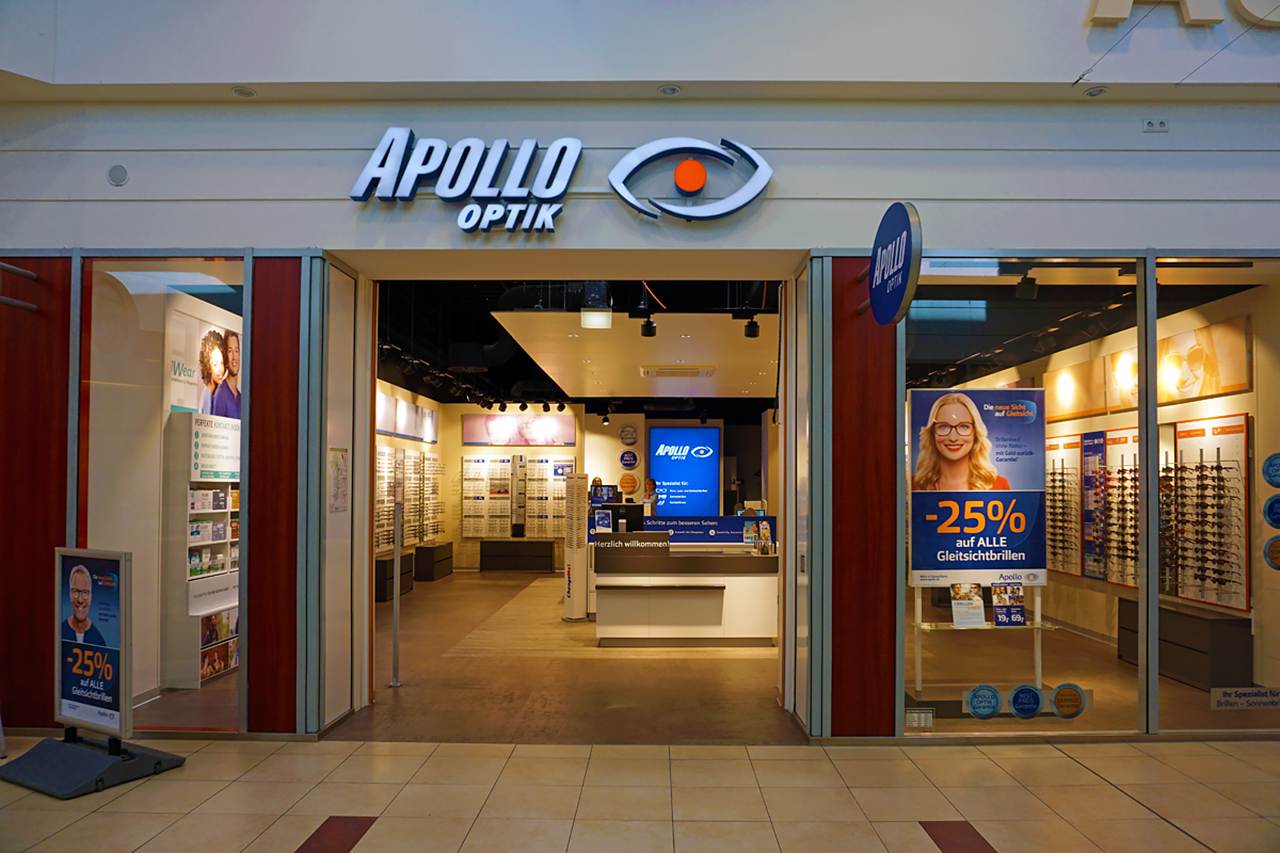
Apollo-Optik is an optics company founded in 1972 with around 900 branches in Germany (as of March 2023). Apollo was registered as a trademark of Foto-Quelle in 1969. Apollo became an independent company in 1972. The main focus of the company is the sale of glasses, sunglasses and contact lenses, and hearing aids are also sold at around 80 locations.
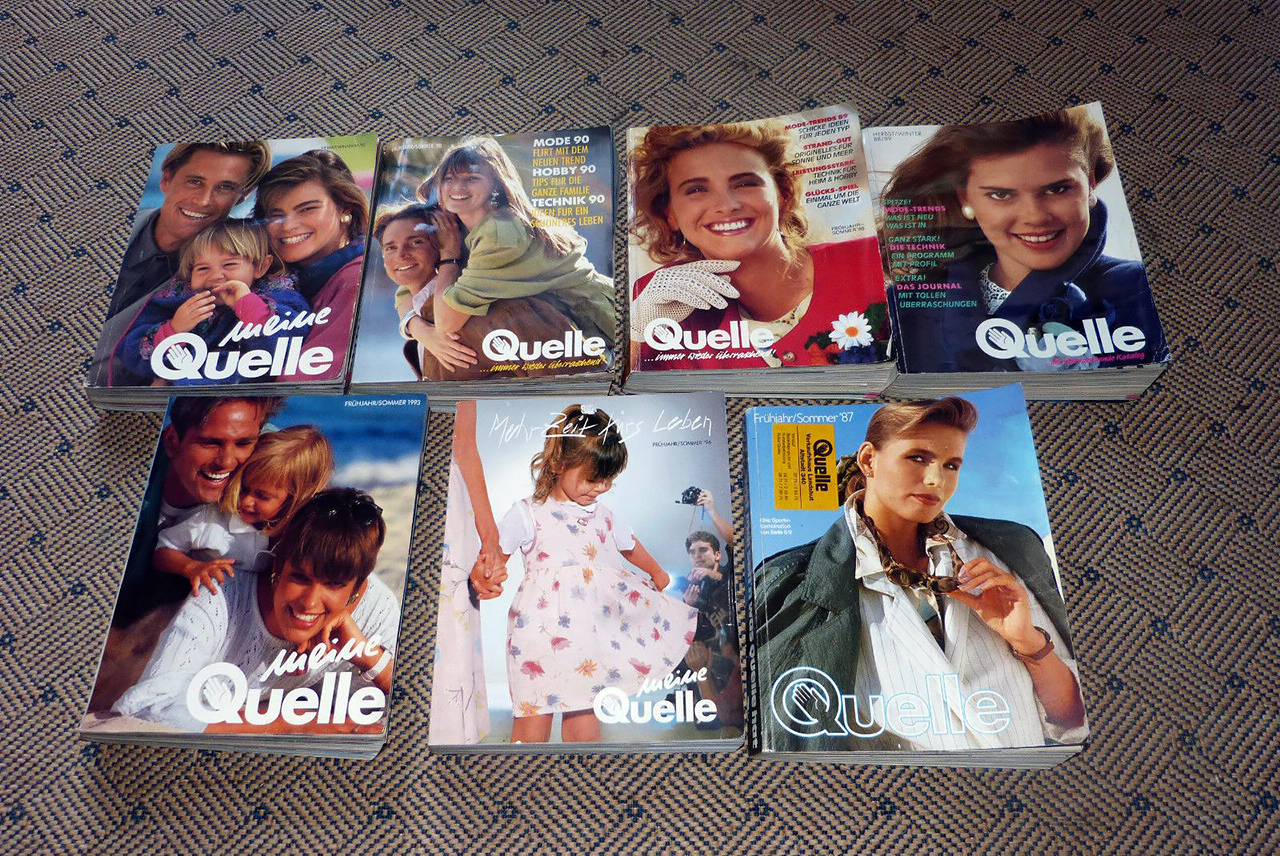
The main Quelle catalog had a circulation of around eight million copies in the 2009 autumn/winter season and cost 20 million euros to produce. In addition, Quelle Germany published over 20 special catalogues. In addition to monthly catalogues, there were also campaign catalogues, which were sent out irregularly, with reduced prices, discontinued goods and remaining stocks. From time to time, regular customers received catalogs that had a hard cover.
Own brands
In addition to branded articles, Quelle also sold numerous own brands. The underlying products were mostly supplied by well-known manufacturers and were often simplified in design and technology for the Quelle brands in order to justify a lower price.
Well-known examples are:
- Quellux: own brand before the introduction of Privileg 1964;
- Privilege: From 1964, mainly a brand for household and kitchen appliances, but also for office equipment such as typewriters and calculators;
- Universum: consumer electronics and multimedia;
- Simonetta: radio and tape recorders;
- Good Play: toys;
- Casamaxx: furniture.
Subsidiaries
Over the course of time, Quelle founded numerous subsidiaries with which other products and services were offered in addition to the mail order business. Some of them later became independent companies.
- Photo Quelle: photo editing and photo articles. Taken over by ORWO in 2009.
- Reise Quelle: tour operator. Was integrated into the travel subsidiary Thomas Cook after the integration into the Arcandor group.
- Norisbank: Credit bank originally founded to grant small loans to finance Quelle articles, became independent later and was taken over by Deutsche Bank.
- Profectis technical customer service: Repair service for Quelle products of all kinds, later also for products from Neckermann and Karstadt. Sold after the bankruptcy of Quelle and continued as an independent company.
- SB-Gross Handels-GmbH: wholesale company
- Apollo-Optik: founded in 1969 as the optics brand of Foto-Quelle; Self-employed in 1972.
Related companies
In addition to Quelle GmbH, other companies also operated under the name “Quelle”, including:
- the Linz-based Quelle AG,
- the St. Gallen-based Quelle Versand AG,
- the Essen-based Karstadt Quelle Information Services GmbH
- and other companies in the service and real estate sectors.
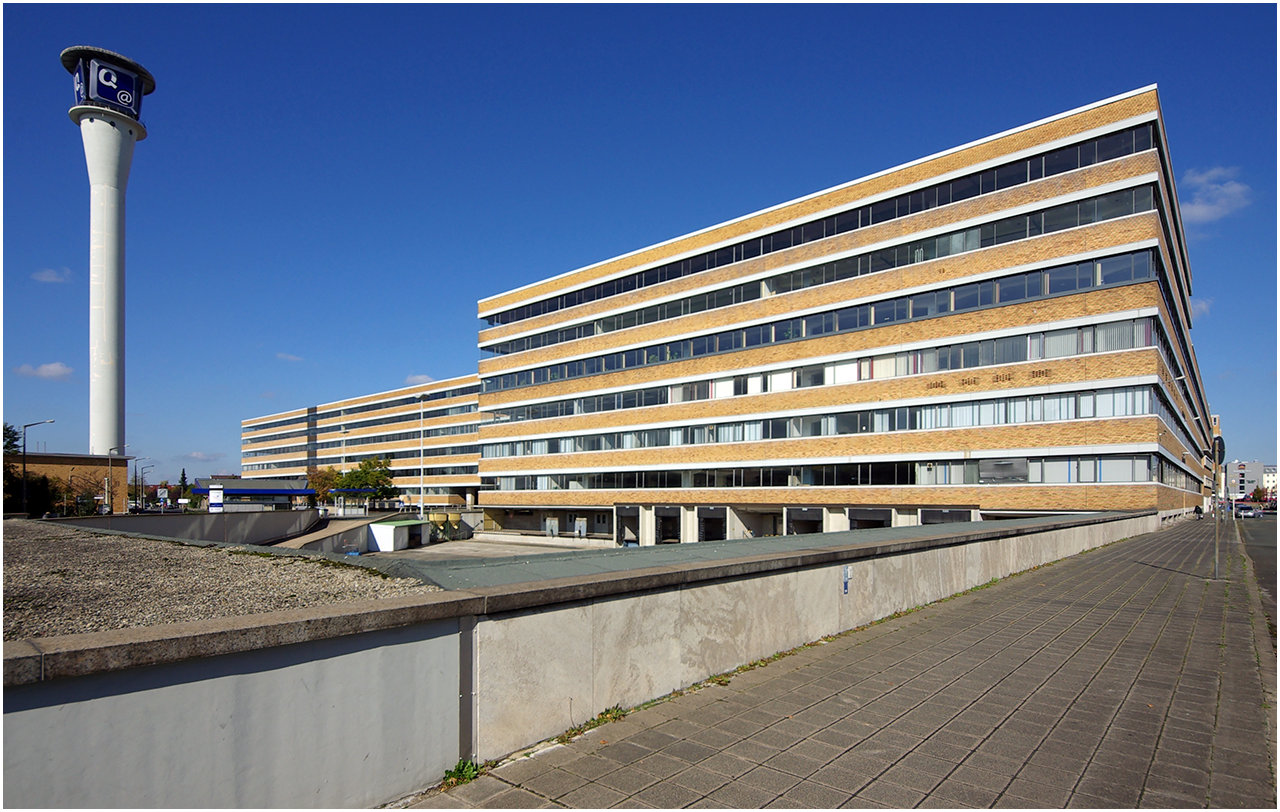
The Quelle mail-order and department store in Nuremberg on Fürther Strasse has been a listed building for many years. The last day of sale was the fourth Saturday of Advent (December 19, 2009) in 2009.
Before that, the insolvency administrator tried to sell the remaining goods with a value of € 50 million to third parties. The last employees were fired on February 28, 2010.
The majority of the building has been vacant since 2009; until 2015, just under 30,000 m² had been let for a school and artist studios for temporary use. Since 2017, the building has been completely empty and cordoned off with an almost 2 km long construction fence. The building was sold to the Portuguese shopping center operator Sonae Sierra in 2015 as part of a foreclosure sale for € 16.8 million.
With 250,000 m², the building is the second largest vacant property in Germany after Berlin-Tempelhof Airport. In June 2018, Sonae Sierra sold the building to the Düsseldorf real estate developer Gerchgroup.
All previous plans to revive the empty building have so far failed due to either financing or monument protection. According to initial information, the Gerchgroup wants to convert the building primarily for residential and commercial use.
The area’s former boiler house is to be excluded from the development and to remain in use by the Quelle artists’ collective.
comprehensive survey of FOTO-QUELLE cameras
Foto-Quelle had all the products a photographer could wish for.Of course there was a large selection of cameras from all well-known manufacturers.Since, according to their own statements, it was not so easy to get hold of the products from the big brands at the beginning, they started selling cameras and accessories under their own brand.
This is how the “Revue” brand was conceived.
Products from different manufacturers were then sold under this private label. The principle of the own or house brand can be found in all areas of consumer life today and is often a great financial success for the respective retailers, but at the time the great success was somewhat surprising.
With the great success, the range was then expanded and new suppliers were found. The camera models were obtained from many different suppliers and sold worldwide and of course especially to Germany. Camera suppliers included Minolta, Mamiya, Balda, Cosina and Agfa.
Especially in the 1970s, many models were obtained from the GDR. For companies like Pentacon, the production for Foto-Quelle/Revue and Photo Porst and the export to West Germany was an important source of Divis. Of course, the photo dealers benefited from much lower purchase prices than they would have had to pay from some other manufacturers in the West.
Most Revue cameras are also available under the manufacturer’s name. Often only the name on the camera body differs. Depending on the model, there were sometimes slight changes and modifications.

35mm cameras
- Revue-3 original camera FED 3
- Revue 4 original camera FED 4
- Revue 10 original camera Zorki 10
- Revue 25
- Revue 35 original camera Haking Halina Rolls
- Revue 35 AF
- Revue 35 Automat original camera Balda Baldinette II automatic
- Revue 35 BL original camera Franka 125 L
- Revue 35 BS original camera Balda Baldinette IIb
- Revue 35 CC original camera Chinon Bellami
- Revue 35 FC original camera Halina Micro 35
- Revue 35 LK original camera Franka 500 LK
- Revue 35 M original camera Togodo Meikai EL
- Revue 35 N original camera Beier Beirette v
- Revue 35 Super-Automatic original camera Balda Super Baldamatic
- Revue 35 XC
- Revue 35 XE original camera Balda CE 35
- Revue 35 Compact Electronic original camera Vivitar 35EM
- Revue 35 Sport original camera Chinon 35 (silver, with self-timer like Chinon 35EE)
- Revue 100 C (original) original camera King Regula Picca C
- Revue 100 C (later) original camera Halina 150
- Revue 130 C
- Revue 135 Symbol original camera LOMO Smena Symbol
- Revue 150 CF original camera Halina 160
- Revue 180 CMA
- Revue 190 SMA
- Revue 200 C original camera King Regula Picca CB
- Revue 250 B original camera Regula Sprinty C (?)
- Revue 250 CS original camera Regula Sprinty C (?)
- Revue 250 F
- Revue 250 MF original camera Haking Halina Speedy 33
- Revue 280 AF Zoom
- Revue 300 C original camera King Regula Picca CLK
- Revue 350 F original camera Haking Autoflash 35
- Revue 350 F2
- Revue 350 FM original camera Haking Halina MW 35E
- Revue 400 C original camera King Regula Picca-mat
- Revue 400 L
- Revue 400 S original camera Vivitar 35EE
- Revue 400SE original camera Vivitar 35ES
- Revue 400SE 25
- Revue 410 AF
- Revue 411 AF (411 AF = 410 AF + remote control)
- Revue 450AF original camera Haking Halina AF700
- Revue 450 EF original camera Chinon Monami 35 FS
- Revue 500AF original camera Chinon 35F-A
- Revue 500AF Super original camera Mamiya U AF
35mm cameras continued
- Revue 500EF original camera Chinon 35F-EE
- Revue 520 AF
- Revue 530 AF
- Revue 540 AF
- Revue 550 original camera Haking Halina AF800
- Revue 560 AF
- Revue 600 AF motor original camera Chinon 35F-MA Infrafocus
- Revue 600 AF Zoom original camera Chinon Zoom 60 mini
- Revue 650 Auto Focus original camera Chinon 35FS-A
- Revue 700 EL original camera Chinon 35 (black, with self-timer like Chinon 35EE)
- Revue 700 SEL original camera Chinon 35 (black, with self-timer like Chinon 35EE, 700 SEL = 700 EL + flashlight Revue TRON SEL)
- Revue 735 AF Zoom
- Revue 750AF original camera Chinon Auto 1001
- Revue 770AF original camera Kyocera Campus 70
- Revue 780AF original camera Yashica Zoomate 80
- Revue 825AF-D
- Revue 900 AF Multi original camera Chinon Auto 3001 Multifocus
- Revue 900 AF Zoom Multi original camera Chinon Auto 6001
- Revue 950AF original camera Kyocera Zoomtec 90s
- Revue 1000AF Super Zoom original camera Samsung AF Zoom 1050
- Revue AF 35 mini original camera Chinon Belami AF
- Revue Amigo 2 original camera Konica Big Mini Jr BM-20
- Revue Amigo 3 Date original camera Konica Big Mini ?
- Revue Auto Half S original camera Ricoh Auto Half S
- Revue Auto RS original camera Lomo Sokol Automat
- Revue Auto S original camera Konica Auto S
- Revue Auto S2 original camera Konica Auto S2
- Revue Auto S22 original camera Konica Auto S2 “New” or “EL”
- Revue AUTO-Matic original camera Konica EE-Matic
- Revue Automatic C
- Revue AUTO-Matic C Deluxe 2 original camera Konica EE-Matic Deluxe F
- Revue AW600 original camera Chinon Splash AF
- Revue AW700 P
- Revue Electronic C original camera Cosina 35
- Revue Flash
- Revue HC35 original camera Meikai HC35
- Revue Horizont original camera KMZ Horizont (I)
- Revue Mini Shot
- Revue Mini Compact
- Revue M35 Motordrive
- Revue N original camera Beier Beirette
- Revue Panorama original camera Ansco Pix Panorama
- Revue Quickshot
- Revue Slimshot
- Revue Zoom 28 AF
- Revue Zoom Date original camera Flash Fujica Zoom Date
35mm SLR cameras
- Revue AC 3 original camera Chinon CE-4s
- Revue AC 3s original camera Chinon CE-4s (with elements of Chinon CE-5 like autofocus contacts)
- Revue AC 4 original camera Chinon CP-5 Twin Program
- Revue AC 5 original camera Chinon CP-7m
- Revue AC-6AF original camera Chinon CP-9AF
- Revue AC 7 original camera Yashica 107 MP
- Revue AC 8 original camera Yashica 108 MP
- Revue ALPA 10d original camera ALPA 10d
- Revue AM original camera Mamiya ZE-2
- Revue AT-m original camera Cosina CT9
- Revue Auto-Reflex original camera Konica Autoreflex
- Revue Auto-Reflex P original camera Konica Autoreflex P
- Revue Autoreflex TTL original camera Konica Autoreflex T
- Revue Auto-Lux 35 original camera Mamiya Auto-Lux 35
- Revue AX3 original camera Chinon CA-4s
- Revue BC 2 original camera Pentacon Praktica BMS
- Revue DF-300 original camera Seagull DF-300
- Revue FX4 original camera Pentacon Praktica PL nova I B
- Revue ML original camera Pentacon Praktica MTL 5 B
- Revue Reflex Cds original camera Ricoh 35 Flex Cds
- Revue SC 3 original camera Chinon CM-4s
- Revue SC 4 original camera Cosina CT1 Super (black)
- Revue SC 4-m original camera Cosina CT1 Super (chrome)
- Revue SC5 original camera Cosina C1s
- Revue SC 5 auto original camera Cosina C2
- Revue Solar 100 original camera Cosina E1 Solar (=Ricoh XR Solar)
- Revue Superflex TTL original camera Chinonflex TTL
- Revue SR original camera Konica FP
- Revue TTL original camera Konica Autoreflex T
- Revue V6 original camera Petri Penta V6
- Revue X-4M original camera Mamiya ZE-X
35mm SLR revueflex cameras
- Revueflex original camera KMZ Zenit 3M
- Revueflex 1000 S original camera Chinon CS
- Revueflex 1000S TTL original camera Chinonflex TTL
- Revueflex 1001 original camera Chinon (chrome, exclusive design e.g. different prism housing)
- Revueflex 2000 CL original camera Chinon CX (chrome)
- Revueflex 2002 original camera Chinon CX II (chrome, exclusive design e.g. different prism housing)
- Revueflex 3000 SL original camera Chinon CX (black)
- Revueflex 3000 SM original camera Chinon CX II (black)
disc cameras
- Revue Disc F 1001
- Revue Disc F 2000
- Revue Disc F 2002
- Revue Disc MF 4004
- Revue Disc MFC 6006
35mm SLR revueflex cameras continued
- Revueflex 3003 original camera Chinon CX II (black, exclusive design e.g. different prism housing)
- Revueflex 4000 EE original camera Chinon CE Memotron
- Revueflex 4004 original camera Chinon CE II Memotron (black, exclusive design e.g. different prism housing, sold with 1.7/55 lens)
- Revueflex 5000 EE original camera Chinon CE II Memotron
- Revueflex 5005 original camera Chinon CE II Memotron (black, exclusive design e.g. different prism housing, sold with 1.4/55 lens)
- Revueflex AC1 original camera Chinon CE-3 Memotron
- Revueflex AC 2 original camera Chinon CE-4
- Revueflex ACX original camera Chinon CA-4
- Revueflex B original camera KMZ Zenit B
- Revueflex E original camera KMZ Zenit E
- Revueflex EE 303 original camera Cosina Hi-Lite ECL
- Revueflex EM original camera KMZ Zenit EM
- Revueflex LTL original camera Wirgin Edixa Prismaflex LTL
- Revueflex reflex BL original camera Pentacon Praktica LB
- Revueflex reflex TL original camera Pentacon Praktica LTL
- Revueflex S 200 original camera Pentacon Praktica L2
- Revueflex SC 1 original camera Chinon CM-1/AM-1/CM-3
- Revueflex SC 2 original camera Chinon CM-4
- Revueflex SD 1 original camera Chinon CS-4
- Revueflex SL original camera Pentacon Praktica super TL
- Revueflex SL 201 original camera Pentacon Praktica LB 2
- Revueflex SL 301 original camera Cosina 4000S (sold with 1.8/50 lens)
- Revueflex SLR original camera Chinon SLR
- Revueflex SM 302 original camera Cosina Hi-Lite 405
- Revueflex T original camera Cosina SLR
- Revueflex TL original camera Cosina 1000S
- Revueflex TL 1 original camera Pentacon Praktica MTL 3
- Revueflex TL 25 original camera Pentacon Praktica MTL 3, Praktica MTL 5
- Revueflex TL 202 original camera Pentacon Praktica LTL 3
- Revueflex TL 300 original camera Cosina 4000S (sold with 2.8/55 lens)
- Revueflex TTL original camera Petri FTX
120 film cameras
- Revue 6.6 original camera Salyut
- Revue 6×6 original camera Seagull 4A
- Revue C3 original camera Mamiya C3
- Revue C33 original camera Mamiya C33
- Revue Press original camera Mamiya Press
- Revue-Six
127 film cameras
- Optomax-S original camera Komaflex-S
subminiature cameras
- Revue 16 original camera Minolta-16 MG
- Revue 16KB
- Revue 250 Rapid
APS film cameras
- Revue X1 original camera Chinon AP700S
- Revue Z1 original camera Kyocera Ultima 300
110 film cameras
- Revue Pocket 10
- Revue Pocket 50 original camera Agfamatic 2008
- Revue Pocket 202
- Revue Pocket 205 original camera Minimatic
- Revue Pocket 250
- Revue Flash Pocket 300 original camera Agfamatic 3000 Flash Pocket
- Revue Pocket 303
- Revue Pocket 350 original camera Agfamatic 3008
- Revue Pocket 450 original camera Agfamatic 4008
- Revue Pocket Flash 25
- Revue Pocket FTM original camera Halina Telewide
- Revue Tele Pocket 150 original camera Agfamatic 1008 tele pocket
- Revue 300 TW
- Revue-matic 110
- Revuematic 110-X
126 film cameras
- Revue-matic 50 original camera Halina Speedoflash
- Revue-matic 100
- Revue-matic 101
- Revue-matic 110
- Revue-matic 150 EE
- Revue-matic 150 Electric
- Revue-matic 220
- Revue-matic 250
- Revue-matic 300 EE
- Revue-matic 330
- Revue-matic 350 CA original camera Bilora Bilomatic CA
- Revue-matic 440
- Revue-matic 500 original camera Minolta Autopak 500
- Revue-matic Super
- Revue-standard
- Revueflex TLS-C original camera Ricoh 126c-Flex TLS
instant cameras
- Revue Autofocus 660 original camera Polaroid Autofocus 660
- Revue Direct 700F original camera Keystone Wizard XF 1500
- Revue 600 original camera Polaroid OneStep 600
- Revue 640 original camera Polaroid One Step Flash
- Revue 1001 original camera Polaroid Land Camera 1000
digital cameras
- Revue DC 310
- Revue DC 800
- Revue DC 2300
- Revue DC 3330
- Revue DC 4300
- Revue DC 4400
- Revue DC 5100
FOUNDER: Telemaco Corsi
COMPANY NAMES:
1948: S.A.R.A.; 1955: S.A.R.A. went into liquidation; 1955: Etablissement Rectaflex International; 1957: production finally stopped.
COMPANY ADDRESSES:
1948: Via Barnaba Orlani 8A, Rome; 1955: Liechtenstein.
Manufactured in Rome, the Rectaflex is the only Italian-made 35mm SLR and was the world’s first series produced Pentaprism single lens reflex camera. It was produced from 1948 to 1958.
 The Rectaflex was the brainchild of Telemaco Corsi. Trained as a lawyer, Corsi was an enthusiastic photographer who had a dream of creating the perfect 35mm camera.
The Rectaflex was the brainchild of Telemaco Corsi. Trained as a lawyer, Corsi was an enthusiastic photographer who had a dream of creating the perfect 35mm camera.
To achieve his dream, he assembled a team of craftsmen and persuaded entrepreneurs to invest heavily in his company – S.A.R.A. A wooden prototype was shown in 1947, and again a prototype camera was displayed at the Milan Trade Fair in 1948 where it generated a great deal of interest. However, it was to be nearly another two years before the Rectaflex finally made it on to the market.
Made from die-cast alloy, the Rectaflex is a high-quality precision-made camera incorporating an eye-level pentaprism viewfinder, a focal-plane shutter and a bayonet lens mount.
The original Rectaflex is a 35mm SLR camera, made from die-cast alloy, with a focal plane shutter, having interchangeable wide diameter bayonet lens mount lenses, a pentaprism eye-level finder and a Rapid Return Mirror. A large range of lenses was available by leading manufacturers such as Angenieux, Schneider and Zeiss.
The Rectaflex was in production and on sale in the autumn of 1948. It was the first SLR camera to be equipped with a pentaprism. There has been some uncertainty about the Rectaflex being first or second pentaprism SLR to be produced. Marco Antonettos very thorough research in 2002 clarified that the Rectaflex was the first. The second 35mm SLR with a pentaprism was the Contax S introduced in 1949.
The expected and hoped-for success did not materialize
Despite a favourable reception, the Rectaflex was not a commercial success. In 1954, Amateur Photographer magazine reported that the camera ‘was said to be in wide use by the American Army’. In 1955, however, the cancellation of a contract for 30,000 cameras to be supplied to the American military brought about a financial crisis and caused the company to go into liquidation.
A new Rectaflex company was subsequently formed – Etablissement Rectaflex International – based in the Principality of Liechtenstein and controlled partly by the Prince of Liechtenstein. Telemaco Corsi did not play any role in it. They launched a Rectaflex 40000, often called Rectaflex Liechtenstein.
The Liechenstein Rectaflex incorporated a number of minor design changes, most notably a re-shaped pentaprism cover which carries the Liechtenstein Royal Crest. The number produced is unknown and it seemed to be plagued by design faults. Some prototypes are known with internal diaphragm pre-selection. The last examples of the Rectaflex were beset by design and technical problems, and production seems to have finally stopped in about 1957.
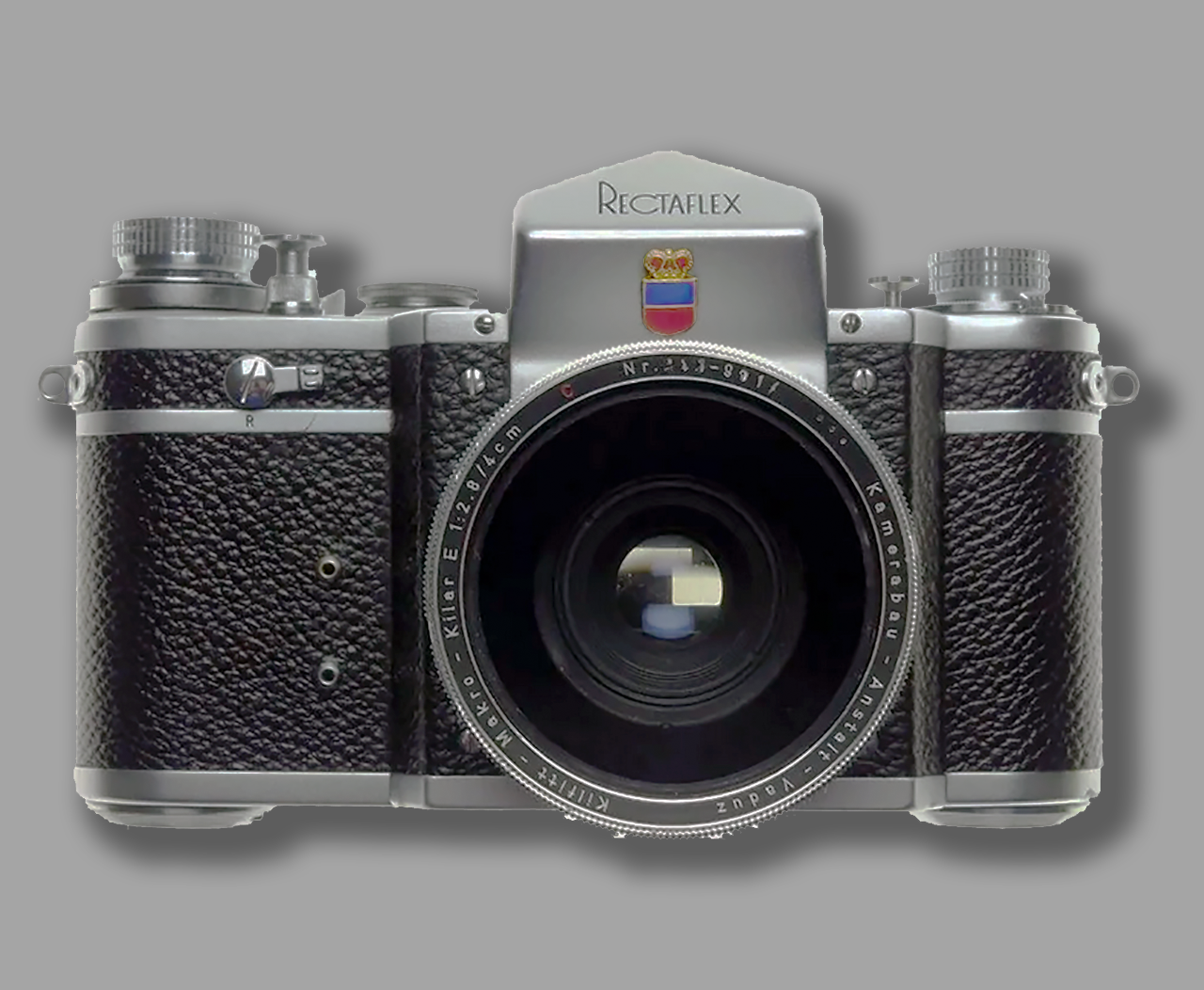
In 1956 the Etablissement Rectaflex International launched a Rectaflex 40000, often called Rectaflex Liechtenstein. It had a reshaped pentaprism cover, with the Liechtenstein blason, and other minor changes. The number produced was less than 200 and it seemed to be plagued by design faults. Some prototypes are known with internal diaphragm preselection. None of the Liechtenstein cameras were ever sold
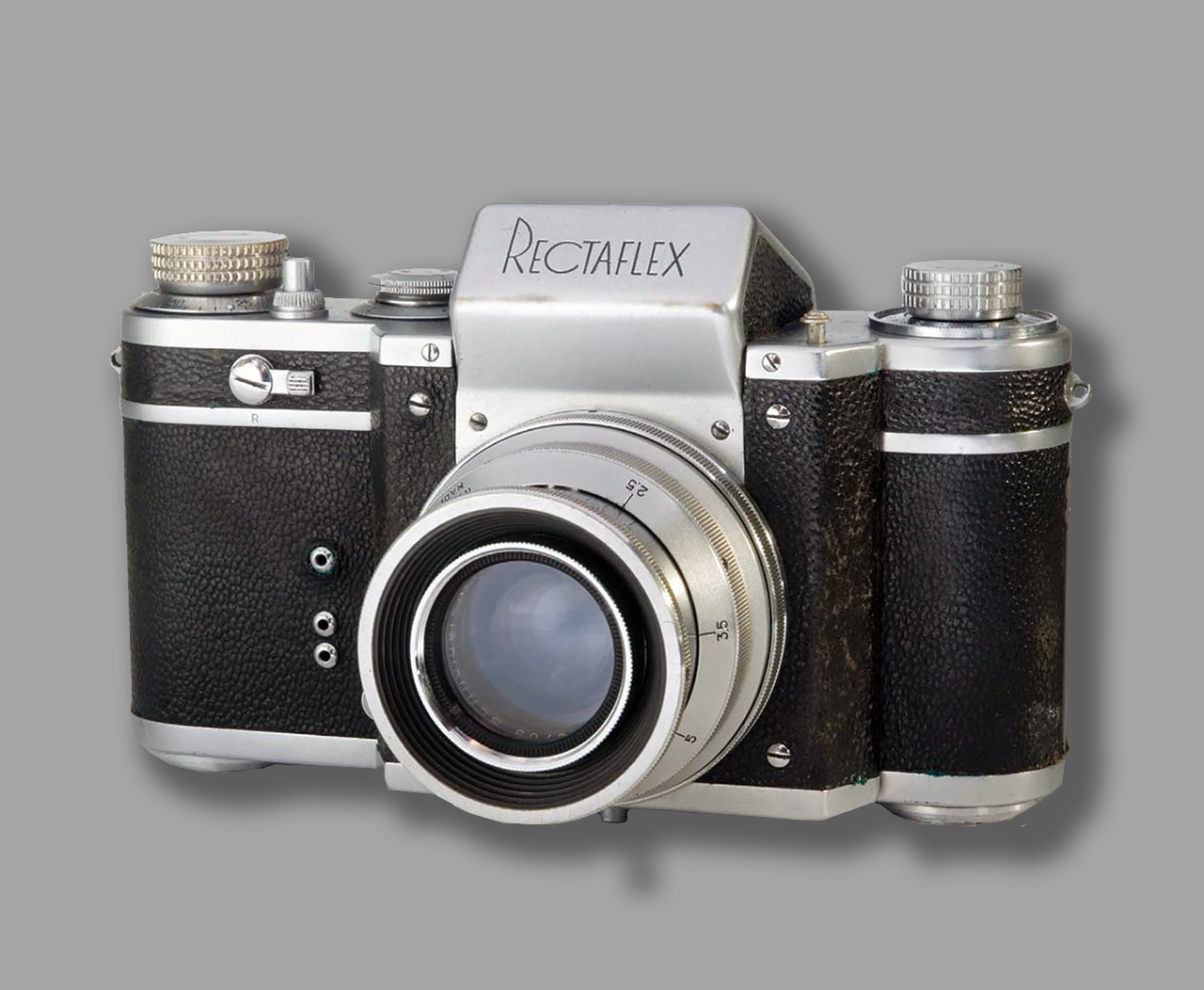
A closer look at the Camera production
The first prototype of the Rectaflex was a wooden mock-up, with a mirror eye-level finder, giving a left to right inverted image. For vertical pictures, the image was upside down which was a major drawback. This was corrected with a roof prism before the 1948 Milano show, and the pre-series model was called Rectaflex Standard 947, and had a fully working pentaprism as well as a focal plane shutter from 1s to 1/1000, synchronised at 1/25.
The first production model was the Rectaflex series 1000 (serial number 1000 to 1999), quite similar to the pre-series model. The Rectaflex series 2000 (serial number 2000 to 2999) has the split-image device added to the focusing screen. Note that Rectaflex series 1000 and Rectaflex series 2000 were not official designations, but is a way to recognize the variants by way of their serial number. The B 3000 series was produced from June 1949, and was numbered from 3001 to some 3970.
The Rectaflex series 4000 (serial number 4000 to 5500) has no film cutter and a modified A/R lever. Only the Rectaflex Standard 947 and the Series 1000 had a film cutter, and when the bulk of the Series 1000 was converted to the first series Junior the cutter was removed, the hole in the rewind side top cover was fitted with a plug and the slotted film gate was replaced.
The Rectaflex series 16000 (serial number 16000 to 19000) has a triple sync plug and a film reminder under the rewind knob. The Rectaflex series 20000 (serial number 20000 to 23000) has an internally modified shutter and a reinforced bayonet mount. This was only a test series.
The Rectaflex series 25000 (serial number 25000 to 32000) was produced from December 1952 and had a modified shutter to 1/1300, and two sync plugs only. From serial number 29500 to 31500 it was called 30000 series and had a new flattened release button. It is sometimes called Rectaflex 1300, because of its shutter speed, the previous series being called Rectaflex 1000. An interesting feature of Rectaflex cameras with slow shutter speeds was the eight jewel slow speed escapement, possibly the only camera with such a feature. Production in Rome ended early 1955.
 The Recta was a prototype rangefinder camera based on the Rectaflex. It had a focal plane shutter from 1s to 1/1000 and a 39mm Leica mount. Six were produced, with serial number 1001 to 1006. The known standard lens was the Isco Westar 50/3.5. The Recta was designed by Telemaco Corsi in 1953, before the demise of Rectaflex.
The Recta was a prototype rangefinder camera based on the Rectaflex. It had a focal plane shutter from 1s to 1/1000 and a 39mm Leica mount. Six were produced, with serial number 1001 to 1006. The known standard lens was the Isco Westar 50/3.5. The Recta was designed by Telemaco Corsi in 1953, before the demise of Rectaflex.
The Rectamatic was the project of an advanced 35mm SLR camera, designed by Telemaco Corsi at the beginning of the 1960s, as a successor of the Rectaflex.
The Rectaflex Junior was a Rectaflex series 1000 transformed with a simplified focal plane shutter from 1/25 to 1/500. The Rectaflex series 1000 had reliability trouble, so an important number (between 500 and 1000) were converted.
The Rectaflex Gold was a Rectaflex series 25000 was the rarest of all Rectaflex cameras. It was a series of gold-plated cameras, covered with lizard skin, which were made as special gifts for prominent figures such as Pope Pius XII, President Dwight D. Eisenhower, Winston Churchill and King Farouk of Egypt. In all, fewer than ten Gold Rectaflexes are thought to have been produced.
 Introduced in about 1952, the Rectaflex Rotor was a Rectaflex series 25000 version of the camera fitted with a three-lens rotating turret, similar to those used on cine cameras.
Introduced in about 1952, the Rectaflex Rotor was a Rectaflex series 25000 version of the camera fitted with a three-lens rotating turret, similar to those used on cine cameras.
Three lenses of different focal lengths (typically 35mm, 50mm, 90mm or 135mm) could be brought into use as required by simply rotating the turret. A hand-grip incorporates the shutter release and a rifle-butt holder was fitted for steadying the camera.
Only about 200 to 300 Rectaflex Rotors are estimated to have been made. In addition, some Rectaflex from various series were independently converted to the Rectaflex Rotor specifications.
A special version of the Rectaflex series 25000 existed with 24×32 format and a microscope adapter, for scientific use.
Rectaflex Liechtenstein cameras
They launched a Rectaflex 40000, often called Rectaflex Liechtenstein. It had a reshaped pentaprism cover, with the Liechtenstein blason, and other minor changes.
The number produced was less than 200 and it seemed to be plagued by design faults. Some prototypes are known with internal diaphragm pre-selection. None of the Liechtenstein cameras were ever sold, and the company went down in 1958.
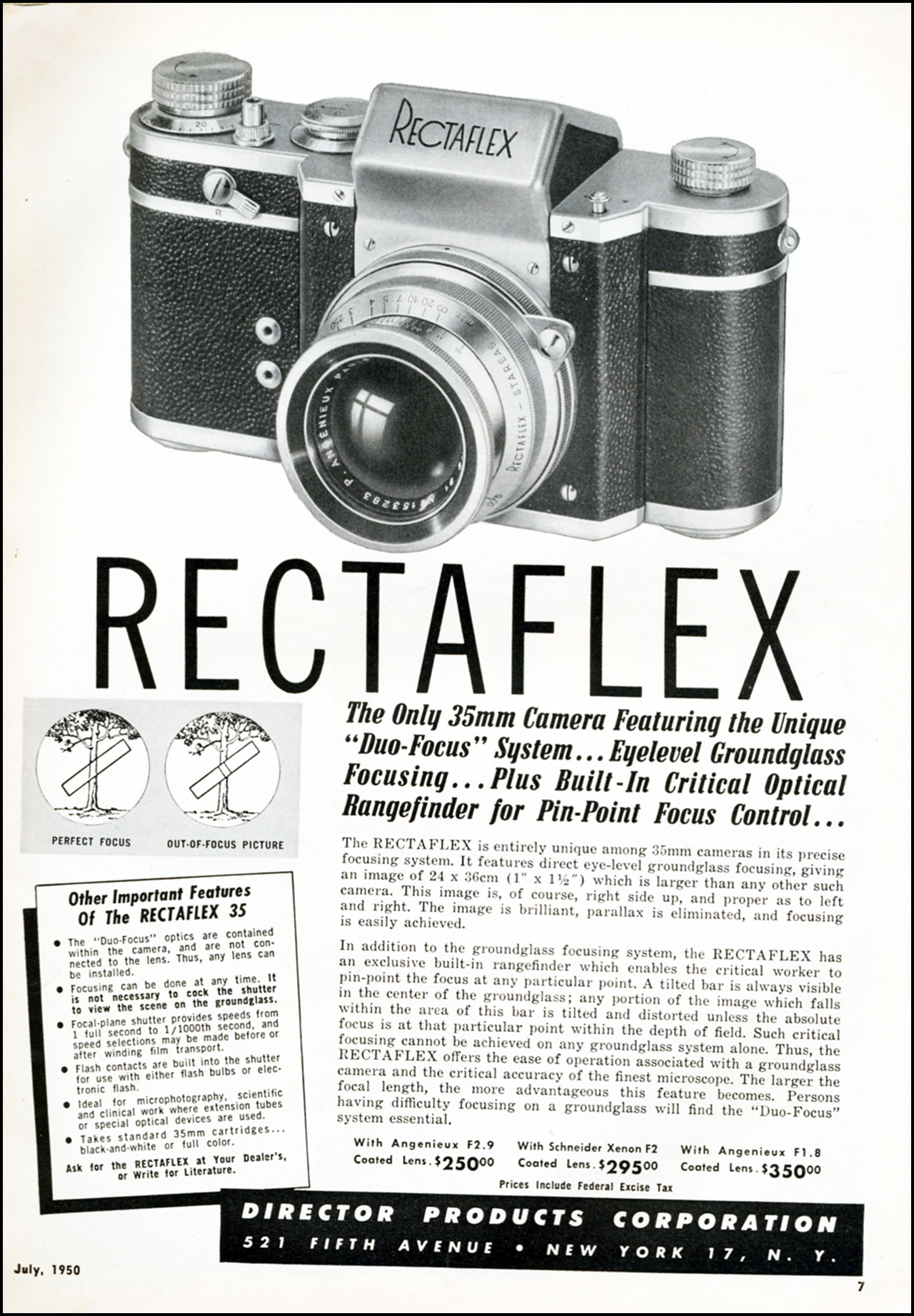
FOUNDERS: : Johann Nicolaus Dreyse and Friedrich Kronbiegel
COMPANY NAMES:
1816: Dreyse & Kronbiegel; 1820: Metallwarenfabrik Dreyse & Collenbusch; 1834: Gewehrfabrik N. Dreyse; 1901: Rheinmetall Sömmerda; 1938: Rheinmetallwerk was integrated into the Reichswerke Hermann Göring; 1945: Rheinmetall-Borsig AG; 1953: VEB Mechanik Büromaschinenwerk Rheinmetall Sömmerda; 1989: VEB Robotron Büromaschinenwerk Sömmerda; 1991: the factory was liquidated.
COMPANY ADDRESS:
1816: Dreyse-Haus, Weißenseer Straße, Sömmerda;
After 1953 VEB Mechanik Büromaschinenwerk Rheinmetall Sömmerda expanded the range of consumer goods, they manufactured: drawing tools, the “Perfekta” photo box, cable release, “Epilux” projector, “Manufok” enlarger, “Weltax” and “Exa” cameras. Camera production was discontinued as early as 1957.
INTRODUCTION
In its first hundred and thirty years the history of VEB Rheinmetall Büromachinenwerk-Sömmerda is mainly concerned with the production of weapons and army equipment.
Since this has little to do with the manufacture of cameras, we will only deal briefly with this period here. It only becomes interesting for this site in the 1950s. We will therefore go into more detail on this period.
It is not without reason that the company is also called “Büromachinenwerk”. Over the course of time and certainly also after the Second World War, the “BWS”, as indicated by its employees, was a major player in the world market for typewriters, calculators and later needle printers and computers.
Just like the activities in the period before the Second World War, we only treat these branches very sporadically and focus here on the production of photographic articles.
The VEB Rheinmetall Büromachinenwerk-Sömmerda was founded in the 19th century. In 1816 the company “Dreyse & Kronbiegel” settled in Sömmerda; as early as 1820 the company became so large that the name was changed to: “Metallwarenfabrik Dreyse & Collenbusch”.
In 1834, the company, then known as “Gewehrfabrik N. Dreyse”, focused on the production of needle guns (German Zündnadelgewehr, which translates roughly as “ignition needle rifle”). The rifle was the first mass-produced rear-loading rifle suitable for military use. It is famous for having been the main infantry weapon of the Prussians.
 The rifle was the invention of the gunsmith Johann Nikolaus von Dreyse (1787–1867) who, beginning in 1824, had conducted multiple experiments and from 1827 produced in Sömmerda the complete needle-gun.
The rifle was the invention of the gunsmith Johann Nikolaus von Dreyse (1787–1867) who, beginning in 1824, had conducted multiple experiments and from 1827 produced in Sömmerda the complete needle-gun.
The Dreyse rifle was also the first breech-loading rifle to use the bolt action to open and close the chamber, executed by turning and pulling a bolt handle. It has a rate of fire of about 6 rounds per minute.
In 1901 the Dreyse company was taken over by the “Rheinische Metallwaren- und Maschinenfabrik” The new name of the company became “Rheinmetall Sömmerda”.
After the First World War, the production at the Rheinmetall plant in Sömmerda was changed from armaments production to peace production, also to the production of office machines like typewriters. After a decision in the summer of 1919, the production of a typewriter named “Rheinmetall” began in February 1920. It was constructed by the well-known typewriter designer Heinrich Schweitzer.
The “Rheinmetall” model was initially produced by 47 workers and two employees; by the turn of 1920, 111 workers had already been employed. From July 1, 1920 to May 31, 1922, a total of 1454 typewriters were manufactured.
In 1926 the “Rheinmetall Duo” was launched as a second model and from 1929 a simplified version of the standard typewriter was built, the “Rheinita”. The small typewriter “Kleine Rheinmetall”, which had been built since 1931, was a great success. In 1932, the “Record” model came on the market for increased demands at a low price. It was well suited for labeling forms, matrices, etc. Finally, the model range was expanded in 1934 with the “Herold” model and in 1936 with the “10” model.
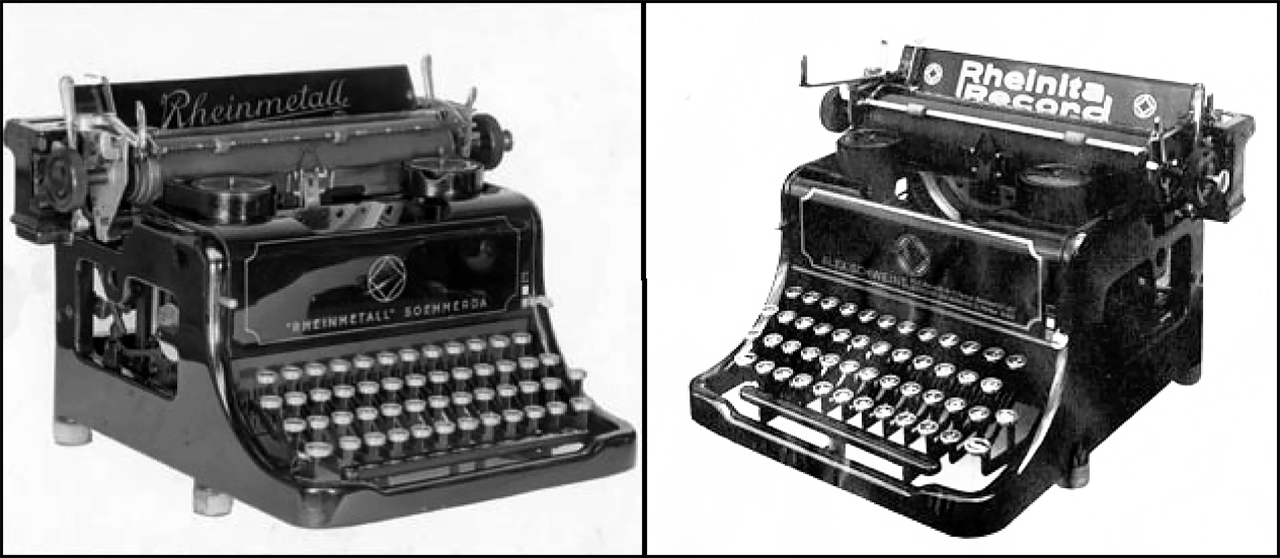
The Rheinmetall Standard Model 8 and the Rheinita Record were the first typewriters from the Rheinmetall range.
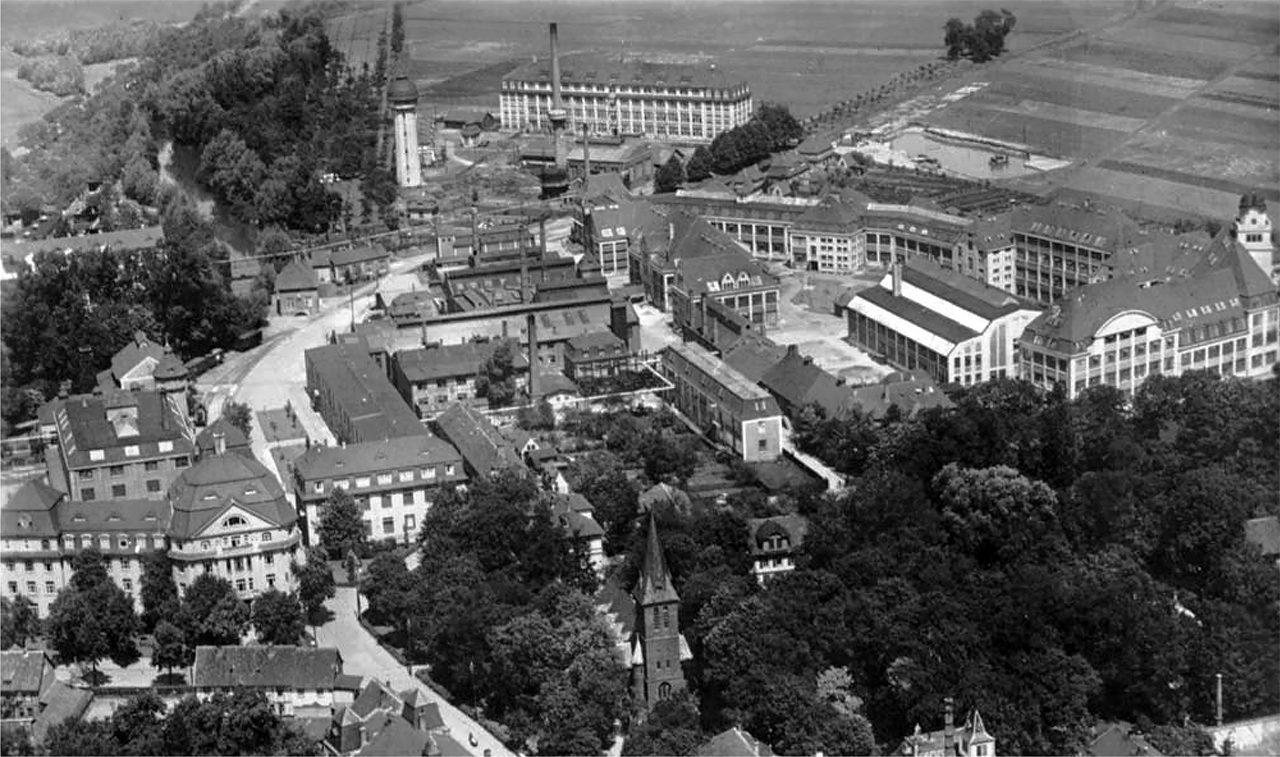
View of the Rheinmetall factory in Sömmerda in the early 1930s
Calculating machines and Typewriters instead of weapons
As a further palette, the Rheinmetall plant started producing calculating machines after the First World War, at that time still a young development.
1922 was the year that the first calculating machine, the “Saldo” manual calculating machine was mass-produced in Sömmerda – but still with a lot of manual work.
Since then the production of calculating machines has been continuously expanded.
Hand-held calculators have been followed by electrically driven devices since 1924, semi-automatic machines since 1929, super-automatic machines, adding and balancing machines since 1931.
In 1938 the Rheinmetallwerk was integrated into the Reichswerke Hermann Göring. The company had been working in war production since 1941.
At the end of World War II, Sömmerda was occupied by American troops, later in July 1945 the Soviet Army occupied Thuringia. In the same month, the group manager August Kottmann restarted the Sömmerda plant of “Rheinmetall-Borsig AG” on behalf of the group’s executive board.
Production started with 815 workers. From August 1945, the plant received firm orders from the Soviet military administration. By order of the Soviet military administration, civilian products were mass-produced at Rheinmetall. Typewriters and calculators in particular were produced as reparations for the Soviet Union, by the end of 1946 over 11,000.
On June 3, 1953, the former Borsig/Rheinmetall plant in Sömmerda in the GDR was returned by the Soviet occupation. A state-owned company (VEB) was founded under the company name “VEB Mechanik Büromaschinenwerk Rheinmetall Sömmerda”.
Camera production from 1952 to 1959
In the GDR, VEB Mechanik Büromaschinenwerk Rheinmetall Sömmerda was one of the largest producers of office machines, which also had a good reputation in West-Germany.
From 1954 the EXA camera of the Ihagee camera plant was produced as a license. After the “VEB Mechanik” had received the order to expand the range of consumer goods, there were a.o. drawing tools, photographic equipment and cable releases manufactured.
Furthermore, the VEB Rheinmetall did not develop any cameras in-house. The company took on the production of cameras and other photographic equipment developed elsewhere, such as the plastic Perfekta photo box, the Exa and the Weltax cameras, the Epilux projector and the Manufoc enlarger.
From 1953 to 1957, 1,026,000 Perfekta photo boxes and 60,650 Weltax and Exa cameras were manufactured. Almost all cameras were designed for the GDR market to alleviate the growing discontent among the population. But the Perfekta was also delivered in large numbers to the Fotohaus Porst in Nuremberg. Camera production was discontinued as early as 1957 due to severe quality malfunctions.

Control of an invoicing machine
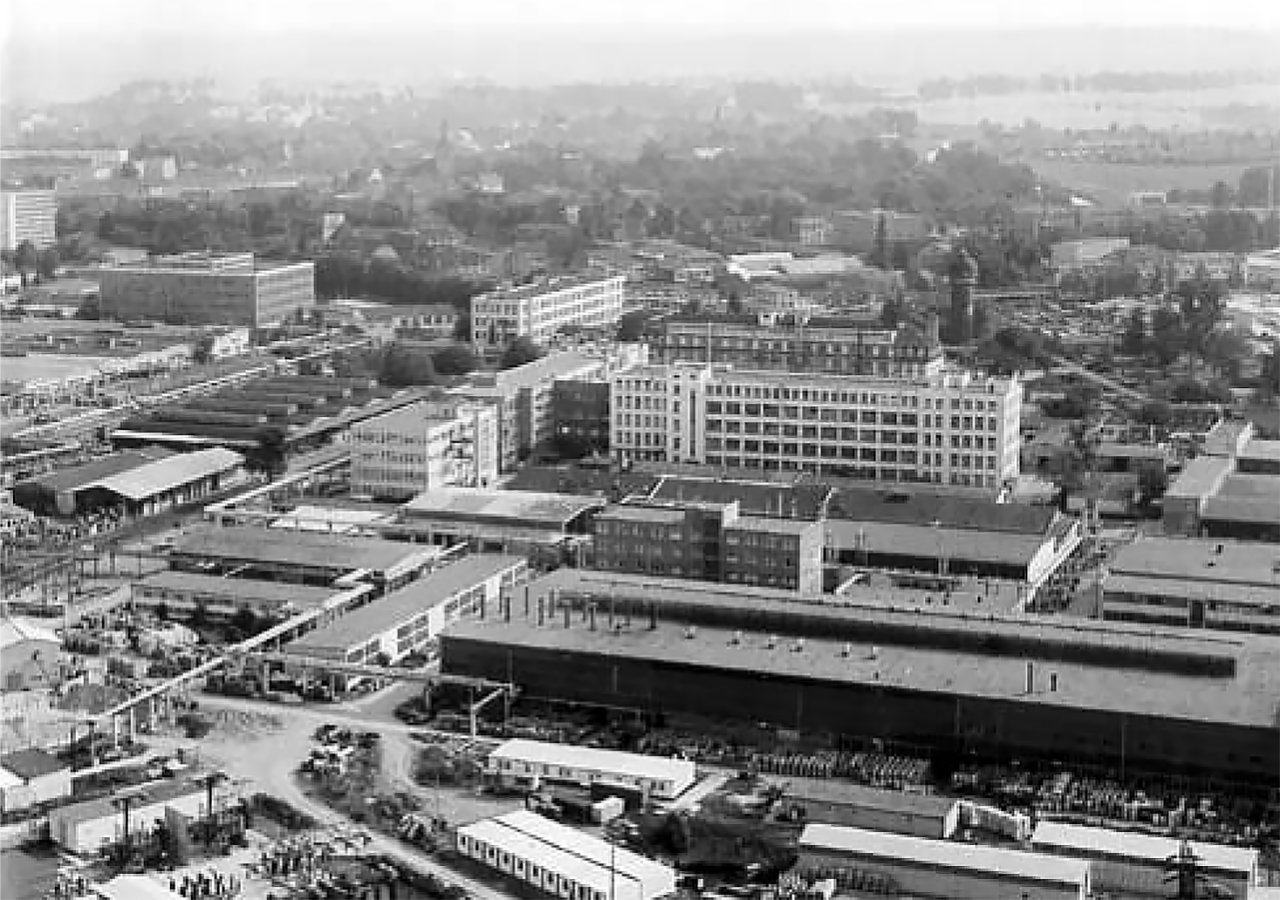
View of the Rheinmetall factory in Sömmerda in 1989
The period 1958 – 1991
In 1958 it became part of a larger group of companies, the “Association of State-owned Data Processing and Office Machines” based in Erfurt or “VEB Büromaschinenwerk Rheinmetall Sömmerda”.
In 1969 the “VEB Büromaschinenwerk Sömmerda” became part of the combination “Zentronik”, in which all GDR manufacturers of office machines and middle data technology devices were combined. The “VEB Büromaschinenwerk Sömmerda” acted as the parent company in the combination.
From 1970 to 1980, the series of electronic accounting machines dominated the production profile of the office machine plant. In addition, there were the product lines of electronic desktop computers, writing technology and peripheral devices for the “Robotron 300” electronic data processing system (EDVA).
At the beginning of 1978, the combinations “Robotron” and “Zentronik” were combined to form the “VEB Kombinat Robotron”. The largest company in the combine was the “VEB Büromaschinenwerk Sömmerda”.
Immediately before the Wall came down in 1989, the workforce of the “VEB Robotron Büromaschinenwerk Sömmerda” was 13521. At that time Sömmerda had 20,000 inhabitants! In 1991 the office machine factory made good turnover, then the market collapsed and it was inevitable that the office machine factory liquidated.
An industrial park “Unstrutaue” has been created on the site of the former office machine factory with its own vocational school.
A limited overview of the photographic products of Rheinmetall
After the “VEB Mechanik Rheinmetall” received the order to expand the range of consumer goods, they manufactured in addition to drawing tools, photographic equipment and cable releases, moped engines for Simson mopeds “SR 1”, “SR 2” and “KR 50” , cutlery, children’s scooters and bicycles, and finally kitchen and washing machines.
FOUNDER: Ichimura Kiyoshi
COMPANY NAMES:
1917: Riken research institute and the Riken foundation; 1927: Rikagaku Kōgyō K.K. (Physico-Chemical Development Co., Ltd.); 1936: Riken Kankōshi K.K. (Riken Sensitized Paper Co Ltd.); 1938: Riken Kōgaku Kōgyō K.K. (Riken Optical Industries Co., Ltd.); 1947: Asahi Seimitsu Kōgyō (Asahi Precision Industries); 1953: Asahi Seimitsu merged into Riken Kōgaku Kōgyō; 1963: Ricoh (K.K. Rikō); 2011: Pentax Ricoh Imaging Company, Ltd.; 2013: Ricoh Imaging Company Ltd.
COMPANY ADDRESSES:
1936: Ōji, Tokyo; 1947: Magome, Tokyo; 2023: Ota, Tokyo.
Ricoh produces electronic products, primarily cameras and office equipment such as printers, photocopiers, fax machines, offers Software as a Service (SaaS) document management applications such as DocumentMall, RicohDocs, GlobalScan, Print&Share, MakeLeaps and also offers Projectors. In the late 1990s through early 2000s, the company grew to become the largest copier manufacturer in the world.
Ricoh’s origins date back to a decision by the Institute of Physical and Chemical Research to commercialize the fruits of its R&D by setting up Rikagaku Kogyo. Since its formation in 1927, the business venture has placed on the market numerous products developed by the research institute, including sensitized paper.
 On February 6, 1936, the sensitized paper division was split off to be established as Riken Kankoshi Co., Ltd., a precursor of Ricoh, under the directorship of Kiyoshi Ichimura. As the founder of Ricoh, Ichimura led the successful development of the business that started with 350,000 yen in capital and a staff of 33.
On February 6, 1936, the sensitized paper division was split off to be established as Riken Kankoshi Co., Ltd., a precursor of Ricoh, under the directorship of Kiyoshi Ichimura. As the founder of Ricoh, Ichimura led the successful development of the business that started with 350,000 yen in capital and a staff of 33.
In 1937, Riken Kankōshi bought the company Asahi Bussan and its associated manufacturing facility, producer of the Olympic and Super Olympic cameras. This company had started the distribution of Olympic cameras in 1934 and released the Super Olympic in 1935 or 1936.
In November 1937, Riken reorganized these into the dependent company Asahi Kōgaku Kōgyō, which would continue the production of bakelite cameras and leaf shutters in a semi-independent way.
The period 1938 – 1945
In March 1938, Riken Kankōshi itself became Riken Kōgaku Kōgyō K.K. (meaning Riken Optical Industries Co., Ltd.). The same year, it announced the Riken No.1, a 3 x 4 cm camera with focal-plane shutter, which was actually released in 1939 as the Gokoku. The camera was produced in the Ōji plant, and was followed by the Ricohl, Roico, Ricohflex B, Gaica or Kinsi before the production was ended by the war.
In parallel, Riken Kōgaku Kōgyō gradually took over the distribution of the cameras made by Asahi Kōgaku Kōgyō. The Olympic Camera Club established by Asahi was turned into the Ricoh Camera Club and its magazine Shinkō Graph was taken over by the parent company.
Riken also sold cameras made by various subcontractors, whose identity is not always known. The subcontracted models were sold with lenses and shutters made by Riken, but the degree of involvement of the company in the assembly of these cameras is unknown. Riken sold a few lenses to other manufacturers as well.
In 1941, the subsidiary Asahi Kōgaku Kōgyō became Asahi Musen Kōgyō K.K. (meaning Asahi Wireless Co., Ltd.). Its factory was in Magome, Tokyo. In addition to cameras and optical products, it was making wireless equipment.
In 1942, the two companies Riken Kōgaku Kōgyō and Asahi Musen Kōgyō left the Riken Foundation which was the last link remaining between the Riken Institute and its offshoot companies.
The production and sales of cameras was stopped during the war, perhaps around 1942 or 1943. Part of the optical division was transferred to Asahi Musen at the time, apparently including the camera department, to preserve the know-how.
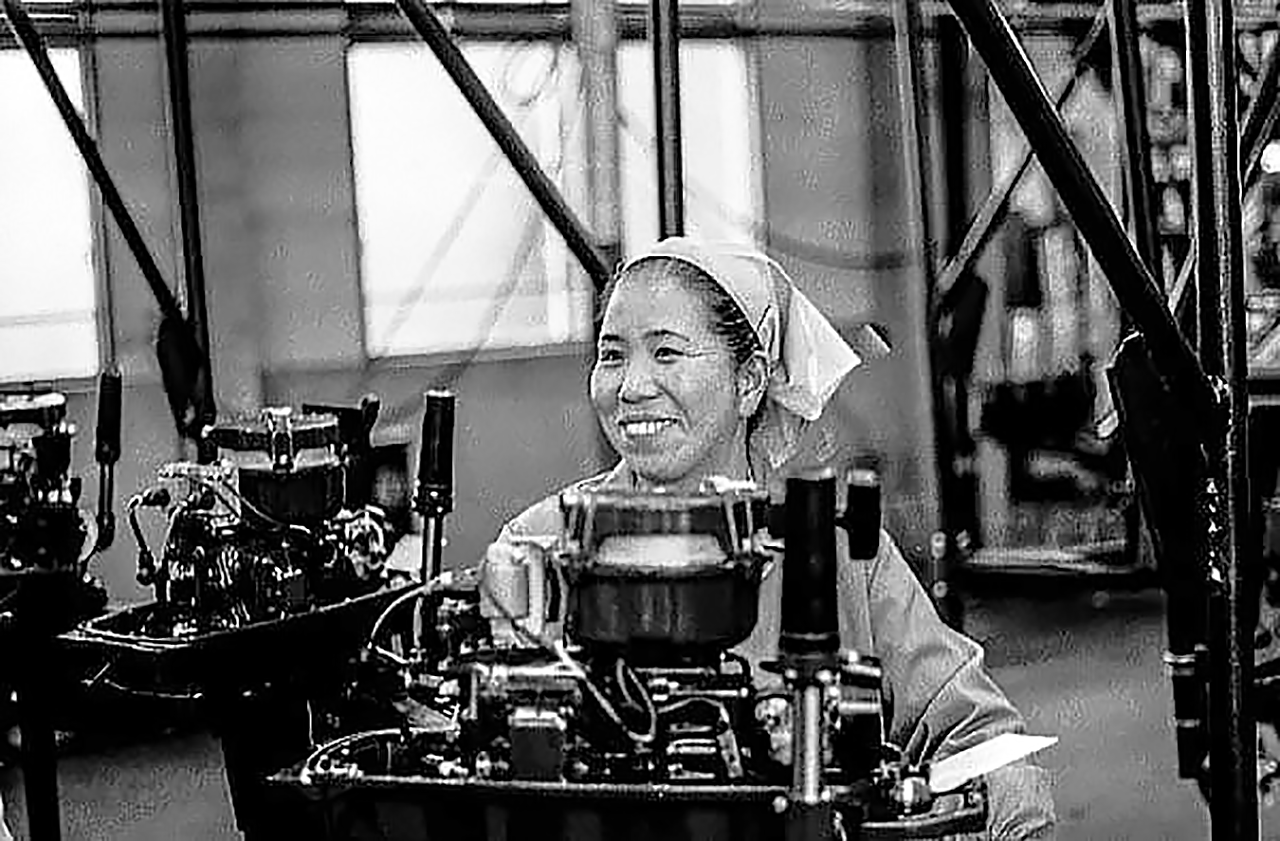
Finally, the name became Ricoh
 The company finally took the name of its products, becoming Ricoh (K.K. Rikō) in 1963. From 1964, it made a few 35mm SLR with interchangeable 42mm screw lenses, most of which were called Singlex. In 1977, it switched to the K mount introduced by Pentax, for a series of cameras called XR, made until the 1990s. The only autofocus SLR cameras made by the company were the various Mirai, with non-interchangeable zoom lenses.
The company finally took the name of its products, becoming Ricoh (K.K. Rikō) in 1963. From 1964, it made a few 35mm SLR with interchangeable 42mm screw lenses, most of which were called Singlex. In 1977, it switched to the K mount introduced by Pentax, for a series of cameras called XR, made until the 1990s. The only autofocus SLR cameras made by the company were the various Mirai, with non-interchangeable zoom lenses.
In 1994, Ricoh released the Ricoh R1, a compact camera with panorama mode. It was followed by various other deluxe compact cameras, such as the GR1, and the company continued this trend into the digital era with the GR Digital.
In 2009, Ricoh released the Ricoh GXR, an interchangeable lens camera without bayonet. The GXR is an interchangeable unit camera system in which lenses are changed by using a slide-in mount system to attach camera units to the body. The lens, image sensor, and image processing engine are integrated into the lens units so the body itself does not contain an image sensor.
In 2011, Ricoh announced it was acquiring the Imaging Systems business of Pentax. After the acquisition the name of the company was changed to Pentax Ricoh Imaging. In August 2013, the company is now known as Ricoh Imaging.
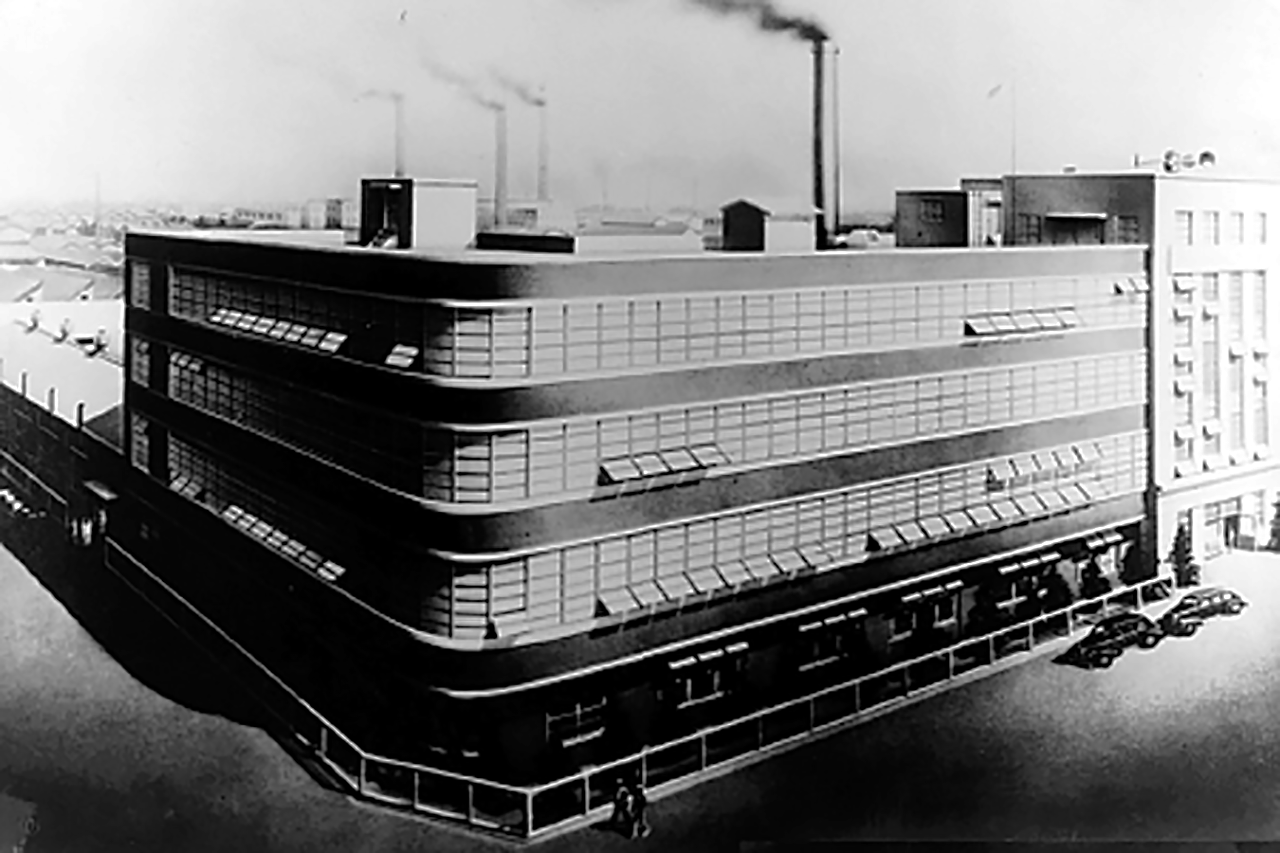
Oji Plant, the main factory of Riken Optical Industries for manufacturing sensitized paper as well as cameras and binoculars (1938)
The period after Ww II
After the war, the subsidiary Asahi Musen introduced the Steky camera in 1947. Asahi Musen soon became Asahi Seimitsu Kōgyō (meaning Asahi Precision Industries), which was in charge of all the camera development and manufacture in the late 1940s and early 1950s, in the Magome plant. The main designer was Fujimoto Sakae, who previously worked for another major camera maker, and who made efforts to prepare the factory for mass production.
Work on an improved version of the wartime Ricohflex B TLR camera started immediately after the war, and the resulting Ricohflex III was launched in 1950. It was the first of various geared-lens Ricohflex models, which met a large success on the domestic and export markets, and initiated the 1950s “TLR boom” in Japan. The company made almost no attempt to produce bellows camera, except for the Ricoh Six in 1952.
Ricoh was the first company in Japan to introduce a belt-conveyor system for manufacturing cameras, achieving a production capacity of 10,000 units/month – more than ten times the capacity of the then standard level of less than 1,000 units/month from the conventional handicraft industry.
Successfully adopting this method of camera mass production, Ricoh offered the Ricohflex Model III at an affordable price, which was remarkably low for an iconic luxury item in those days. This model became highly popular among Japanese consumers, reportedly representing more than 50% of total national camera production during its sales peak.
The subsidiary Asahi Seimitsu was merged into Riken Kōgaku Kōgyō in April 1953, and all subsequent camera activity took place in the main company. The first 35mm camera was the Ricolet, released the same year, followed by various viewfinder and rangefinder cameras.
The Ricoh Auto Half half-frame camera with spring motor, released in 1962, was another commercial success, made in various versions until the early 1980s.
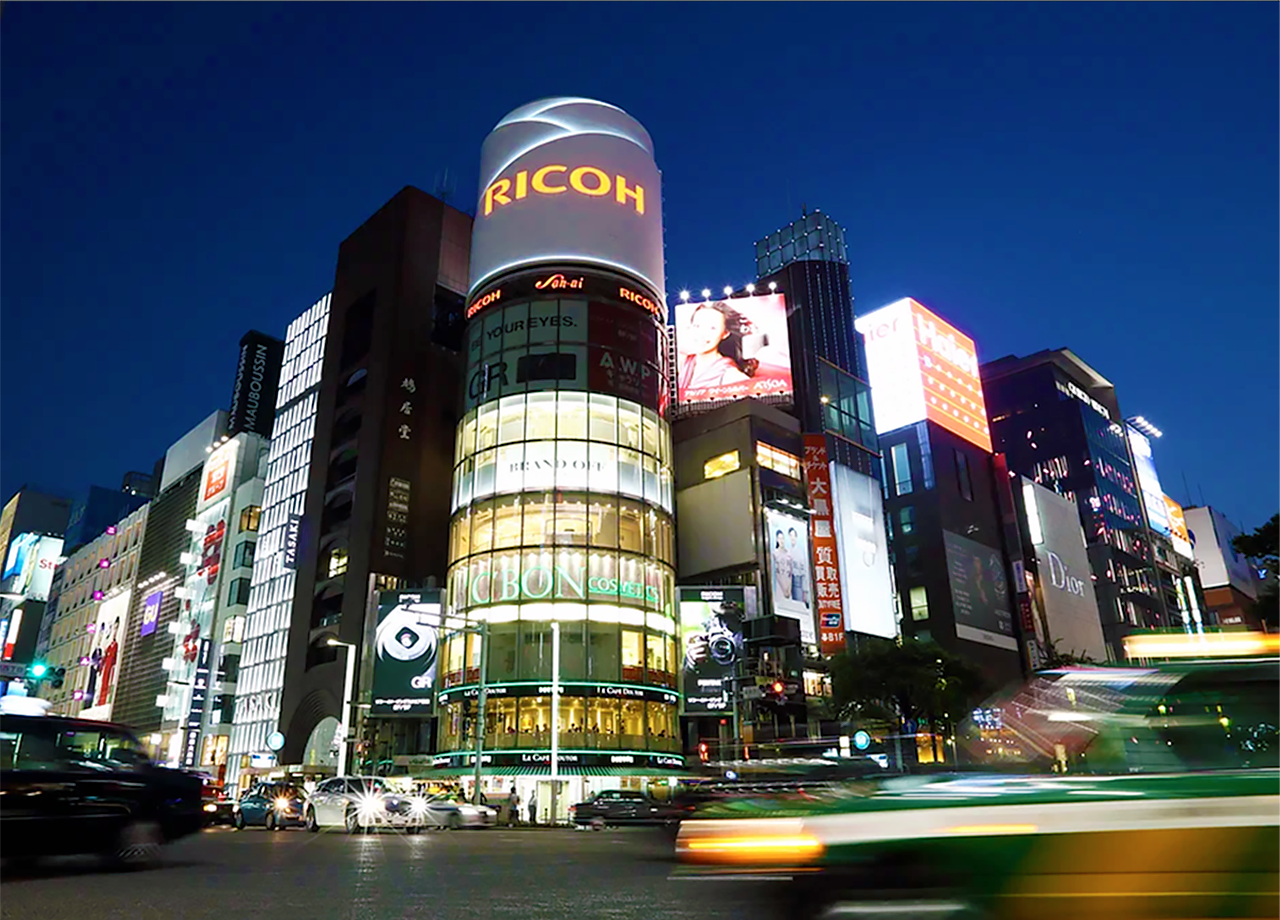
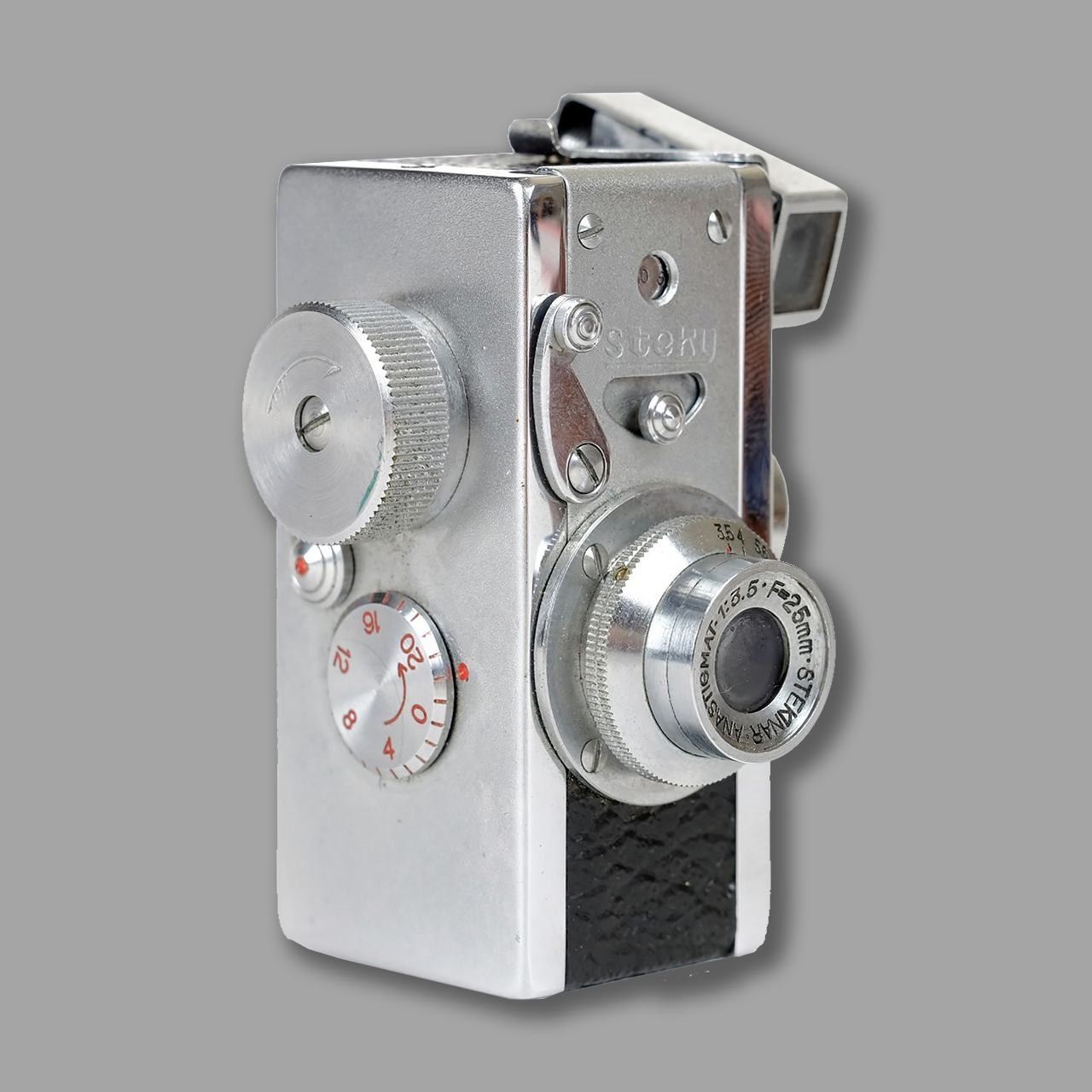
Steky Model III
35mm Point & Shoot
Autofocus
- Ricoh 35R
- Ricoh AF-2
- Ricoh AF-5
- Ricoh AF-7
- Ricoh AF-10
- Ricoh AF-28
- Ricoh AF-30
- Ricoh AF-35
- Ricoh AF-40
- Ricoh AF-45
- Ricoh AF-50
- Ricoh AF-55
- Ricoh AF-60
- Ricoh AF-60S
- Ricoh AF-66
- Ricoh AF-66S
- Ricoh AF-70
- Ricoh AF-77
- Ricoh AF-77S
- Ricoh AF-80
- Ricoh AF-100
- Ricoh AF-303D
- Ricoh AF-500
- Ricoh AF-606
- Ricoh ELLE
- Ricoh FF-3 AF
- Ricoh FF-3D AF
- Ricoh FF-3 AF Super
- Ricoh FF-3D AF Super
- Ricoh FF-7
- Ricoh FF-7z
- Ricoh FF-8WR
- Ricoh FF-9
- Ricoh FF-9s
- Ricoh FF-9sD LIMITED
- Ricoh FF-60
- Ricoh FF-70
- Ricoh FF-90
- Ricoh FF-90 Super
- Ricoh FF-300D
- Ricoh FF-700
- Ricoh GR1
- Ricoh GR1s
- Ricoh GR1v
- Ricoh GR21
- Ricoh Myport 28W
- Ricoh Myport 300D
- Ricoh Myport ELLE
- Ricoh Myport LUI
- Ricoh One Take AF
- Ricoh One Take AF II
- Ricoh One Take AF Super
- Ricoh R1
- Ricoh R1E
- Ricoh R1s
- Ricoh R10
- Ricoh R100
- Ricoh RW-1
- Ricoh RX-30
- Ricoh RX-60
- Ricoh S-30
- Ricoh Shotmaster AF
- Ricoh Shotmaster AF-P
- Ricoh Shotmaster AF Super
35mm Point & Shoot
Fixed focus
- Ricoh Auto 35
- Ricoh L-20
- Ricoh LX-10
- Ricoh LX-22/22a
- Ricoh LX-22S
- Ricoh LX-25
- Ricoh LX-33sW
- Ricoh LX-33W
- Ricoh LX-55W
- Ricoh my-1
- Ricoh One Take Easy
- Ricoh One Take Easy II
- Ricoh XOBBOX
- Ricoh YF-10
- Ricoh YF-11
- Ricoh YF-11S
- Ricoh YF-11ST
- Ricoh YF-20
- Ricoh YF20-E
- Ricoh YF-20N
- Ricoh YF-20 Super
- Ricoh YF-20X
- Ricoh YF-28
- Ricoh YF-28 Super
- Ricoh YF-100
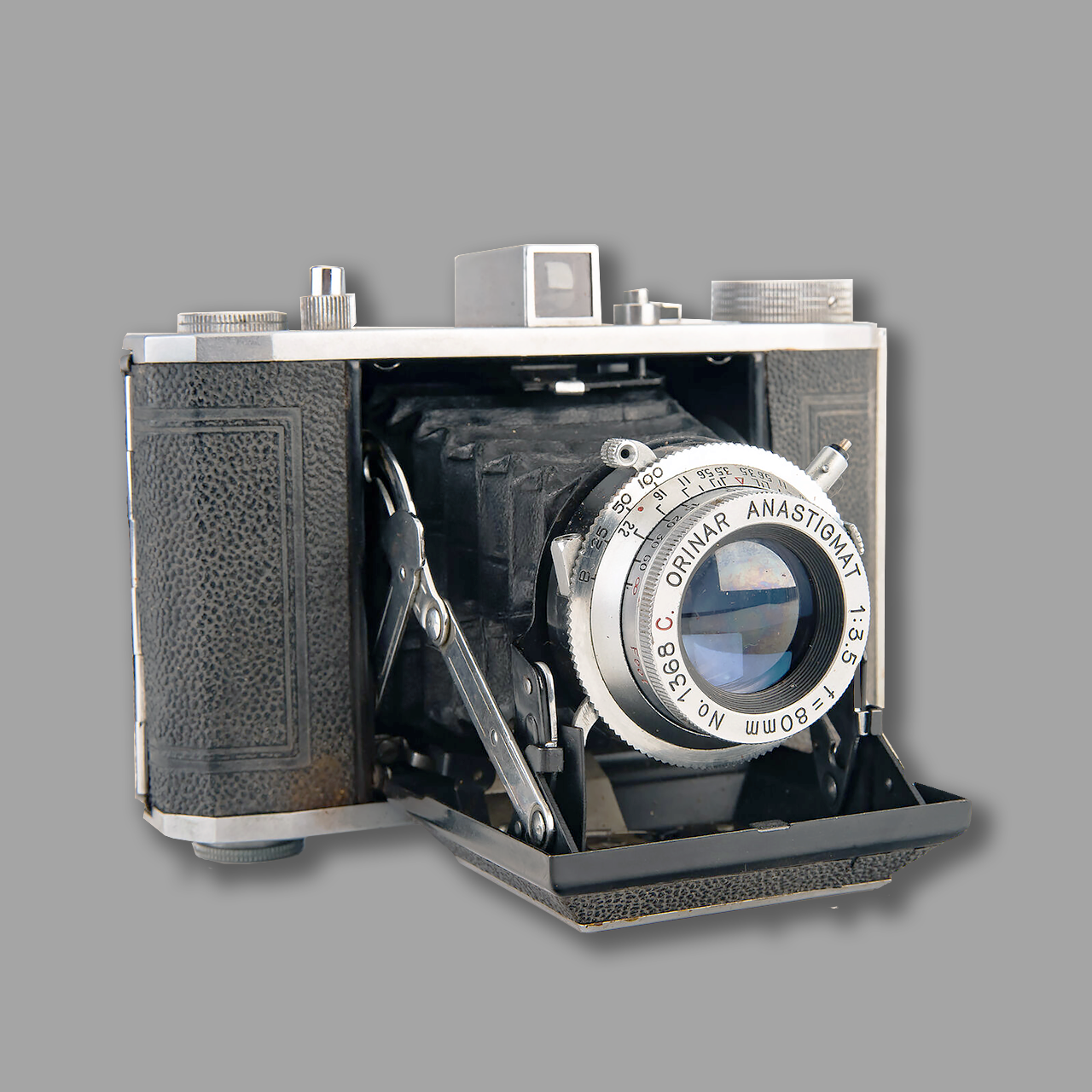
Ricoh Six
35mm Point & Shoot
Dual lens
- Ricoh FF-10 Twin Super
- Ricoh Myport Dual mini
- Ricoh One Take Dual
- Ricoh RT-550
- Ricoh Shotmaster Dual
- Ricoh Shotmaster Ultra Dual
- Ricoh TF-200
- Ricoh TF-300 / Myport 300
- Ricoh TF-500
- Ricoh TF-900
35mm Point & Shoot
Zone focus
- Ricoh FF-1
- Ricoh FF-1S
- Ricoh Myport AMI
- Ricoh XF-20
- Ricoh XF-30D
- Ricoh XF30-E
- Ricoh XF-30 Super
- Ricoh XF-80
35mm Point & Shoot
zoom lens
- Ricoh FF-10 Zoom
- Ricoh FF-10S Zoom
- Ricoh FF-20 Wide Zoom
- Ricoh FZ-70
- Ricoh FZ-80
- Ricoh Mirai
- Ricoh Mirai 105 (zoom)
- Ricoh Mirai Zoom 3
- Ricoh Myport 310 Super
- Ricoh Myport 310SF
- Ricoh Myport 330 Super
- Ricoh Myport 330SF
- Ricoh Myport Super Zoom
- Ricoh Myport Zoom 90
- Ricoh Myport Zoom 90PS
- Ricoh Myport Zoom 320P
- Ricoh Myport Zoom 320PS
- Ricoh Myport Zoom mini
- Ricoh Myport Zoom mini PS
- Ricoh Myport Zoom RZ-800
- Ricoh Myport Zoom Wide
- Ricoh Q-80Z
- Ricoh Q-super 90Z
- Ricoh Q-100Z
- Ricoh Q-105Z
- Ricoh Q-110Z
- Ricoh Q-130Z
- Ricoh R-110Z Super
- Ricoh R-125Z
- Ricoh R-130Z Super
- Ricoh R-ex 70z
- Ricoh R-ex 90z
- Ricoh R-ex 105z
- Ricoh R-ex 120z
- Ricoh RZ-105SF
- Ricoh RZ-115
- Ricoh RZ-125
- Ricoh RZ-140
- Ricoh RZ-600
- Ricoh RZ-700
- Ricoh RZ-700S
- Ricoh RZ-728
- Ricoh RZ-735
- Ricoh RZ-750
- Ricoh RZ-770
- Ricoh RZ-780
- Ricoh RZ-780 Super
- Ricoh RZ-800
- Ricoh RZ-880
- Ricoh RZ-900
- Ricoh RZ-980SF
- Ricoh RZ-1000
- Ricoh RZ-1050
- Ricoh RZ-1100
- Ricoh RZ-1100SF
- Ricoh RZ-3000
- Ricoh RZ-3000S
- Ricoh Shotmaster 110-ZP
- Ricoh Shotmaster 130-Z
- Ricoh Shotmaster Tru-zoom
- Ricoh Shotmaster Ultra Zoom
- Ricoh Shotmaster Ultra Zoom II
- Ricoh Shotmaster Ultra Zoom Super
- Ricoh Shotmaster Zoom
- Ricoh Shotmaster Zoom II P-date
- Ricoh Shotmaster Zoom III P
- Ricoh Shotmaster Zoom 70
- Ricoh Shotmaster Zoom 105 Plus
- Ricoh Shotmaster Zoom 130 Super
- Ricoh Shotmaster Zoom Super
- Ricoh TF-900 Zoom
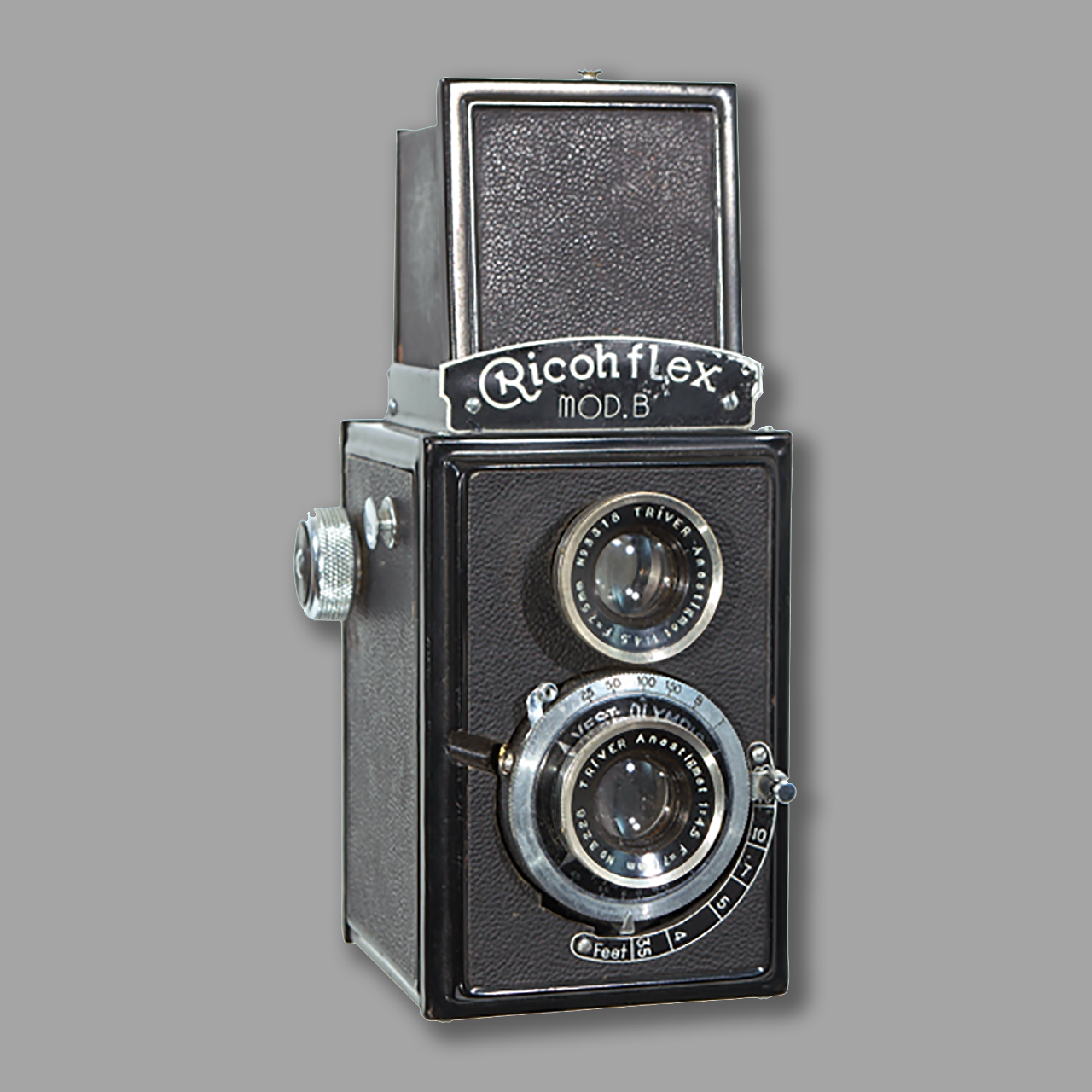
Ricohflex B
35mm Rangefinder,
fixed lens
- Ricoh 300 (1958)
- Ricoh 300S (1960)
- Ricoh 35 Deluxe (1956)
- Ricoh 35 Deluxe L (1957)
- Ricoh 35 electronic
- Ricoh 35 New Deluxe
- Ricoh 35
- Ricoh 35 L (1962)
- Ricoh 35S
- Ricoh 500 Deluxe
- Ricoh 500 G (1971)
- Ricoh 500 GS (1973)
- Ricoh 500 ME (1980)
- Ricoh 500
- Ricoh 500 GX (1977)
- Ricoh 500 RF
- Ricoh 519 Deluxe (FiveOneNine)
- Ricoh 519M
- Ricoh 520m CdS
- Ricoh 800 EES
- Ricoh Elnica 35 (aka Ricoh 35 Electronic)
- Ricoh Elnica 35M
- Ricoh Elnica F
- Ricoh Jet
- Ricoh Mate (1960)
- Ricoh Ricohmatic 35
- Ricoh Max
- Ricoh S2 (1958)
- Ricoh S3 (1959)
- Ricoh Super Shot
- Ricoh Wide (1960)
- Ricolet II (1955)
- Riken 35 (1955)
35mm SLR,
focal plane
Caution: Ricoh SLR model names can cause confusion (and some errors may appear here), as the same camera may have alternate names in different markets. Also, any model designation that appends letters, “Super,” Roman numerals, etc. will typically represent a completely different model.
- Ricoh Singlex
- Ricoh Singlex TLS
- Ricoh TLS 401 / Ricohflex TLS 401
- Ricoh Singlex II
- Ricoh SLX 500
- Ricoh Auto TLS EE
- Ricoh XR-1
- Ricoh XR-2
- Ricoh XR-500 (same as KR-5)
- Ricoh XR-1s
- Ricoh XR-2s
- Ricoh XR1000S (same as KR-10)
- Ricoh XR-2000 (Re-styled KR-10 Super? See Sears KSX Super)
- Ricoh XR-10 (same as KR-10x)
- Ricoh XR6
- Ricoh XR-F (XR6 with electronic focus assistance)
- Ricoh XR-S (XR7 with solar power)
- Ricoh XR 500 Auto
- Ricoh XR7
- Ricoh XR-P
- Ricoh XR-20SP (same as KR-30SP)
- Ricoh XR-M (same as XR-X)
- Ricoh XR-X
- Ricoh XR-X 2000 (same as KR-10M)
- Ricoh XR-10M (same as KR-10M)
- Ricoh XR-X 3P (same as XR-10P)
- Ricoh XR-X 3PF (same as XR-10PF)
- Ricoh XR-X3000
- Ricoh Mirai
- Ricoh XR-7M
- Ricoh XR-7M II
- Ricoh XR-8 (same as KR-5 Super II)
- Ricoh XR-8 Super (same as KR-5 III)
- Ricoh XR Solar
- Ricoh XR-10PF
- Ricoh XR-10P
- Ricoh KR-5
- Ricoh KR-5 II
- Ricoh KR-5 Super
- Ricoh KR-5 Super II
- Ricoh KR-5 III
- Ricoh KR-5sv
- Ricoh KR-10
- Ricoh KR-10SE
- Ricoh KR-10E (Same as XR-7M II?)
- Ricoh KR-10M
- Ricoh KR-10 Super (KR-10S)
- Ricoh KR-10x
- Ricoh KR-30SP Program
- Ricoh CR-5
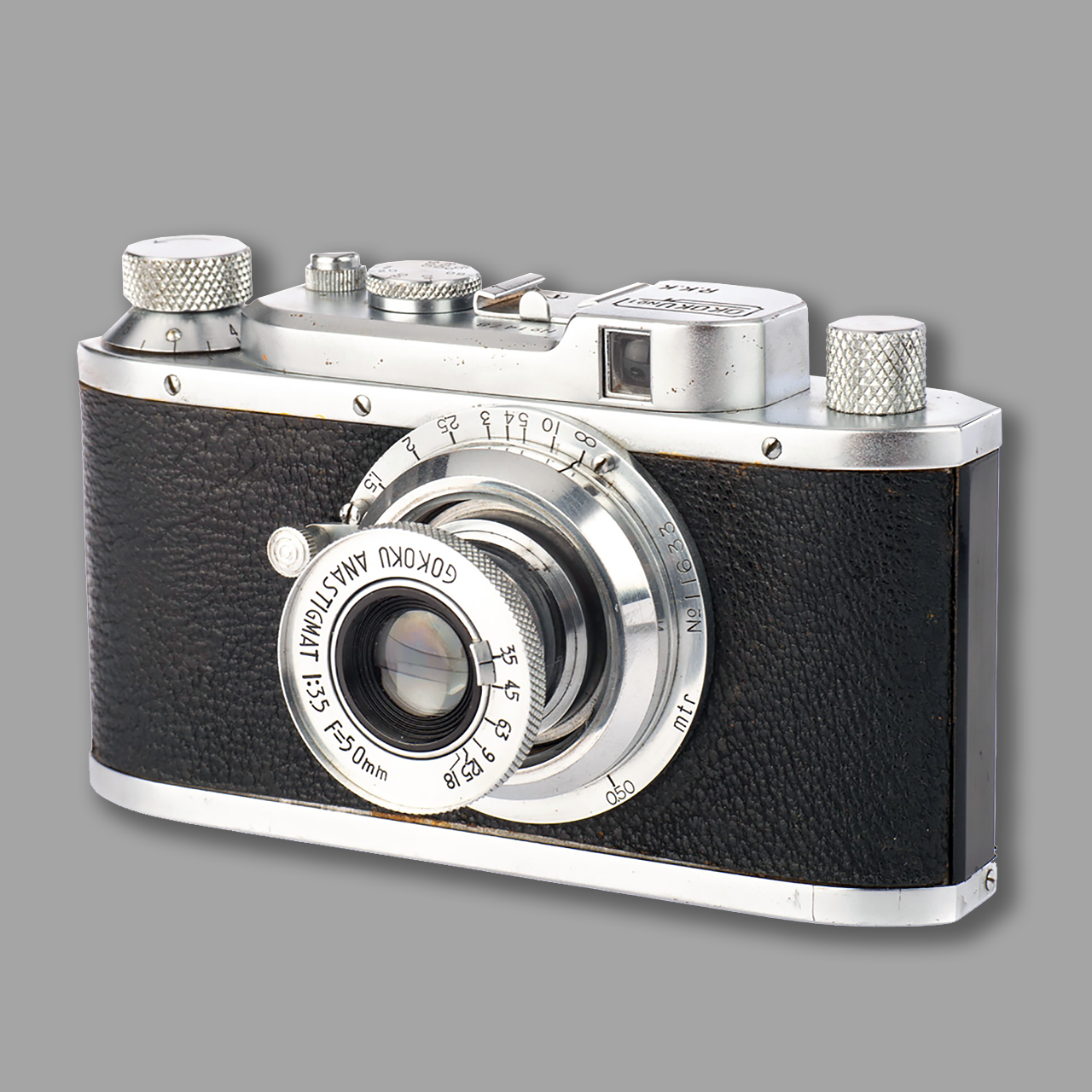
Riken #1 – “Gokoku”
35mm Rangefinder,
interchangeable lens
- Ricoh 999 (aka Ansco Anscomark M)
35mm SLR,
lens shutter
- Ricoh 35 Flex
- Ricoh 35 Flex CdS
35mm Viewfinder,
fixed lens
- Super Olympic D (made by Asahi Bussan then by Asahi Kōgaku Kōgyō)
- Super Olympic DIII and DIIIA (made by Asahi Bussan then by Asahi Kōgaku Kōgyō)
- Asahi Seimitsu 35mm stereo (prototype, c.1951)
- Ricolet
- Ricolet S
- Ricoh Auto 35
- Ricoh Auto 35V
- Ricoh Auto Shot
- Ricoh Hi-Color / 35 / 35 S / 35BT
- Ricoh Super Shot 2.4
- Ricoh 35ZF
- Ricoh Infomatic
- Ricoh AD-1
- Ricoh A-2
- Ricoh 35EF
- Ricoh 35EFS
- Ricoh 35EFL
- Ricoh 35 FM
- Ricoh 500 ST
- Ricoh 500 ZF
35mm SLR,
Half frame
- Ricoh Caddy
- Ricoh Auto Half
- Ricoh Auto Half S
- Ricoh Auto Half E
- Ricoh Auto Half SL
- Ricoh Auto Half E2
- Ricoh Auto Half EF
- Ricoh Auto Half EF2
- Ricoh Auto Half SE
- Ricoh Auto Half SE2
- Ricoh Auto Half BT
- Ricoh Teleca 240
120 mm film
4.5×6 telescopic
- Semi Olympic (made by Asahi Bussan)
- New Olympic (made by Asahi Kōgaku Kōgyō)
- New Olympic II (made by Asahi Kōgaku Kōgyō)
- Semi Kinsi (made by Asahi Kōgaku Kōgyō)
120 mm film
4.5×6 folding
- Semi Adler and Adler III (rebadged version of the Semi Victor)
- Adler A (rebadged version of the Collex)
- Adler B
- Adler C (rebadged version of the Semi Rody)
- Gaica and Gaica II
- Heil and Heil C
120 mm film
6×6 TLR
- Ricohflex (original), made by Mori
- Ricohflex A, perhaps an experimental pseudo TLR made in 1936
- Ricohflex B
- Luminaflex, assembled after 1945 by an unknown company, from spare Ricohflex B
- Ricohflex III
- Ricohflex IIIB
- Ricohflex IIII
- Ricohflex VI
- Ricohflex VII
- Ricohflex VIIS
- Ricohflex VIIM
- Super Ricohflex
- Ricohflex Holiday
- Ricohflex Million
- Ricohflex New Million
- Ricohflex Dia
- Ricohflex Dia M
- Ricohflex New Dia
- Ricohflex New Dia 2
- Ricohflex Dia L (Ricoh Diacord L)
- Ricoh Diacord G
- Ricohmatic 225
- Ricoh Auto 66
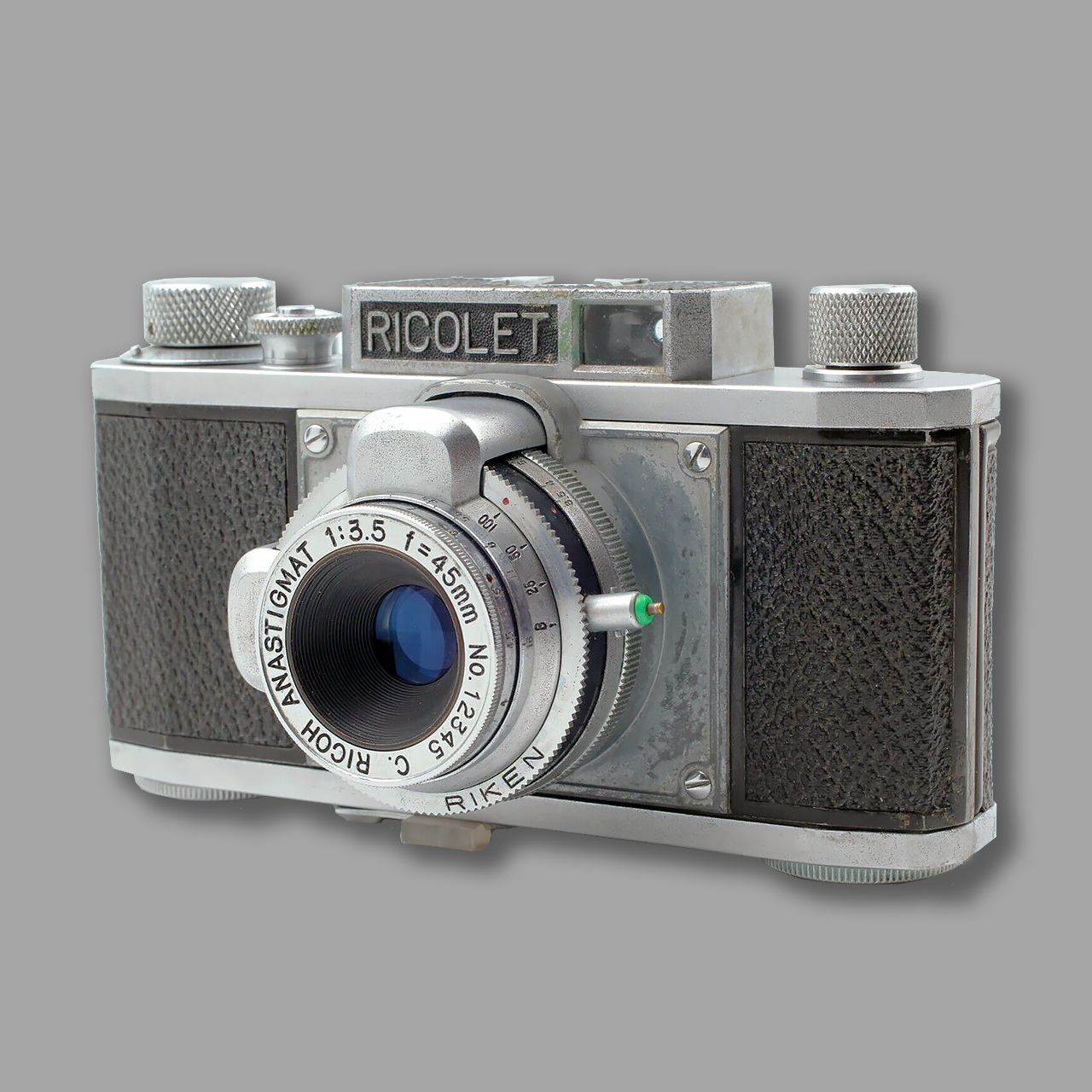
Ricolet
120 mm film
6×6 folding
- Adler VI (perhaps a rebadged version of the First Six by Kuribayashi)
- Adler Six I and II (rebadged version of the Pilot Six by Tachibana)
- Ricoh Six
127 mm film
3×4 telescopic
- Olympic A (made by Asahi Bussan before its absorption by Riken)
- Olympic B (made by Asahi Bussan then by Asahi Kōgaku Kōgyō)
- Olympic Junior (made by Asahi Bussan then by Asahi Kōgaku Kōgyō)
- Olympic C and CIII (made by Asahi Bussan then by Asahi Kōgaku Kōgyō)
- Zessan (made by Mori)
127 mm film
3×4 focal plane
- Riken No.1
- Gokoku
- Ricohl I
- Ricohl II
- Ricohl IIB
127 mm film
3×4 pseudo TLR
- Chukon Ref
127 mm film
3×4 strut folding
- Kinsi I
127 mm film
4×4 telescopic
- Olympic Four I (made by Asahi Kōgaku Kōgyō)
- Olympic Four II (made by Asahi Kōgaku Kōgyō)
- Letix (made by Asahi Kōgaku Kōgyō)
- Roico
- Seica
127 mm film
4×4 folding
- Adler Four (made by Proud, name variant of the Baby Rosen and Rosen Four)
127 mm film
4×4 TLR
- Ricoh Super 44
- Ricohmatic 44
127 mm film
4×6.5 telescopic
- Regal Olympic (announced by Asahi Bussan before its absorption by Riken)
- Vest Olympic
- Vest Adler
126 film
- Ricohmatic 126
- Ricoh 126C Automatic
- Ricoh 126C Auto CdS
- Ricoh 126C Deluxe
- Ricoh 126C EE
- Ricoh 126C Flex
- Ricoh 126 Auto X
110 film
- Ricohmatic 110X Pocket Deluxe
- Ricohmatic 600M
cameras for
Rapid film
- Ricoh EE Rapid Half
- Ricoh 35K Rapid
16 mm film
subminiature
- Hanken
- Steky I
- Steky II
- Steky III
- Steky IIIA
- Steky IIIB
- Golden Steky
- Ricoh 16
- Golden Ricoh 16
- Ricoreo 16 (stereo prototype)

FOUNDING DATE: 1930 (1904)
FOUNDER: Charlotte Richter
COMPANY NAMES:
1904: It started as Camera-Werke Merkel; 1929: Camera-Werke Merkel went bankrupt and was taken over and renamed Kamera Werke C. Richter; 1946: Kamera-Werke Tharandt; 1948: Kamera-Werk Tharandt; 1950: affiliation to the VEB Welta camera works.
COMPANY ADDRESS:
1904: Tharandt (Dresden).
The complete history of Richter-Tharandt is complex and occasionally murky. The company was founded as Camera-Werk Merkel in 1900, producing a wide range of plate and rollfilm cameras up to its bankruptcy in 1932. It was based in Tharandt (Dresden). Above all, tropical cameras such as the Phoenix (1925), Minerva (1925), Triumph (1930) with high-quality wooden housings were part of the product range. It weathered the disastrous economic collapse of the Weimar Republic in the early 1920s, but by 1929 Ferdinand Merkel was struggling and filed for bankruptcy. The company was taken over in 1930 by C. Richter and renamed Kamera Werke C. Richter.
C. Richter was a woman, Charlotte Richter, and there can’t be many, if any, other examples of a camera factory in the 1930s being run by a woman. She had two business partners, her husband Fritz and a Friedrich Schmittchen.
Through the 1930s Charlotte and Fritz seem to have been quite successful with a workforce of about 150 carrying on with cameras designed by Ferdinand Merkel. As an example a very basic twin-lens reflex the Reflecta. It produced for several distributors (notably Sears Roebuck in the US).
During WWII camera production stopped and the factory switched to making armaments.
Its position in the German Democratic Republic
After 1945, the works was in the Russian zone of occupied Germany and then the German Democratic Republic – East Germany (from 1949). The Russians stripped out all the production facilities and left just the bare factory shell.
The company was renamed from 1946 to 1948 Kamera-Werke Tharandt under the occupation and later from 1948 to 1950 simply Kamera-Werk Tharandt, producing essentially the same Reflecta model until 1949, when the very slightly updated Reflekta (note the change from “c” to “k”).
In 1950, was also the affiliation to the VEB Welta camera works. This company made the Reflekta II. VEB Welta in turn became part of the large VEB Kamera- und Kinowerk Dresden in 1959, a state owned conglomerate of East-German cameramakers that was to become VEB Pentacon in 1964.
The Richters fled to West Germany with some equipment, and set up another camera factory in Barntrup, Lipca-Lippische Kamerafabrik, Richter and Fischer GmbH, in 1948. Fritz Richter died in a tragic car accident in January 1948 while en route to a business meeting to discuss the plans for another camera factory in Bünde (later known as Balda Bünde). The business seems to have been run by Charlotte. Camera production ceased mid 1962 and Lipca officially dissolved on 29th March 1972.
6×6 TLR Cameras of Richter-Tharandt:
– Reflecta – Reflekta – Ricaflex – Vitaflex
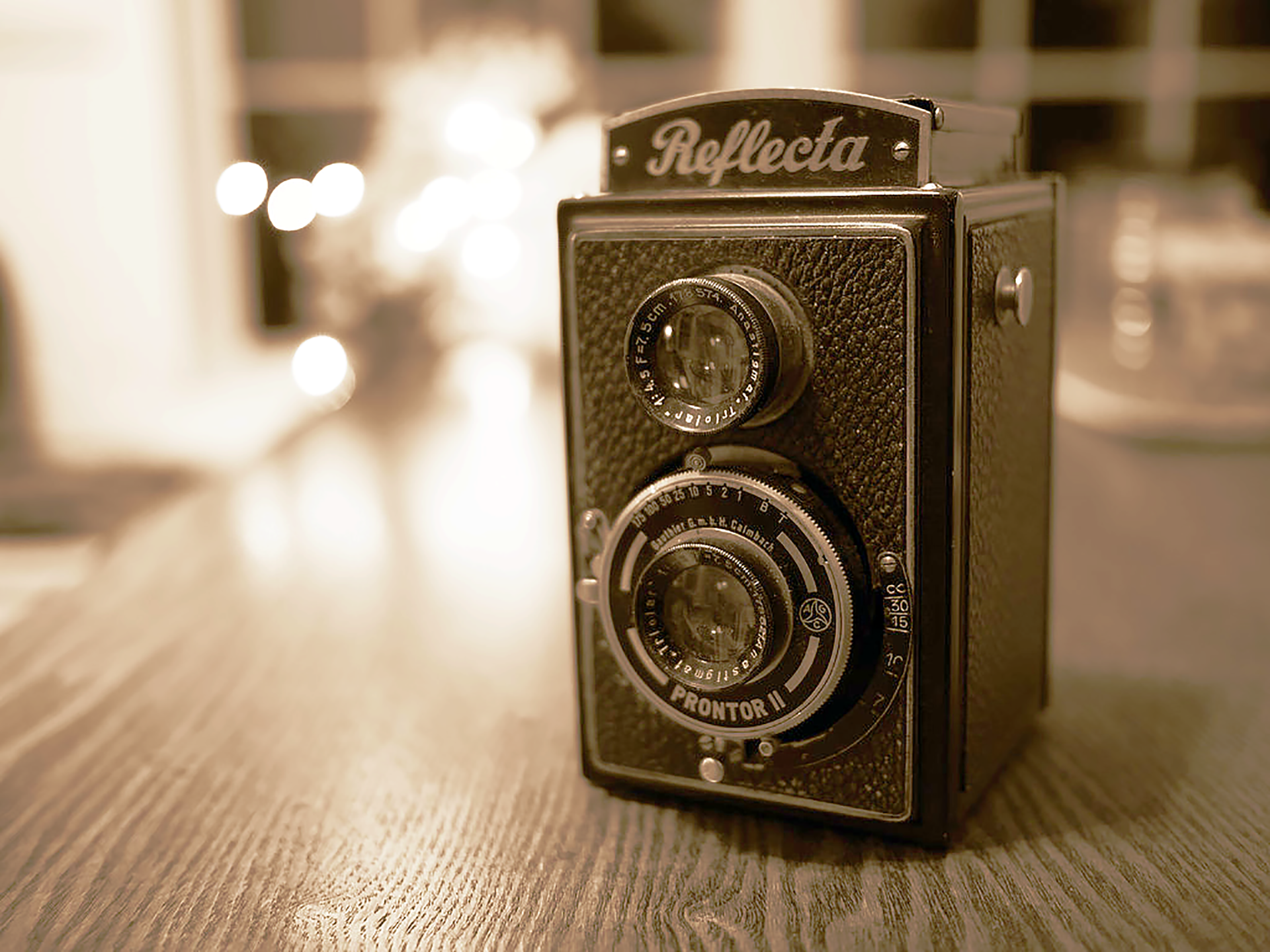
A Reflecta TLR (with C) from the period before the second world war.
FOUNDERS: Paul Franke and Reinhold Heidecke
COMPANY NAMES:
1920: Werkstatt für Feinmechanik und Optik, Franke & Heidecke; 1972: Rollei-Werke Franke & Heidecke GmbH; 1979: Rollei-Werke Franke & Heidecke GmbH & Co. KG; 1981: Rollei Fototechnic GmbH & Co. KG; 1982: Rollei split into three separate companies: Rollei Deutschland GmbH, Rollei Gebäude GmbH and Rollei Fototechnic GmbH – 100% owned by USH (United Scientific Holdings); 1987: Rollei was sold to Heinrich Mandermann for the symbolic price of 1 DM; 1995: purchased by Samsung Techwin; 1999: sold back to its internal management; 2002: bought by a Danish investment group Capitellum A/S; 2004: Rollei Fototechnic GmbH hived off its manufacturing to Rollei Produktion GmbH; 2005: Rollei Produktion GmbH renamed itself in Franke & Heidecke GmbH; 2009: Franke & Heidecke filed for bankruptcy; 2006: Rollei GmbH closed its consumer products division; 2007/2008: Rollei GmbH merged with the Danish company Phase One to form RolleiMetrics; 2009: RolleiMetrics was incorporated into Trimble Holdings GmbH (Raunheim) as Metric Imaging Department; 2009: Rollei GmbH continued to manage Rollei’s rights and licences; 2010: RCP-Technik GmbH & Co. KG purchased the Rollei brand; 2015: RCP-Technik GmbH reformed as Rollei GmbH & Co. KG.; 2010: DHW Fototechnik presented various Rollei cameras; 2015: DHW was dissolved.
COMPANY ADDRESS:
1920: Viewegstraße 32, Braunschweig, Lower Saxony; 1923: Salzdahlumer Straße, Braunschweig;
Rollei GmbH (originally Franke and Heidecke) is a German camera manufacturer with an impressive line of cameras and a history that is closely connected with the history of photography. They set the standard for TLR (Twin Lens Reflex) cameras and had great success with them, especially during the 1950s when almost every newspaper photographer used a Rolleiflex.

The history of the Rollei company as described here can be divided into two parts: everything about the original German branch and a part about the Singapore branch. Since the part about Germany is very extensive (no less than 21 pages of Word text), the history of Singapore has been given its own place on this site so as not to “drown” in the part about Rollei Germany.
 While Reinhold Heidecke was working as a production manager at Voigtländer in Braunschweig around 1916, he got the idea to manufacture a new type of rollfilm camera. However, the company rejected his proposal because they thought there would be problems keeping the film perfectly flat. Besides, their current camera range, which used conventional photographic plates, was selling well.
While Reinhold Heidecke was working as a production manager at Voigtländer in Braunschweig around 1916, he got the idea to manufacture a new type of rollfilm camera. However, the company rejected his proposal because they thought there would be problems keeping the film perfectly flat. Besides, their current camera range, which used conventional photographic plates, was selling well.
Heidecke tried unsuccessfully to secure financing to start his own company, so, at the insistence of his wife, he presented his concept to Paul Franke, a salesman and former colleague at Voigtländer. Franke was so enthusiastic he put up 75,000 M of his own money and went looking for more capital.
After he secured additional funding of 200,000 M, they resolved to go into business together. In November 1919, they filed an application to register the company “Franke & Heidecke”, which was entered into the German Trade Register on 1 February 1920.
 In need of factory space, they rented several rooms in a house at Viewegstraße 32, which became the companies first headquarters. The house survived World War II intact and stands to this day.
In need of factory space, they rented several rooms in a house at Viewegstraße 32, which became the companies first headquarters. The house survived World War II intact and stands to this day.
Other rooms in the house were used by a dancing school, who had to abandon their dancing lessons because of noise from the factory.
Within a year, Franke and Heidecke had taken over the entire building. By 1922, business was so good that they were able to take out a loan to purchase the property outright.
To get the company going, Franke and Heidecke decided to manufacture a stereo camera in the short term. Cameras of this type were popular, and Reinhold Heidecke was very familiar with them.
 As they were also in Voigtländer’s product range, however, Franke and Heidecke did not want to look as if they were simply copying theirs. They purchased several Voigtländer units, and from what they learned by dismantling these, constructed the Stereo Heidoscop. The name Heidoscop was chosen in part to remind the management at Voigtländer that they had restricted Heidecke in his work there.
As they were also in Voigtländer’s product range, however, Franke and Heidecke did not want to look as if they were simply copying theirs. They purchased several Voigtländer units, and from what they learned by dismantling these, constructed the Stereo Heidoscop. The name Heidoscop was chosen in part to remind the management at Voigtländer that they had restricted Heidecke in his work there.
The Heidoscop was a great success, exceeding all expectations. In 1923, the company introduced a Heidoscop for 117 format (B1) rollfilm. It was from this product, the “‘Roll-film Heidoscop”‘, that the name Rollei was derived, which later became the name of company.
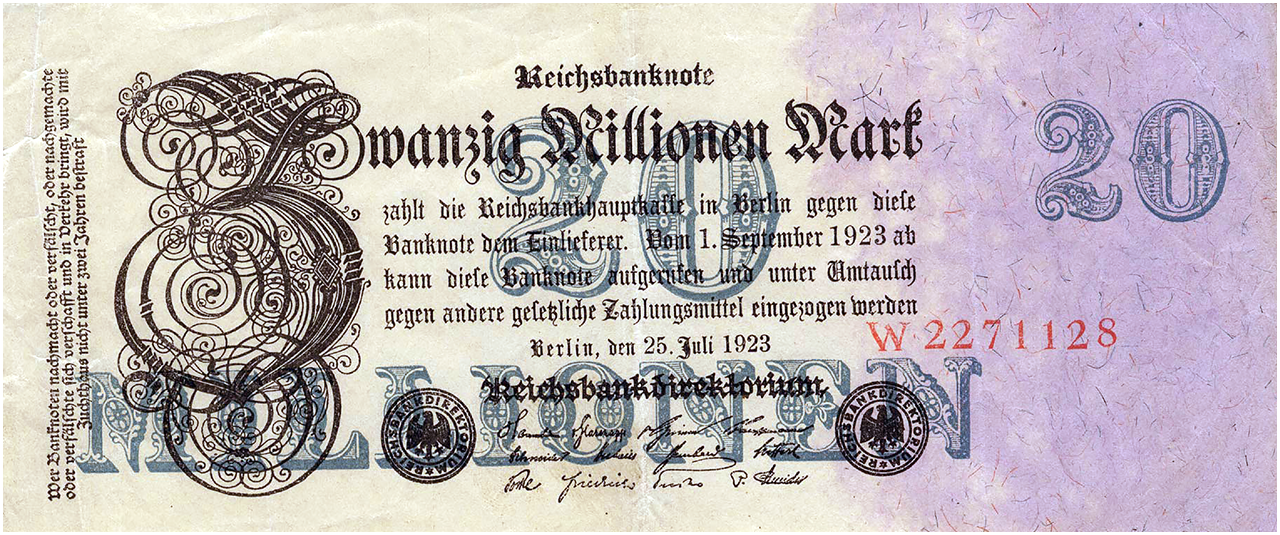
A banknote of 20 million Reichmarks, just enough to buy a loaf of bread.
 Between 1914 and 1923, the period of hyperinflation in Germany, Paul Franke lived up to his reputation as a excellent financier: he invested the income from exports (in foreign currency) so astutely that the company came through this difficult period.
Between 1914 and 1923, the period of hyperinflation in Germany, Paul Franke lived up to his reputation as a excellent financier: he invested the income from exports (in foreign currency) so astutely that the company came through this difficult period.
During this period the company acquired new premises. The City Council in Braunschweig did not really want a noisy factory operating within a residential area and pressured the company to move its factory elsewhere.
Accordingly, on 10 January 1923 the company purchased a 60,000 m² plot of land on Salzdahlumer Straße, which at that time lay just beyond the city limits. Hyperinflation had devalued the currency so much that the land purchase cost practically nothing.
Once the new factory had been built, much was expected of the new camera. However, Paul Franke proposed a temporary suspension of further development work because of the catastrophic economic situation. Heidecke concurred, believing that better times lay ahead.
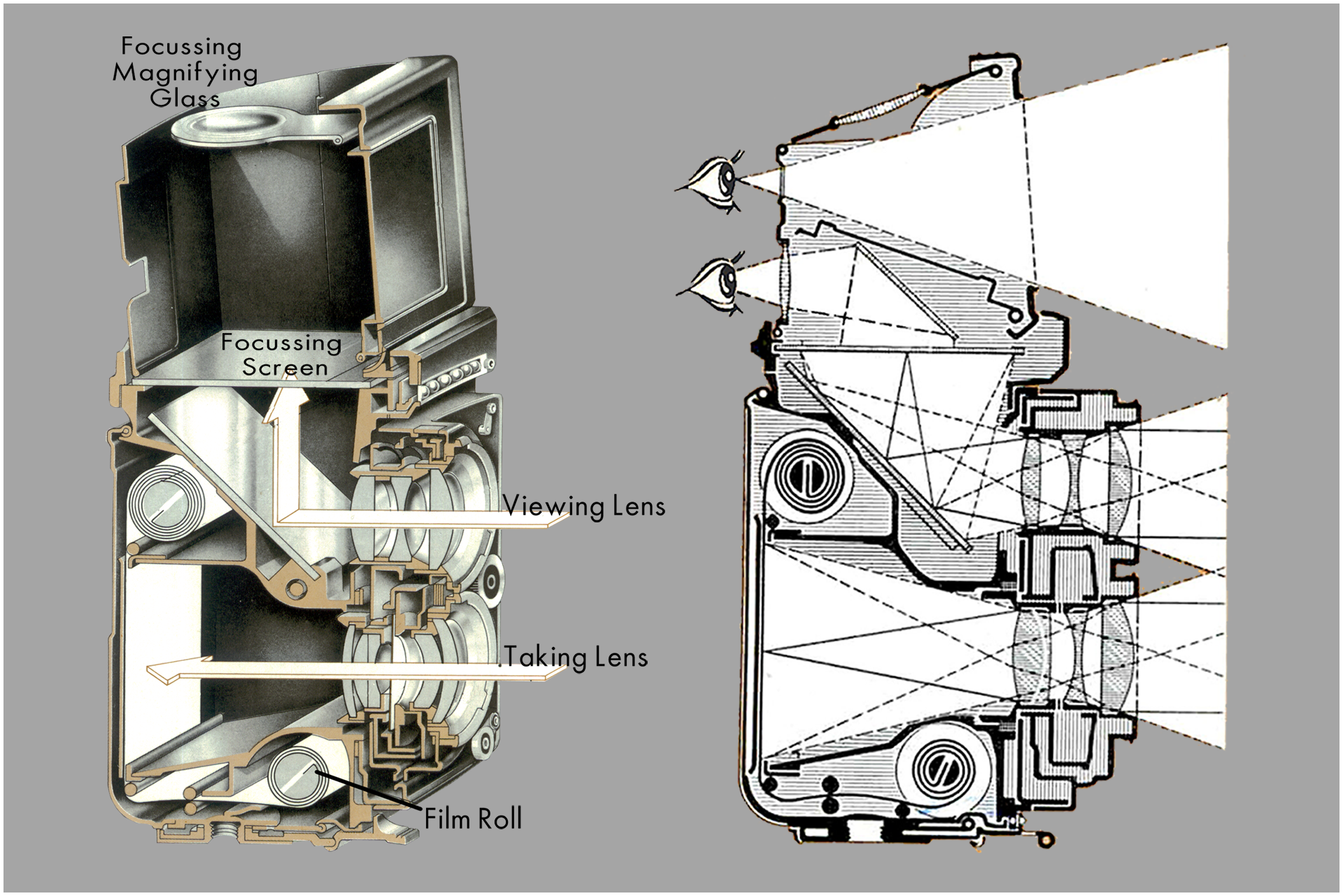
The first prototype of the new camera, named the Rolleiflex, was finally completed in 1927; it was built for absolute reliability and featured a rigid, injection-moulded housing made of aluminium.
Heidecke wanted to avoid conventional leather bellows for focusing the lens because of an earlier, bad experience: around 1916, he conducted an experiment with a Kodak camera; he left it in a cellar, and when he later retrieved it, he found that rats had eaten the bellows.
This convinced him that a camera designed for photojournalism and operation in the tropics had to work perfectly, which excluded components that might rot. He ruled out a cloth shutter curtain for the same reason, choosing instead a Compur mechanical shutter.
Focusing in the “Rolleiflex” was achieved by moving the carriage that held both the viewfinder and the imaging lens, i.e. the camera had so-called “metallic bellows”; that is, the plate enclosed the sides of the case. It was crucial that the plate remained parallel as it moved during focusing.
To achieve this, Heidecke developed an ingenious design which proved to be highly successful and, thanks to high-quality components, also for many years of service. Only the viewfinder and back of the camera, both made of aluminium, had to be handled with care, which remained the case until the camera went into production.
One more prototype was produced in 1928, and then the big moment finally arrived: on August 10, the first camera went into series production. Altogether, 14 units were made that year.
Then, at 11am on Monday, 11 December, selected journalists were invited to a press conference in the festively decorated production area. Paul Franke put together press packs for the occasion, which led one magazine to publish a test report without ever actually handling the camera.
Although Franke had forgotten to prepare sample photographs to distribute to the press, he neatly avoided this oversight by distributing empty, labelled cartons around the building, just for show.
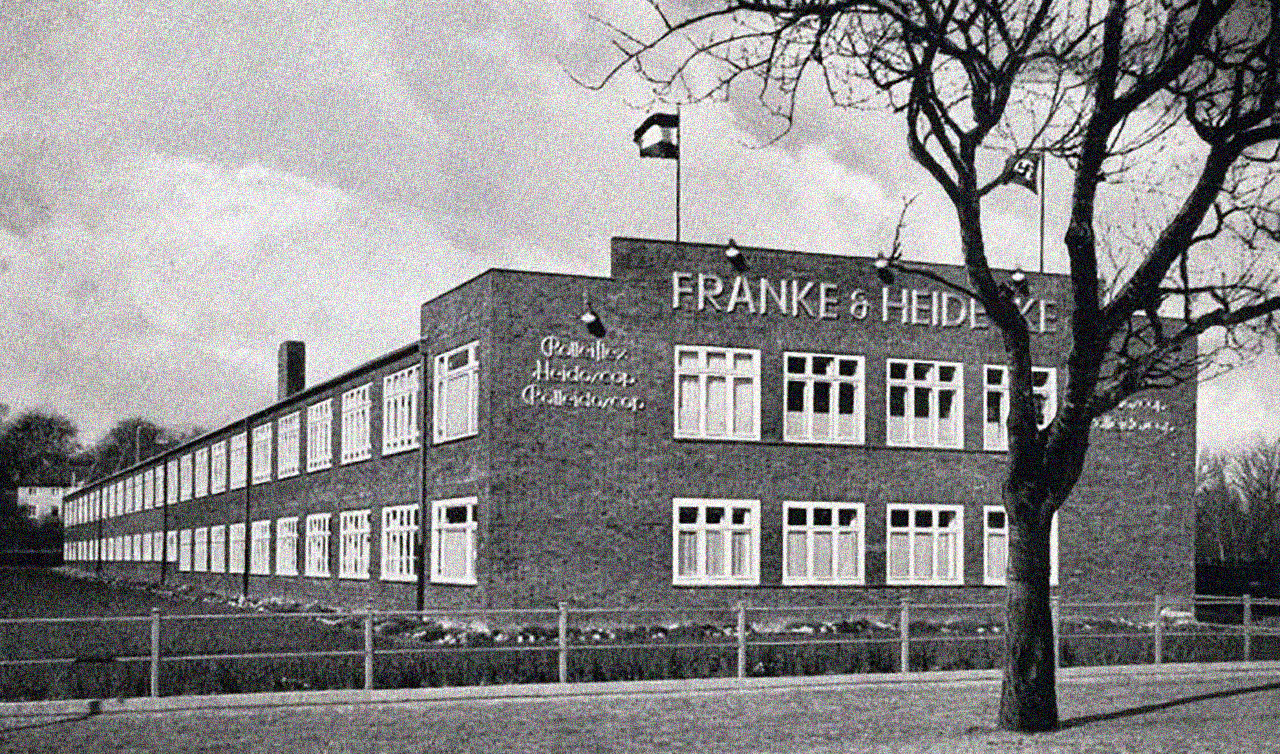
Rollei in the Salzdahlumer Street in Braunschweig.
Demand for the new camera exceeded production capacity by a wide margin. Even though it was quite an expensive product, orders for 800 cameras were received in the first month alone. A Rolleiflex fitted with a f/4.5 lens cost 198 Reichmarks (RM), with a f/3.8 lens it cost 225 RM.
This success made it possible to obtain credit to buy a new factory and thrive in the midst of the Great Depression. In the old factory, a further 23,720 cameras were produced up until 1932.
In 1930, the company moved into the new factory on Salzdahlumer Straße. It comprised two floors with a total area of 2,000 m², sufficient space to manufacture 20,000 cameras annually. Although the site was well served by public transport, it lay some distance from the city center, so the company built a canteen and shop for its workforce, which now numbered 309 employees.
Wilhelmine Heidecke, Reinhold Heidecke’s wife, suggested building a “ladies camera” – a Rolleiflex that used 35 mm film. This was the first Rolleiflex to come on the market that used a crank handle to advance the film, a popular feature that emerged on the 6×6 model shortly thereafter.
The Rolleiflex 4×4 – known as the Babyflex outside of Germany – used 127 format film and came in two versions with either a f/3.5 and a f/2.8 Tessar lens with a focal length of 60 mm. Unfortunately, sales were disappointing, so production never resumed after the war.
The company management believed that many Rollei photographers only made contact prints from their negatives because they had no access to enlargers. However, this was not practical in the case of the Babyflex as the negatives were simply too small.
As a result, it was not until 1957 that a new version came onto the market priced at 355 Deutschmarks (DM), firstly in grey, and later (from 1963) in black. By the time production ceased in 1968, over 67,000 units had been made. By this time few amateur photographers made contact prints any more, preferring instead to take 35 mm transparencies (slides), which could be viewed on a slide projector.
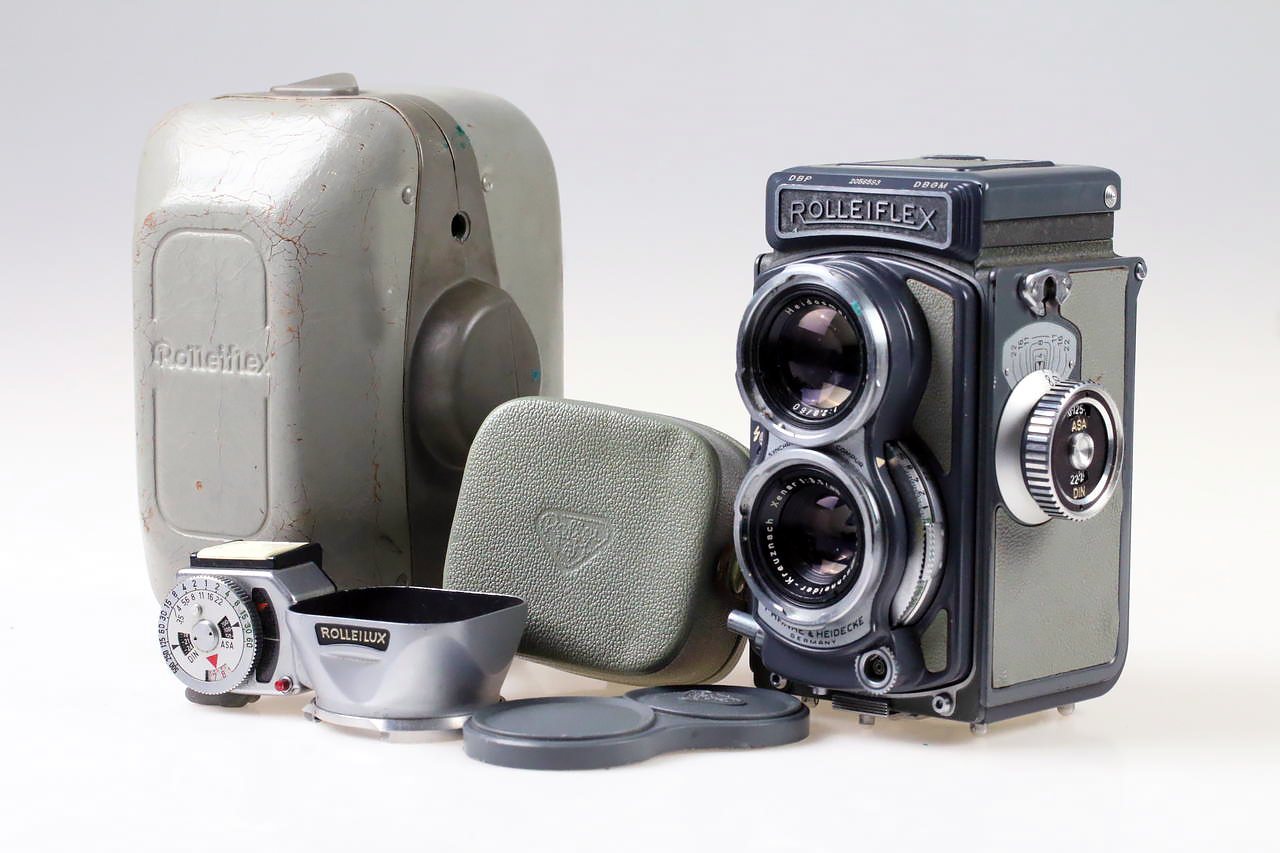
The Automatic Rolleiflex 4×4, popularly known as the “Gray Baby” Rolleiflex, was introduced in 1957, at an announced list price of USD $133.65. It is a knob-advance twin-lens reflex yielding 12 exposures of 4x4cm on 127 film.
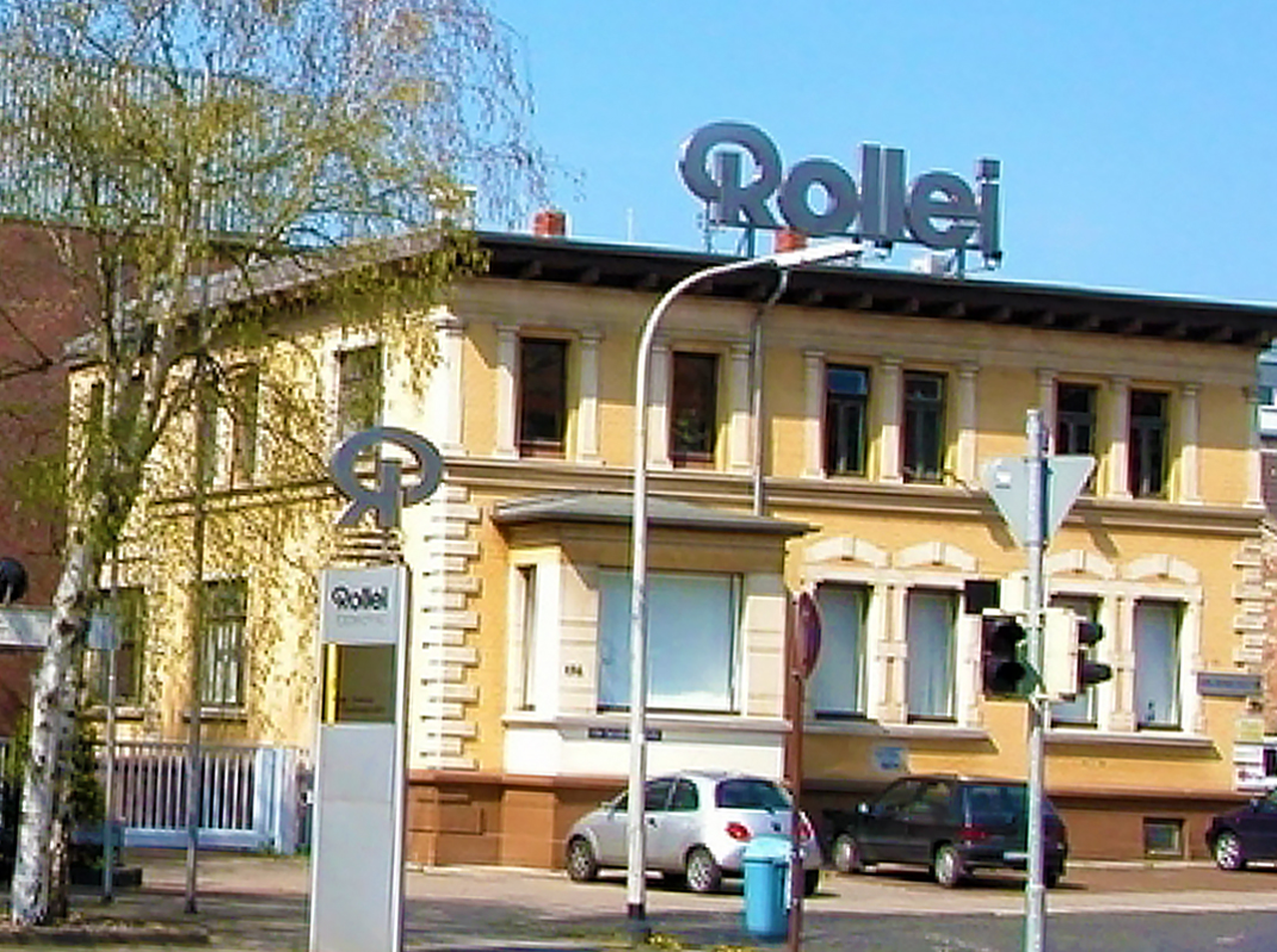
The demand for the Rolleiflex forced Rollei to drastically expand the housing on Salzdahlumer Street.
In 1932, Salomon Kahn, the owner of the renowned Fotostudios Kardas in Berlin, approached Rollei, asking if they could build him a large Rolleiflex for the 9 cm x 9 cm film format. Kahn explained as a pretext, that his customers liked to keep the negatives because they had doubts about the durability of prints. Moreover, roll film was much easier to archive than glass plates.
 In fact, Kahn had concealed the real rationale behind his request because Franke & Heidecke supported the Nazi Party in order to get the workers they needed.
In fact, Kahn had concealed the real rationale behind his request because Franke & Heidecke supported the Nazi Party in order to get the workers they needed.
Fearing the consequences of leasing to a Jew, the owner of his studio had already shut off his water supply. This meant that Kahn had to develop his negatives at home, whereby roll film was easier to transport than plates. A roll film camera would also facilitate house calls.
Having built a small Rolleiflex, the obvious next step was to make a larger version. Indeed, the slogan “you see what you get” had already been envisaged for it. Such a camera would make studio work more straightforward; at that time, the photographer had to stoop under a black cloth to adjust the camera, and then address the subject from this awkward position.
Nevertheless, after the failure of the Babyflex, the company proceeded with caution by initially building some prototypes. One was delivered to Kahn, and the others were shipped abroad in pairs – one to be retained by the importer as a demonstration unit, the other to be delivered to a reputable studio.
The project was eventually abandoned after Solomon Kahn was arrested and nobody else showed any interest in the studio camera. Of the 14 prototypes that were built, one still exists: it currently belongs to the Municipal Museum of Braunschweig.
In 1933, the Rolleicord, a cheaper version of the Rolleiflex, came onto the market. It had simpler optics, a steel back-plate, and a knob instead of a handle for winding on the film. The Rolleicord 1 cost 105 Reichsmarks and altogether 2,699,505 Rolleicords were manufactured until production ceased in 1976.
The release of the Rolleiflex Automat in the middle of June 1937 marked another significant milestone for Franke & Heidecke. Prior to this, after taking a picture, two separate steps were required to advance the film and cock the shutter. The Rolleiflex Automat combined the two, whereby advancing the film automatically cocked the shutter.
Not only did this innovation speed up the whole process, it also eliminated accidental double exposures resulting from inadvertently forgetting to wind on the film. It also had a film-feeler mechanism which senses the thickness of the film backing to accurately begin counting frames, so no red window was needed.
The Rolleiflex Automat won the Grand Prix award at the Paris World’s Fair in 1937, which generated a lot of interest. The company founders were so taken with their new creation that they immediately commissioned the construction of a second factory.
The new factory, comprising three floors with a combined production area of 3,000 m², provided sufficient space to house a further 700 workers. It was completed in 1938, and by the end of that year the 300,000th camera had come off the production line. In retrospect, Reinhold Heidecke regarded the Rolleiflex Automat as his favourite camera.
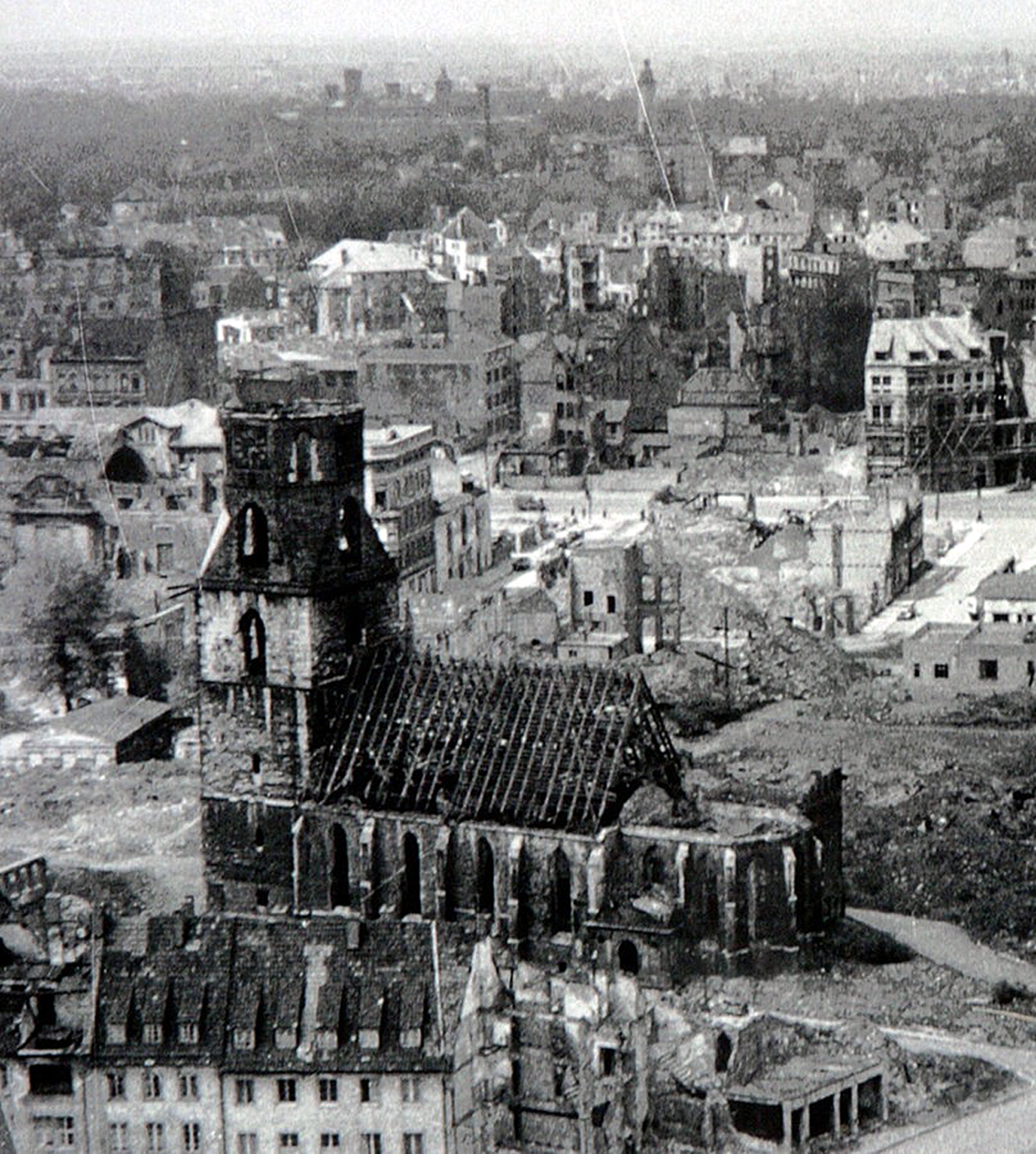
End time landscape: View of Braunsweich after the night of the bombing.
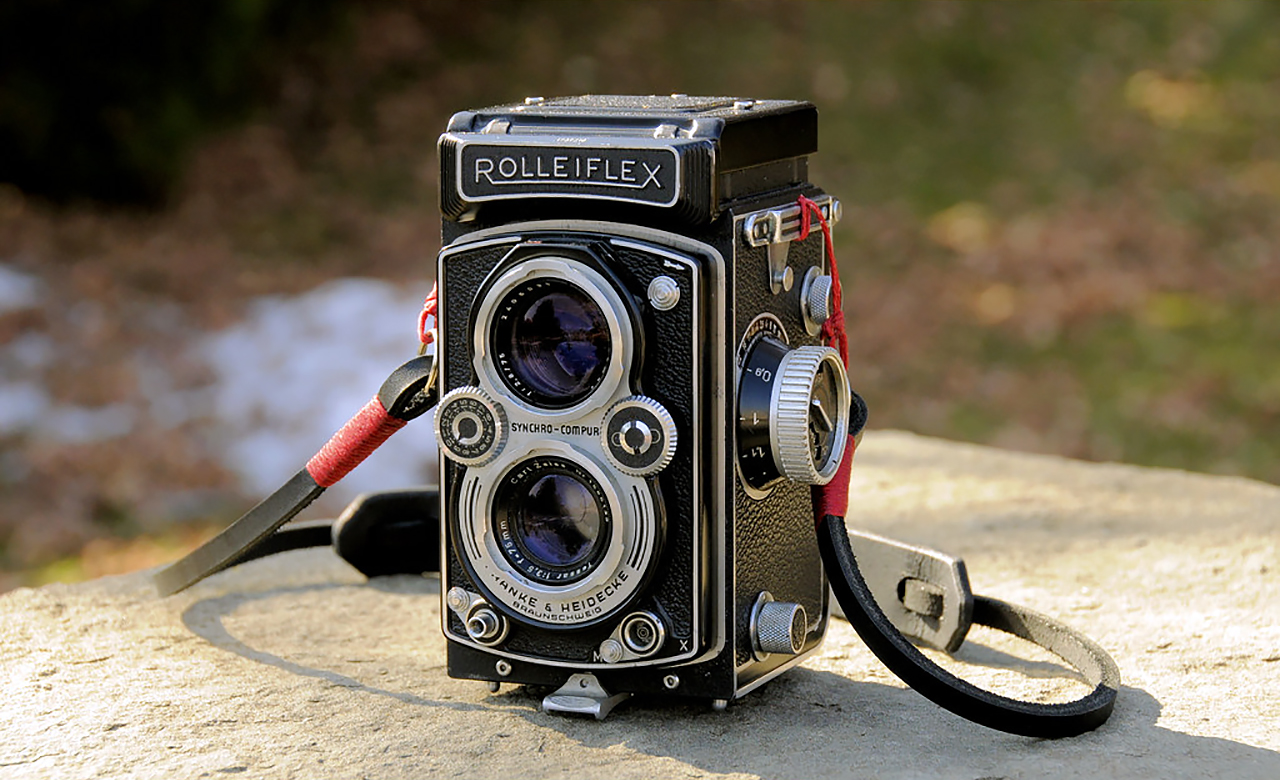
The Rolleiflex Automat name stands to introduced automatic film counter in 1937; this counter is obviating the need for the ruby window that forced the photographer to read the frame number off the back of the film itself. This model won the Grand Prix award at the Paris World’s Fair in 1937.
During World War II, the company was required by the Nazis to support the war economy. As a result, Rollei was unable to develop any new models from 1940, and production of its stereo camera finally came to an end. Rollei also suffered massive losses resulting from its inability to collect monies owed by debtors from “enemy states”. Furthermore, bureaucratic formalities and controls hindered exports to neutral countries. This situation, combined with the collapse in overseas trade, forced Paul Franke to reduce the workforce to 600 people.
Alongside its renowned cameras, Rollei – like its neighbor Voigtländer – was now engaged in the manufacture of equipment deemed important to the German war effort: precision optics for binoculars, periscopes, telescopic sights (for sniper rifles, for example), and theodolites for directing artillery. Although these products consumed the bulk of the company’s resources, some regular product development was still possible, and work on tempered glass lenses as well as flash synchronization continued, albeit on a small scale. The cameras were used inter alia in military reconnaissance.
As Braunschweig was one of the centers of the German armaments industry, it was subjected to frequent, sometimes heavy aerial bombardment, which seriously damaged the city. On 1 and 15 January 1944, and again on 13 August, Rollei too suffered air raid damage to its factories. By the time the war ended on 12 April 1945, almost 65% of its plant and machinery had been destroyed.
After the war, Braunschweig ended up in the British occupation zone. The allied occupying forces wanted Rollei to survive as a company, even helping it procure lenses from Zeiss, which had ended up in the Soviet occupation zone. Franke & Heidecke started over with 72 workers, and by Christmas 1945 the workforce had grown to 172 employees.
Everything the company made in 1945 was delivered to the British Ministry of Defence. The difficult supply situation forced Rollei into using lenses from the West German manufacturer Schneider as well. However, this was not a problem as Schneider’s quality control was equal to that of Zeiss.
Paul Franke’s untimely death in the spring of 1950 had serious consequences for the company though. Not only did his passing mark the end of an era for Rollei, the loss of his business acumen also led the company to the edge of ruin on more than one occasion.
After Paul Franke’s death, his son Horst Franke succeeded him. Overall, he proved to be less effective as a manager than his father. In particular, he lacked the flexibility required to adapt to changing circumstances; for example, he failed to reduce the workforce in difficult times, whereas Paul Franke had done so immediately at the onset of the war.
To begin with, Rollei had no real competition, which yielded ever increasing sales of its cameras. In the 1950s, almost every press photographer owned a Rolleiflex, and quite a few amateurs did as well. The camera was so popular that it bred over 500 imitations, more than half of them from Japan. The factory grew rapidly; by 1956 – the year the millionth camera was sold – the workforce numbered 1600, and by 1957 the workforce had grown to 2000 employees.
 Hans Hass, the underwater diving pioneer, approached Franke & Heidecke to see if they could make him a special housing suitable for underwater photography. As a result, Rollei developed the Rolleimarin, an ingenious underwater camera housing rated for depths up to 100 m.
Hans Hass, the underwater diving pioneer, approached Franke & Heidecke to see if they could make him a special housing suitable for underwater photography. As a result, Rollei developed the Rolleimarin, an ingenious underwater camera housing rated for depths up to 100 m.
It was made from two cast metal parts. The top part contained a glass prism that was attached to the camera’s focusing screen. There were also knobs on top of the housing for adjusting the exposure and aperture settings. On the bottom, left-hand side of the housing was the focusing knob, and on the right-hand side, the winding handle and a frame counter. There was also a filter turret. A special flash bulb could be attached for flash photography, in which case a battery pack had to be installed inside the housing. Of course, a viewfinder frame could also be screwed onto the housing.
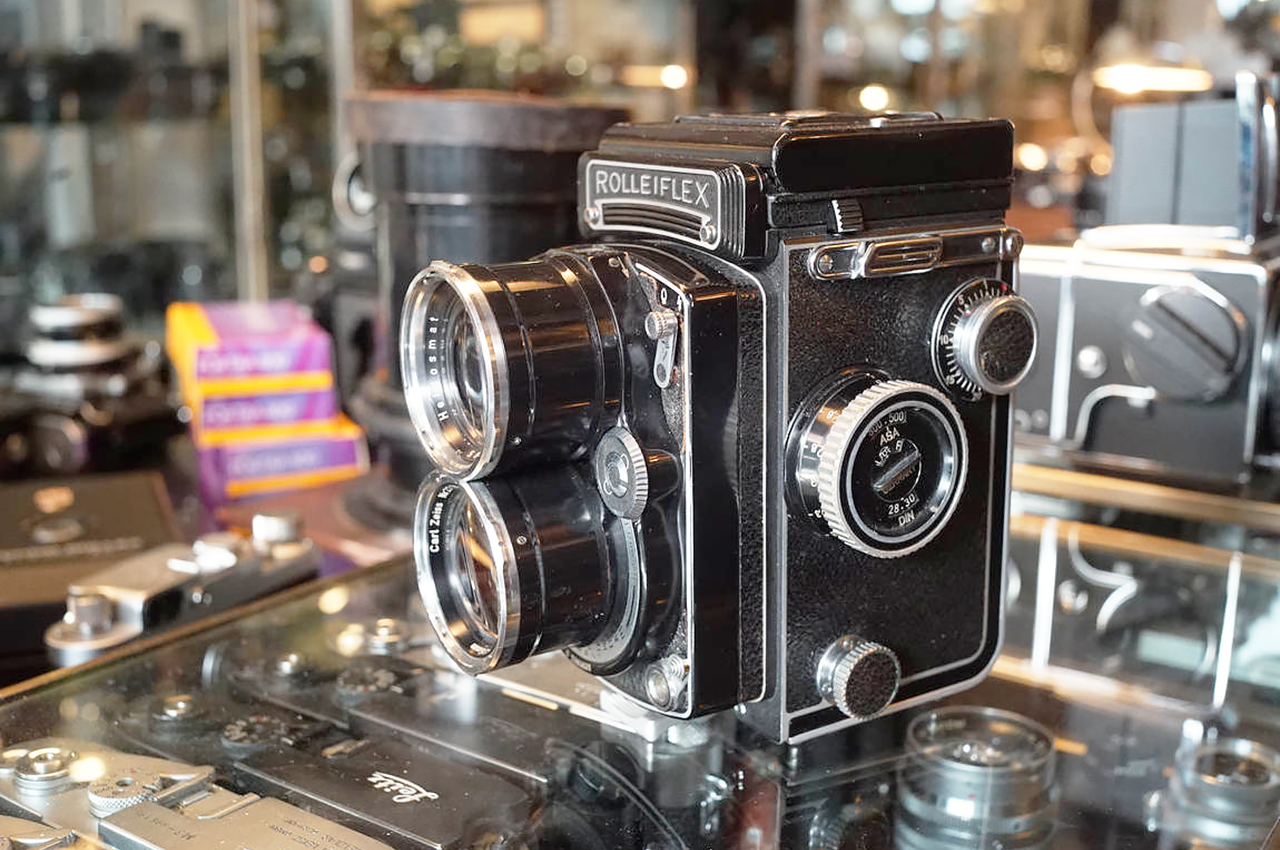
While Mamiya developed a truly interchangeable lens TLR camera, Rollei took a different track and created TLR models with fixed lenses that were not the “standard” 75mm or 80mm. In 1959, Rollei introduced the Tele Rolleiflex with a focal length that is roughly equivalent to a 70mm lens on a 35mm camera.
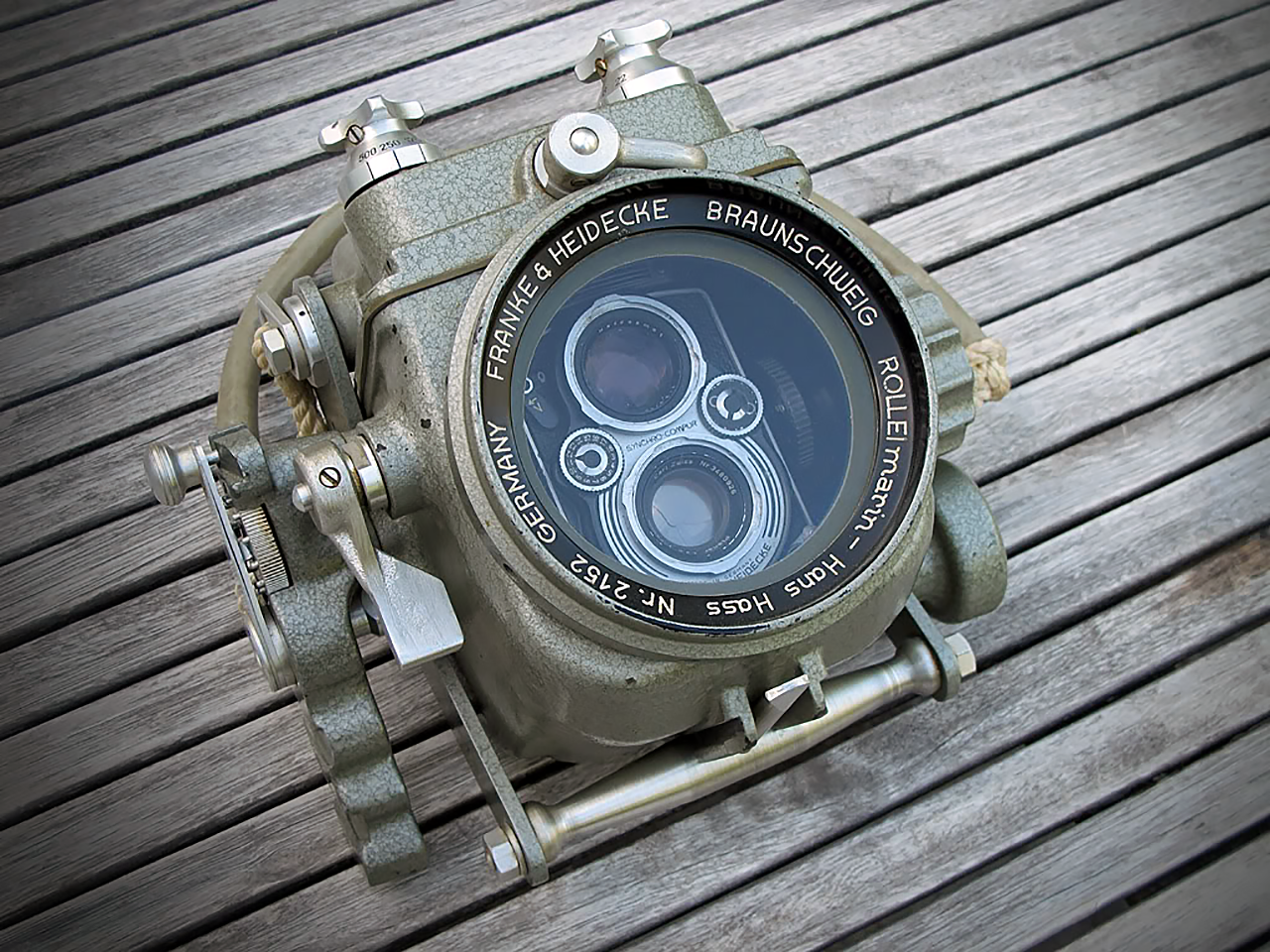
The Rolleimarin was designed to make a Rolleiflex usable in undersea photography, with all controls worked by levers and knobs in the housing connecting onto their equivalents on the camera, which fits snugly inside.
 Although there were many imitators, none could match the quality of the original Rolleiflex – that is, until the Mamiya C-Series from Japan appeared in 1956. Mamiya initially offered three sets of interchangeable double lenses for it: normal, telephoto and wide-angle. Later on, additional double lenses with focal lengths of 55 mm and 250 mm were introduced; one even had a dimmable viewfinder lens, which enabled depth of field adjustment through the viewfinder.
Although there were many imitators, none could match the quality of the original Rolleiflex – that is, until the Mamiya C-Series from Japan appeared in 1956. Mamiya initially offered three sets of interchangeable double lenses for it: normal, telephoto and wide-angle. Later on, additional double lenses with focal lengths of 55 mm and 250 mm were introduced; one even had a dimmable viewfinder lens, which enabled depth of field adjustment through the viewfinder.
By comparison, the Rolleiflex only had a single, fixed normal lens, although the Rollei Magnar tele-converter lens with 4x magnification was available as an accessory. This could be attached to the front of the primary lens while a mask (which did not magnify the image) was placed over the focusing screen.
In response to the challenge from Mamiya, Rollei created a camera comparable to the C-Series and gave it to photojournalists to test. Although they were enthusiastic, Rollei did not believe – much to the astonishment of industry experts – that it could manufacture removable lenses with the required precision.
Instead, as a compromise, the company introduced in 1959 the Tele-Rolleiflex with a Zeiss Sonnar f/4, 135 mm lens. This camera was particularly well-suited to portrait photography. Meanwhile, plans for another model with a 150 mm lens were abandoned.
The Wide Angle Rolleiflex (also known as the Rolleiwide) with an f/4, 55 mm lens followed in 1961. It only remained in production until 1967, which today makes it one of the rarest Rolleiflex cameras – excluding special editions. Its main advantage lay in its ability to photograph large crowds at heavily attended events.
Reinhold Heidecke kept on making new cameras right up until his death in 1960, although no one bothered to admonish him over the development costs any more. One of his projects was the Magic, which required several expensive machine tools to be built – expenditure that could not be justified relative to the small number that were produced. In contrast, Agfa preferred the opposite approach, of always developing as many models as possible from an existing camera housing.
The Magic, although intended for amateur photographers, was relatively expensive at 435 DM. It featured an automatic exposure control system driven by a coupled selenium light meter which could select shutter speeds from 1/30 sec to 1/300 sec and apertures from f/3.5 to f/22. There were only two manual controls: one for focusing, the other for selecting either a shutter speed of 1/30 sec (for flash photography), or Bulb (for long-exposure night photography). Its successor, the Magic II, cost 498 DM and also featured manual exposure control.
By the end of 1950s, the market for twin-lens medium format cameras had gradually become saturated. More and more amateur photographers and photojournalists were using 35 mm format cameras, while studio photographers preferred single-lens medium format cameras. Although they were more expensive, single-lens cameras offered film holders, which could quickly be swapped (an assistant loaded the film), as well as interchangeable lenses.
 Hasselblad was the market leader in this segment. The Swedish company introduced their first camera, the Hasselblad 1600, in 1948 and the 1000F in 1952. However, these models were regarded as being technically inferior because the shutters were unreliable.
Hasselblad was the market leader in this segment. The Swedish company introduced their first camera, the Hasselblad 1600, in 1948 and the 1000F in 1952. However, these models were regarded as being technically inferior because the shutters were unreliable.
While it was no threat to the fully developed Rolleiflex to begin with, that situation changed when the legendary Hasselblad 500C featuring a Compur leaf shutter appeared in 1957.
The management of Rollei under Horst Franke were caught napping, having failed to produce a camera that could match the latest Hasselblad. As a consequence, sales plummeted and the company got into financial difficulties. In the end, Horst Franke relinquished his position as general manager.
In 1960, Rollei introduced its first slide projector, the P11. It included two slide trays: the left-hand tray was for 35 mm (5 cm×5 cm) slides, the right-hand tray was for medium format (7 cm×7 cm) slides. The Rollei Universal Projector sold for 398.60 DM, plus 97.50 DM for a standard lens.
The P11 remained in production until 1978; many more projectors were subsequently added to the range, providing a major boost to Rollei’s turnover.
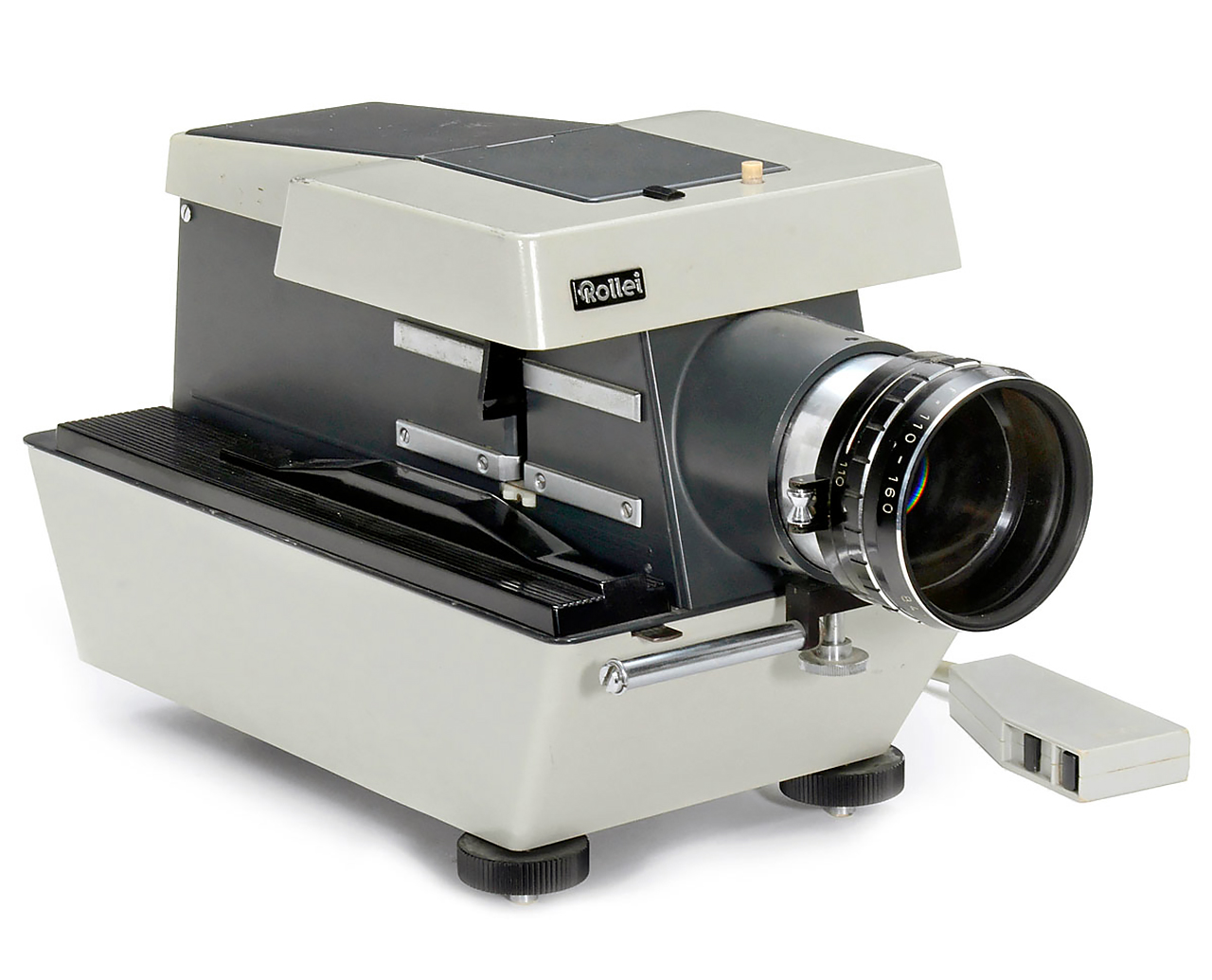
In 1960, Rollei introduced its first slide projector, the P11. The Rollei P11 is a dual format slide projector produced by Rollei between the early 1960s until late 1970s. It features two areas for holding slide trays. One side accommodates mounted 35mm slides while the other side works with mounted medium format (6x6cm) slides.
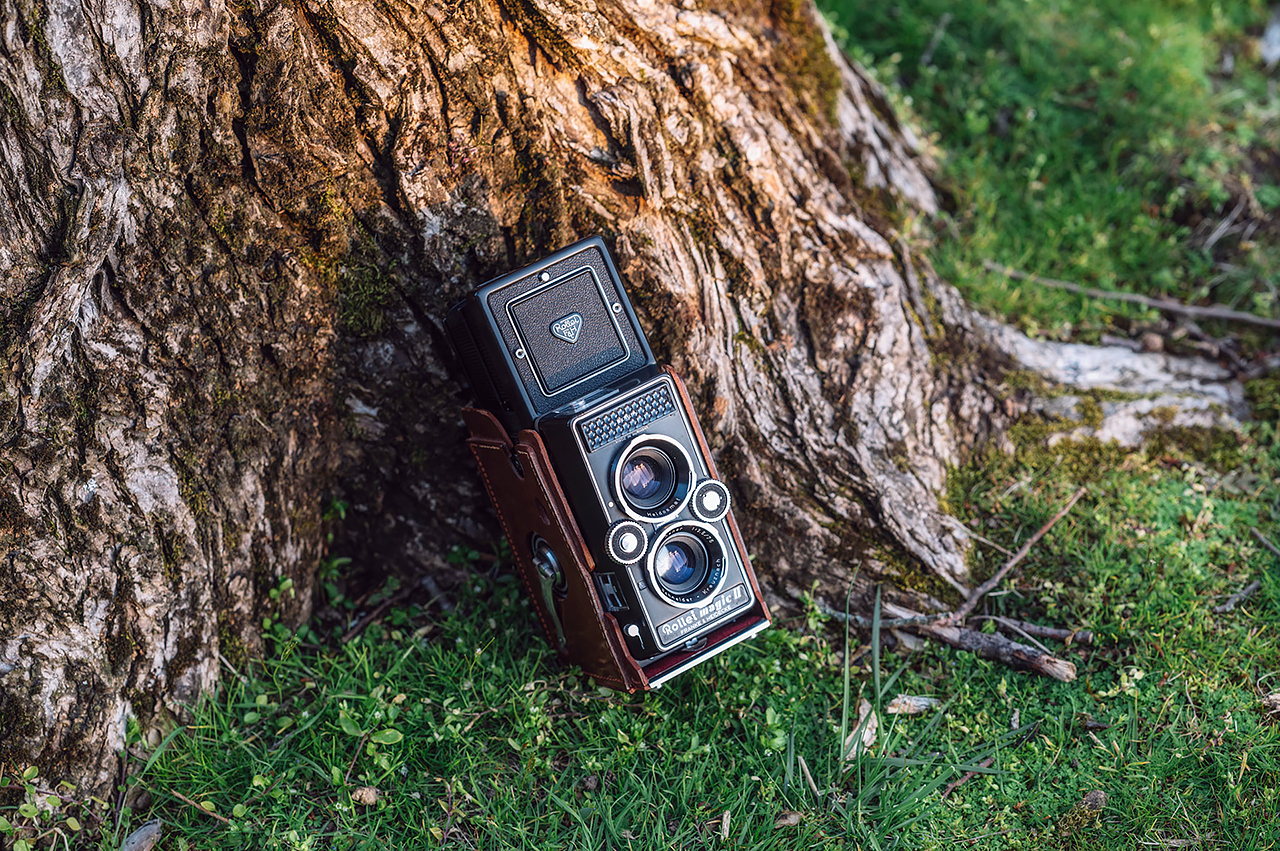
The Rollei Magic II is a medium format twin lens reflex camera, produced by Franke & Heidecke between 1962-1968, as a direct successor to the original Rollei Magic. Like its predecessor, the Magic II is capable of fully automatic exposure, as governed by a built-in selenium cell meter.
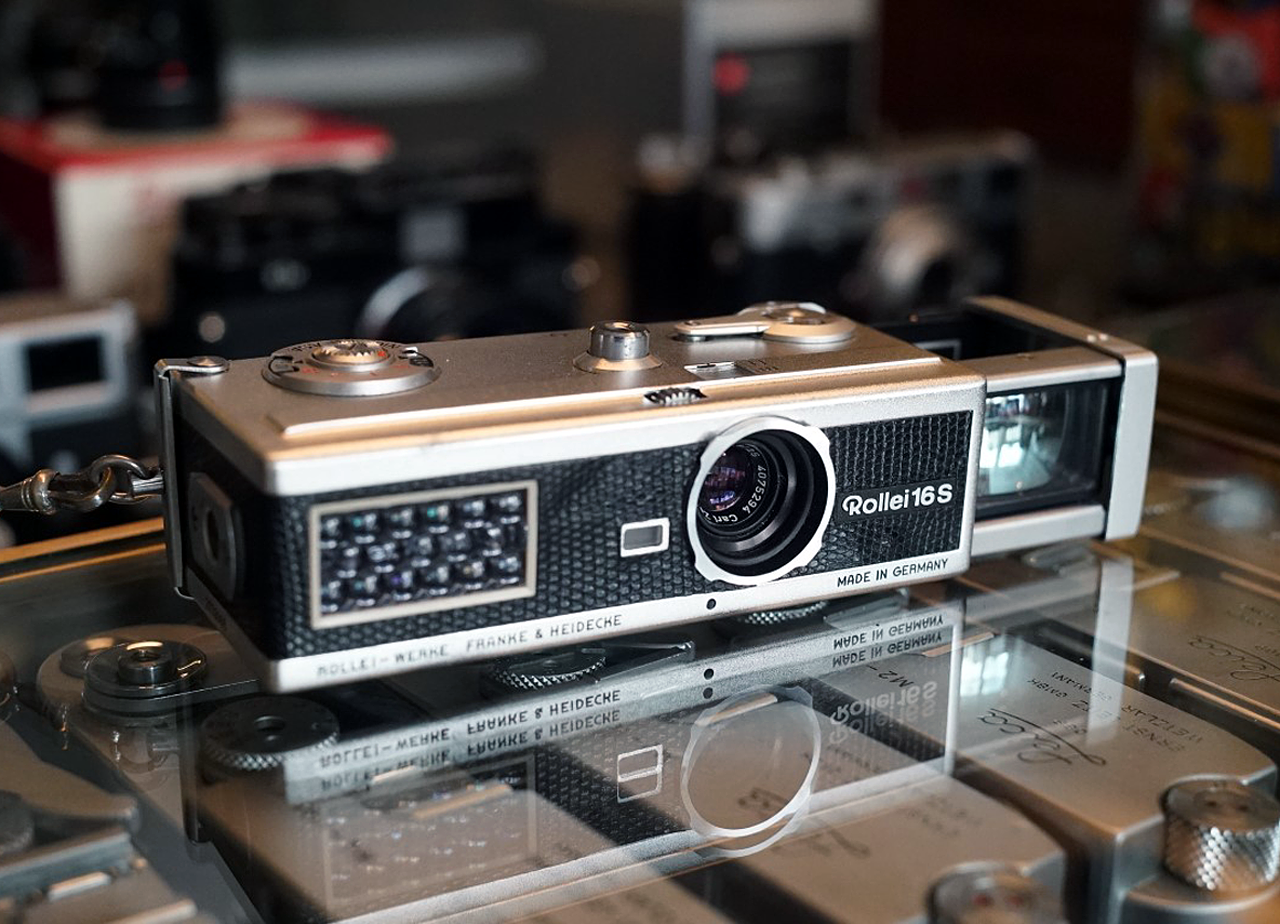
In 1963, Rollei introduced the Rollei 16, its first all-new camera design since the war. It was a 16 mm camera in the format 12 mm x 17 mm with a Tessar f/2.8, 25 mm lens and cost 425 DM.
 In retrospect, it seems unlikely that such an unusual format might return Rollei to profitability. However, the German camera industry believed that this was the way forward, and both Leica and Wirgin (through their Edixa brand) produced similar designs.
In retrospect, it seems unlikely that such an unusual format might return Rollei to profitability. However, the German camera industry believed that this was the way forward, and both Leica and Wirgin (through their Edixa brand) produced similar designs.
The Rollei 16 used special Super 16 film cartridges with a capacity of 18 frames. As no film manufacturer was interested in making this film format, Rollei had to manufacture the film itself. A roll of B/W film cost 5 DM, while slide film (available until 1981) cost 12.50 DM, including development.
As Rollei spent a lot on advertising, this camera did little to alleviate its dire financial situation. Reliance on a film format that Kodak, the market leader, did not support was foolhardy. An improved successor, the Rollei 16S, was released in 1965.
Reorganisation of the product line
 To help return the company to profitability, Rollei’s management sought advice from a number of experts. One of them, Heinrich Peesel, a physicist from Hamburg, produced a concise, 5-page report that so impressed Rollei management that they offered him the chairmanship of the board, thereby accepting that far-reaching changes were necessary.
To help return the company to profitability, Rollei’s management sought advice from a number of experts. One of them, Heinrich Peesel, a physicist from Hamburg, produced a concise, 5-page report that so impressed Rollei management that they offered him the chairmanship of the board, thereby accepting that far-reaching changes were necessary.
Peesel, then 38 years old, thus succeeded Horst Franke as chairman of the board on 1 January 1964. He promptly set Rollei onto an extremely risky course, which, despite some early successes, ultimately ended in a complete fiasco. His basic philosophy was to explore all possible avenues in photography rather than concentrate on a single product line.
His approach was diametrically opposite to the company’s previous management policy, as illustrated by the following example; when the British occupation forces queried Rollei as to the secret of their success, the response was: “there was no secret – it was the result of 25 years’ experience and concentrating on a single camera type”.
Peesel asked to see all the plans for new products so that he could evaluate them. But in reality, few were actually built:
- • the Rollei 35, a miniature camera that used industry standard 35 mm film
- • the Rolleiscop slide projector
- • the SL 66, a counterpart to the Hasselblad 500C
For its time, the Rollei 35 was the smallest camera that used standard 35 mm film cartridges, which made it an ideal second camera for amateur photographers. In contrast to 16 mm cameras (especially pocket cameras that came along later), there was no need to work with two different film formats, which was especially convenient for showing slides.
Equally important, image quality was not compromised, despite the pocket camera format. Over time, several Rollei 35 models were released; especially notable was the 35S which had a 5-element Zeiss Sonnar f/2.8, 40 mm lens.
 The Rolleiscop was a compact, upright slide projector that transported slides via a gravity-fed, conveyor belt system. The slides were stacked one behind the other into proprietary, slot less magazines. Each had a capacity of 32 slides (with glass frames), or 72 slides (with cardboard frames).
The Rolleiscop was a compact, upright slide projector that transported slides via a gravity-fed, conveyor belt system. The slides were stacked one behind the other into proprietary, slot less magazines. Each had a capacity of 32 slides (with glass frames), or 72 slides (with cardboard frames).
Different sized slides could be mixed together as long as their frames were of uniform thickness and not warped.
Peesel also increased the advertising budget significantly and reorganised production to improve efficiency. In addition, he laid off 110 out of 120 supervisors and instigated a company-wide employee suggestion scheme.
Rollei’s new products found favour with its customers, which helped to boost its annual turnover by 30% in comparison to 1963 – the year that the company posted losses in the midst of the first economic downturn since the war. Turnover increased from 24 million DM in 1964 to 85 million DM in 1970. Others products that followed were less successful, yet the company kept on building new factories that were inappropriate to the size of their business.
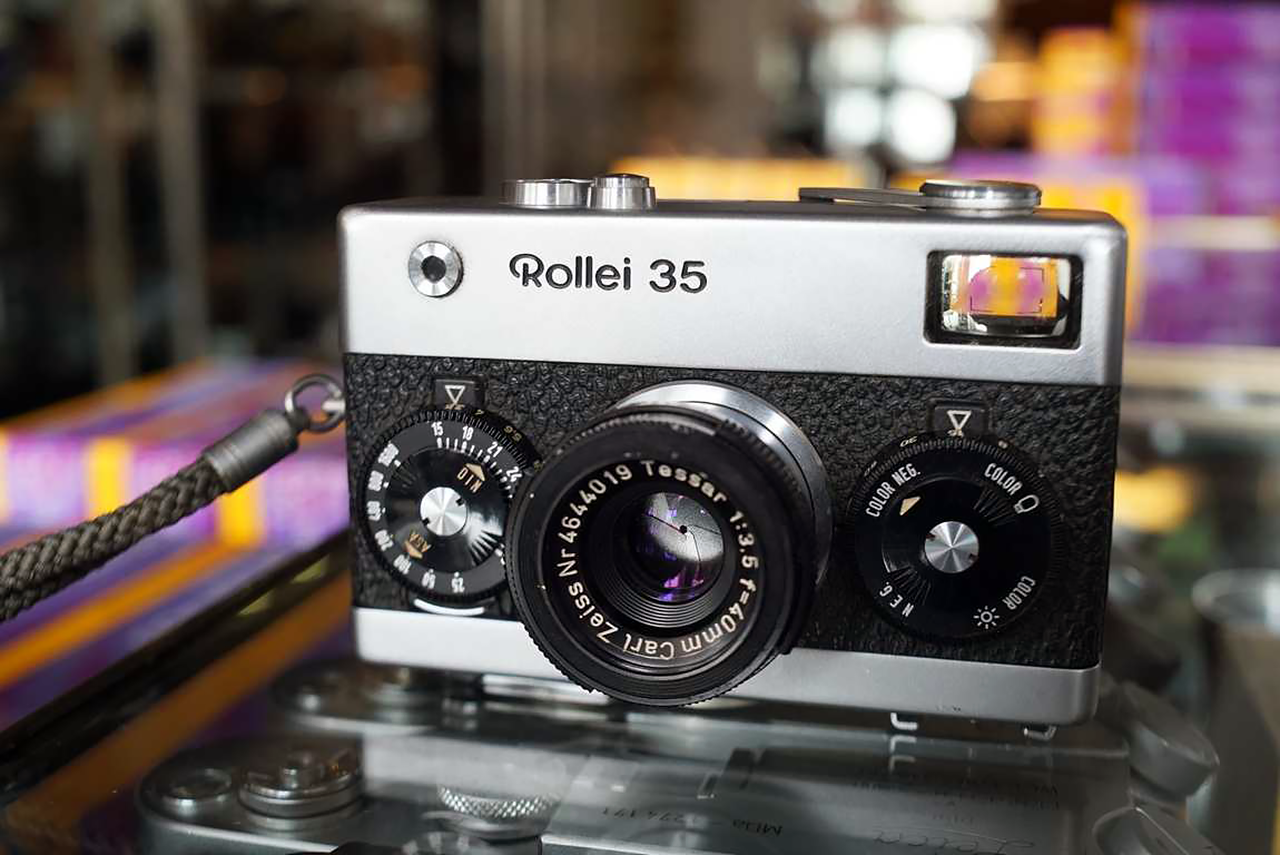
The Rollei 35 is a 35mm miniature viewfinder camera built by Rollei. The original Rollei 35, when introduced at Photokina in 1966, was the smallest existing 135 film camera. In 30 years, about 2 million Rollei 35 series cameras were manufactured.
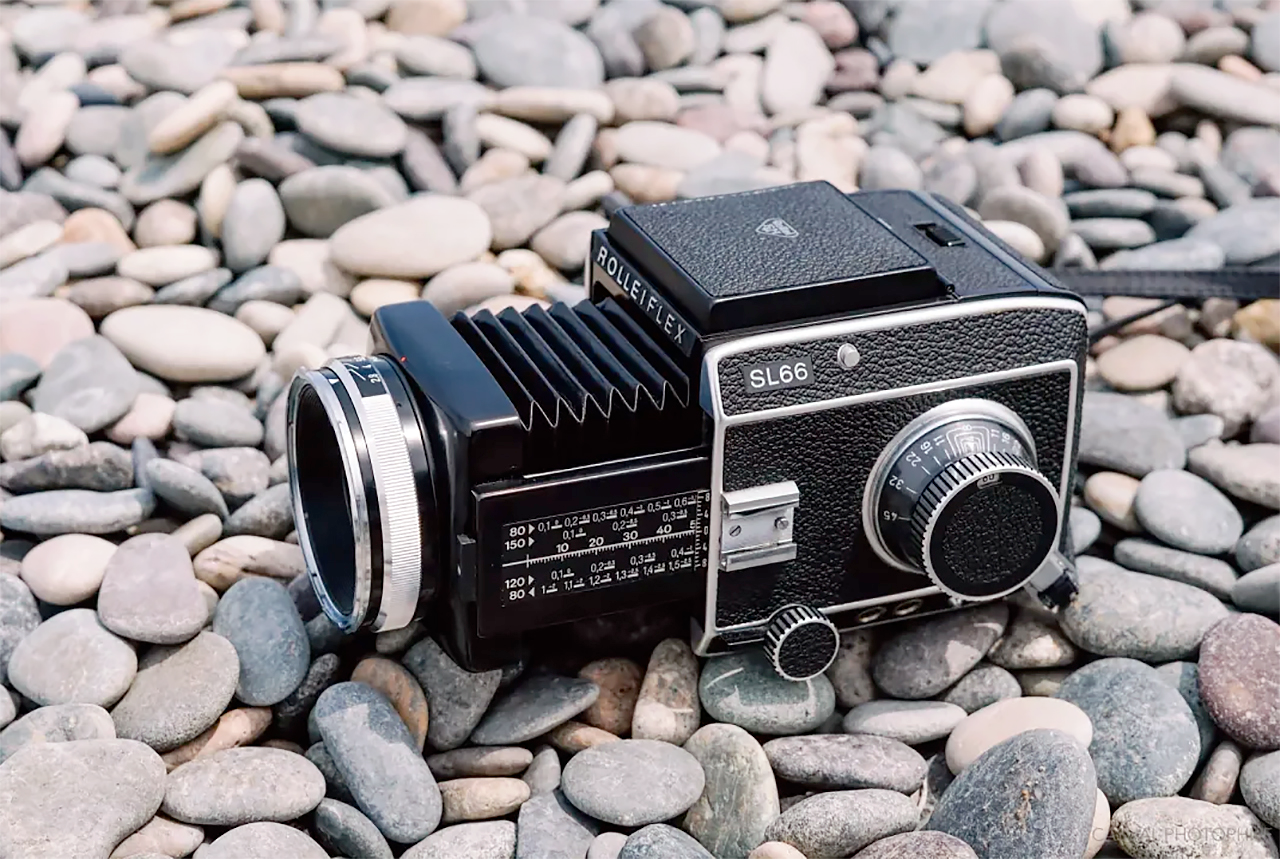
The Rolleiflex SL66 is a medium format single lens reflex camera made by Rollei, in regular production from 1966–82. Although Rollei never officially discontinued the Rollei SL66, it was removed from their promotional support and dealer catalogs in the UK from 1976 and was replaced by the Rolleiflex SLX. The SL66 represented a change in direction for Rollei, which until that time had focused almost exclusively on its popular twin lens reflex cameras, the Rolleiflex and Rolleicord.
Although there had been speculation in the trade press over a future Super Rolleiflex for some time, it was not until 1966 that the SL66 finally appeared, SL being an abbreviation for single lens.
It was a sophisticated system camera, a camera at the heart of an extensive range of interchangeable components. The SL66 had built-in bellows, as well as a pivoting front (lens) standard that could be tilted back and forth by 8°, thus allowing the region of sharpness to be manipulated according to the Scheimpflug principle.
In addition, the lens could be mounted in reverse, thereby enabling macrophotography without additional equipment. With the normal lens reversed and the bellows extended by 50 mm, close-up photography with a magnification ratio of 1.5× was possible. An SL66 fitted with a normal lens (f/2.8, 80mm) cost 2,778 DM, and several interchangeable lenses were available.
At long last, Rollei had a camera that could match the Hasselbad 500C. Indeed, had it been released earlier, around 1960 say, it could have been enormously successful. On top of that, despite declining profit margins and tough competition from the Japanese, Rollei continued to target its advertising at the amateur market.
In contrast, other companies such as Leitz and Hasselblad had better understood how to promote their expensive cameras in photographic magazines – not just through paid advertising, but also through feature articles in the editorial pages.
As a result, the SL66 never sold in the numbers that the company had hoped for or needed. Nevertheless, Rollei owes its survival as a company to the SL66 camera system, along with its enduring reputation for quality.
Its successor, the SL66E, was released in 1984; externally the camera was largely unchanged, but it now had a built-in light meter. Additional lenses were released, such as the Fisheye-Distagon and the Sonnar with a between-the-lens shutter along with more accessories including close-up lenses, extension bellows, a Polaroid film cassette, a sheet film cassette, an underwater housing, and a ring flash unit.
Its successor, the SL66-X, released in 1968 only had TTL flash metering, while the SL66-SE (Special Edition) also included a standard light meter. The release in 1992 of the SE Exclusive Professional incorporating selective gold-plating on the housing marked the end of the SL66 series.
 Rollei also produced the Rolleiflex SL26, an Instamatic camera with interchangeable lenses. It was widely regarded as the best camera that used 126 film cartridges, even though this film format was only ever intended for beginners.
Rollei also produced the Rolleiflex SL26, an Instamatic camera with interchangeable lenses. It was widely regarded as the best camera that used 126 film cartridges, even though this film format was only ever intended for beginners.
Three lenses were available, all from Carl Zeiss: the Tessar 1:2.8/40mm, which was supplied with the camera, the wide-angle Pro-Tessar 1:3.2/28 mm, and the portrait Pro-Tessar 1:4/80mm. The camera was designed by the famous German camera engineer Heinz Waaske.
Although Kodak, too, made an Instamatic SLR camera, their primary objective was to draw attention to their brand of film rather than make money from the camera.
Despite the high cost of tooling up to manufacture the SL26, only 28,570 examples were made. The SL26 cost 628.23 DM, and two accessory lenses were available for it and at this price , it was the most expensive camera made for the format.
After 35 mm SLR cameras became popular, Rollei began to develop its own 35 mm product line in 1966; but it was already too late – just as the SL66 project had been. Rollei now faced competition – not from a small company like Hasselblad, but from large, well-financed Japanese companies who could afford to advertise heavily in glossy magazines and trade journals. What is more, they invited photographic dealers to Japan to view their factories.
The Rolleiflex SL35 was introduced in 1970; it was quite compact and comparable in price (675 DM) and quality with Japanese cameras. Rollei had modelled its design on the top-selling 35 mm SLR camera of the time, the Pentax Spotmatic, although it did not surpass it in quality.
Rollei introduced a new bayonet lens mount for the SL35, the QBM (Quick Bayonet Mount). Besides a choice of two standard f/1.8, 50 mm lenses, the initial lens range included a 25mm, a 35mm, a 85mm, a 135 mm and a 200 mm lens. At this point Rollei still lagged behind the large Japanese companies who already offered fish-eye lenses, super-telephoto lenses and zoom lenses. Consequently, Rollei soon expanded their range; by 1973 a total of 16 lenses (all with fixed focal-lengths) were available for the Rolleiflex SL35: 13 from Carl Zeiss and 3 from Schneider-Kreuznach.
 In 1974 Rollei introduced the SL350, the successor to the SL35. Despite state-of-the-art open-aperture metering, which was promoted with the catch-phrase “concentration on the essentials”, sales of the camera were rather poor.
In 1974 Rollei introduced the SL350, the successor to the SL35. Despite state-of-the-art open-aperture metering, which was promoted with the catch-phrase “concentration on the essentials”, sales of the camera were rather poor.
In 1976 Rollei unexpectedly withdrew the SL350 (the last 35 mm camera “Made in Germany” until Rollei went bankrupt) from sale in favour of the SL35 M – a camera derived from obsolete technology acquired through Rollei’s purchase of Zeiss Ikon.
In comparison to the elegant design of the SL35, the SL35 M was clumsy and unreliable. Next, Rollei went on to develop the SL35 ME, its first SLR with aperture priority metering – some four years after the Japanese.
Low-cost mass production in Singapore allowed Rollei to offer the SL35 ME at a very attractive price. In spite of this, sales were well below expectations. Rollei’s research and development department continued to follow the basic philosophy it had established for its medium format cameras: adding more electronics.
In 1978, Rollei introduced a new, electronically controlled camera, the SL35 E. However, it lacked the reliability that was now expected of consumer products. One weak point, for example, was the mirror mechanism.
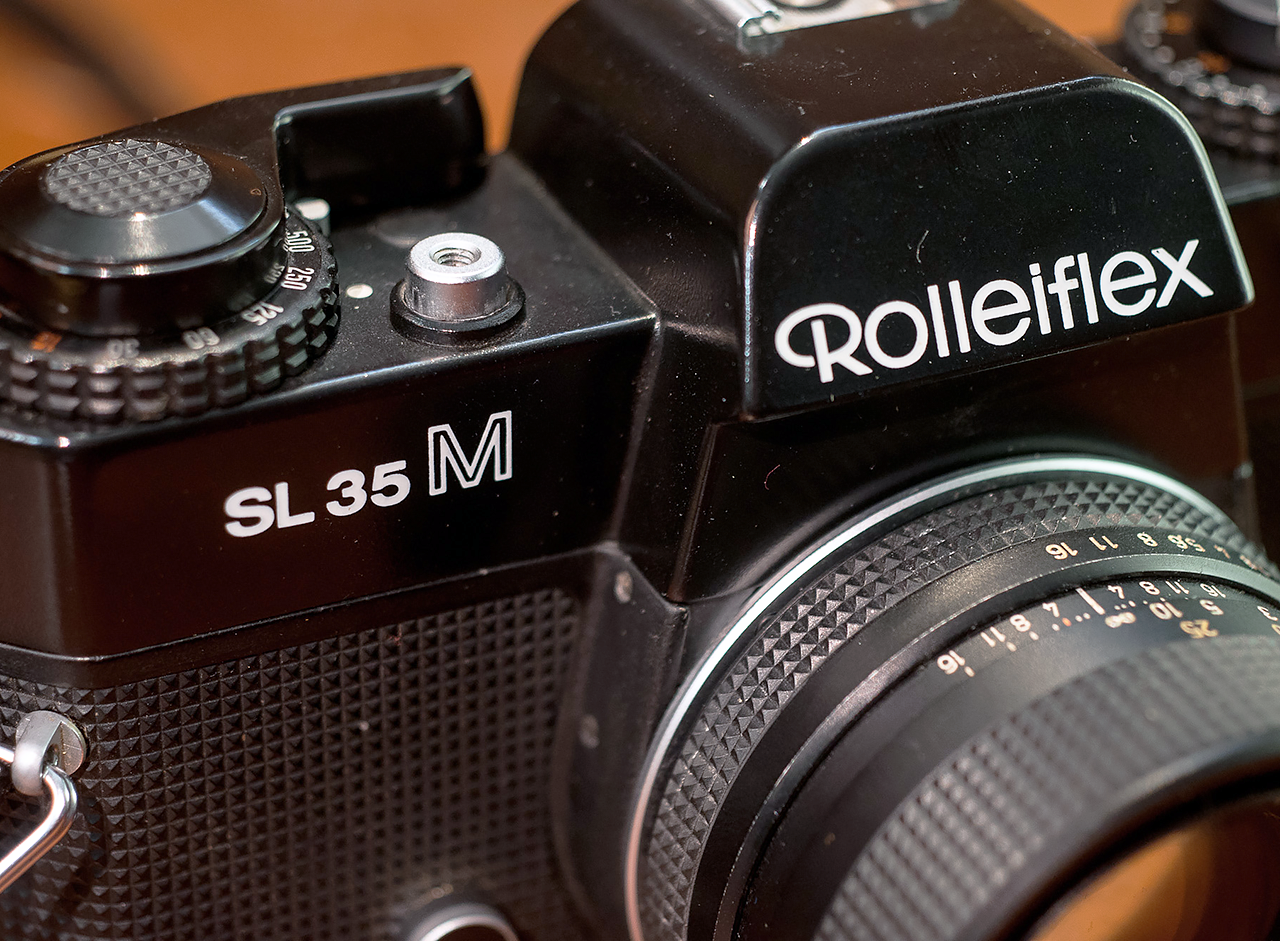
The SL35M followed in 1976 the SL35 and the SL350. Compared to the predecessor, the Rolleiflex SL35, the new series is very large and chunky. This particular camera was manufactured in Singapore, which was known for shipping problematic and poorly quality versions of the camera.
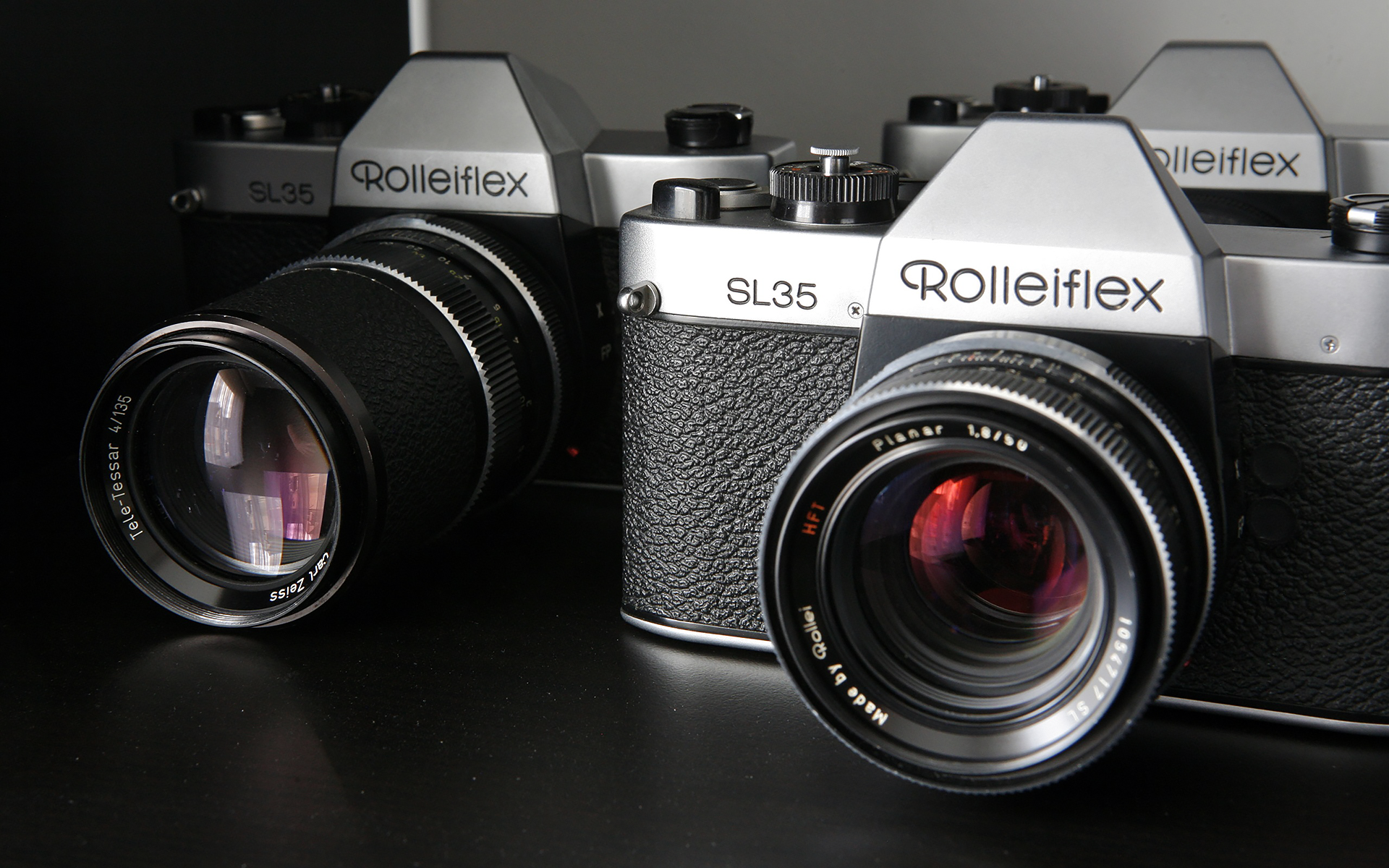
This is a Rolleiflex SL35 single lens reflex 35mm camera made between the years 1970 and 1976. The SL35 was sold in chrome or black. The first ones were built in Germany, the later ones in Singapore. The SL35 introduced an all new QBM “Quick Bayonet Mount” unique to these cameras. Although this camera had extraordinary build quality and is often found with an excellent 7-element Zeiss Planar lens, it lacked open aperture metering, a feature that most other SLRs of the day had.
After Canon introduced the AE-1, and Minolta introduced the XD-7, camera buyers lost interest in Rollei and its products. As a result, Rollei was relegated to the fringe, its sales lagging well behind Minolta, Pentax, Canon, Nikon and Contax-Yashica. In the mid-1970s, third-party lenses increased in popularity. This trend made it difficult for Rollei to maintain its declining market share because third-party lens makers were reluctant to produce Rollei-compatible lenses; low sales of Rollei cameras made it uneconomic for them to do so.
As a result, Rollei’s customer base, which formerly consisted of enthusiastic amateurs, was now dominated by casual photographers. Although they generally preferred German-made products, they were much less inclined to buy expensive camera accessories. Nevertheless, Rollei sold 333,000 units of the SL35 and 120,000 units of its successor, the SL35 E, including sales of virtually identical models from Voigtländer.
The Rollei 35RF was a compact camera with a fixed f/2.8, 38 mm lens. Despite the similarity in names, this camera should not be confused with its modern (2002) namesake, the Rollei 35 RF – a rangefinder camera with a Leica M bayonet lens mount manufactured by Cosina Voigtländer and marketed by Rollei Fototechnic.
 In 1967, Rollei started to sell flash units, but without much success as this market was already crowded with offerings from other manufacturers – not just other camera makers, but also consumer electronics companies such as Metz.
In 1967, Rollei started to sell flash units, but without much success as this market was already crowded with offerings from other manufacturers – not just other camera makers, but also consumer electronics companies such as Metz.
The Rollei Strobomatic E66 costing 548 DM was the first electronic flash on the market, but not for long. The Strobofix, a similar model without a brightness control, sold for 357 DM.
Rollei subsequently released many more variants. In 1968, Rollei introduced flash units for studio photography; there were three models, each with a different flash head. A special feature of Rollei’s studio flash units was a modelling light – a halogen lamp integrated into the flash head. This helped the photographer to adjust the lighting and select the most appropriate aperture.
The advent of Super 8 film created a booming home movie market. This development had not gone unnoticed by Peesel, who decided that Rollei, too, should offer products for this new and expanding segment of the market. As Rollei lacked the resources in Braunschweig to develop or manufacture such products itself, it decided instead to resell (under the Rollei brand) products made by Bauer, Germany) and Silma, Italy.
In the meanwhile, Rollei’s product range had expanded considerably and it had outgrown the factory in Salzdahlumer Straße. Furthermore, recruiting new employees locally in the Braunschweig area had become increasingly difficult as around half of the local workforce was now employed by Volkswagen.
Consequently, Peesel embarked on a search for a suitable location for a branch factory, preferably in an underdeveloped area within reach of Braunschweig. He selected Uelzen, a town some 80 km distant from Braunschweig; it was within 1 hours drive from Hamburg, Hannover, Braunschweig and Salzgitter, and well-situated on a branch of the Elbe Canal. What is more, as Uelzen lay within the economically depressed East/West border zone, Rollei would qualify for government subsidies.
After purchasing a 3-hectare plot of land, Rollei began construction of new buildings that would provide 6,000 m² of factory space, with plans for two future building projects.
The first stage, completed in 1970, was used to manufacture slide projectors, studio flash systems and, later on, the Rolleimat Universal enlarger.
However, the factory at Uelzen became redundant after Rollei transferred most of its production to Singapore. The site was put up for sale, but no buyer was found and the factory finally closed on 1 October 1977. The buildings stood empty until 1981.
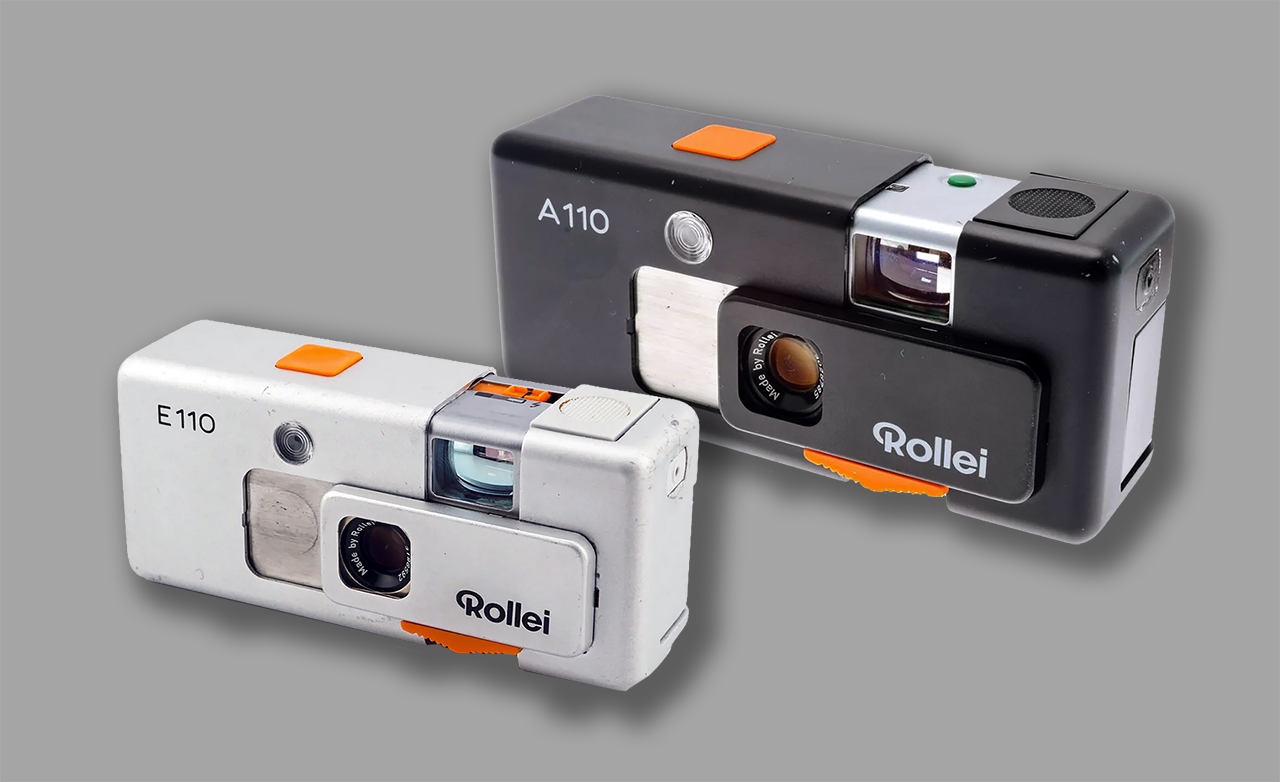
The A110 and the somewhat smaller E110 together on a picture.
Rollei made other viewfinder cameras besides the Rollei 16 and the Rollei 35, the best-known of which were the A26 and the A110/E110. The A26 was the smallest camera that used Instamatic film. It was cleverly designed, folding together to protect the lens and the viewfinder.
The A110, a successor to the Rollei 16, was a pocket-sized camera that used 110 film cartridges; it was compact, stylish and highly regarded. Later on, Rollei released a cheaper alternative in silver, the E110. Both models sold extremely well – the A26 achieved sales of almost 140,000 units, while over 240,000 pocket cameras were sold.
From 1974 onwards, Rollei introduced various 35 mm cameras of conventional design, including the Rolleimat and the Rollei 35XF. Some were sold under the Voigtländer brand with different model names, while others were made in Japan.
 Between 1977 and 1979, Rollei commissioned a little known Japanese company, Zenix, to manufacture a range of three, basic pocket cameras. These were sold under the brand name Pocketline 100, 200 and 300 by Rollei.
Between 1977 and 1979, Rollei commissioned a little known Japanese company, Zenix, to manufacture a range of three, basic pocket cameras. These were sold under the brand name Pocketline 100, 200 and 300 by Rollei.
Zenix Japan has launched relatively few of its own cameras on the market, but has produced a lot for other brands, especially in the cheap segment. Zenix was one of the better companies in this market and was able to deliver high quality.
The Pocketline cameras were delivered in a cardboard box where everything fit neatly, including the instruction booklet. Each camera had its own color accent and this was also reflected in the boxes: red for the 100, blue for the 200 and green for the 300. They came onto the market from 1977 to the end of 1979. However, sales were poor, although precise sales figures are unavailable. Immediately when these cameras were discontinued, Rollei pulled the plug on its 110 cameras, as happened with so many other brands; the 110 format had failed.
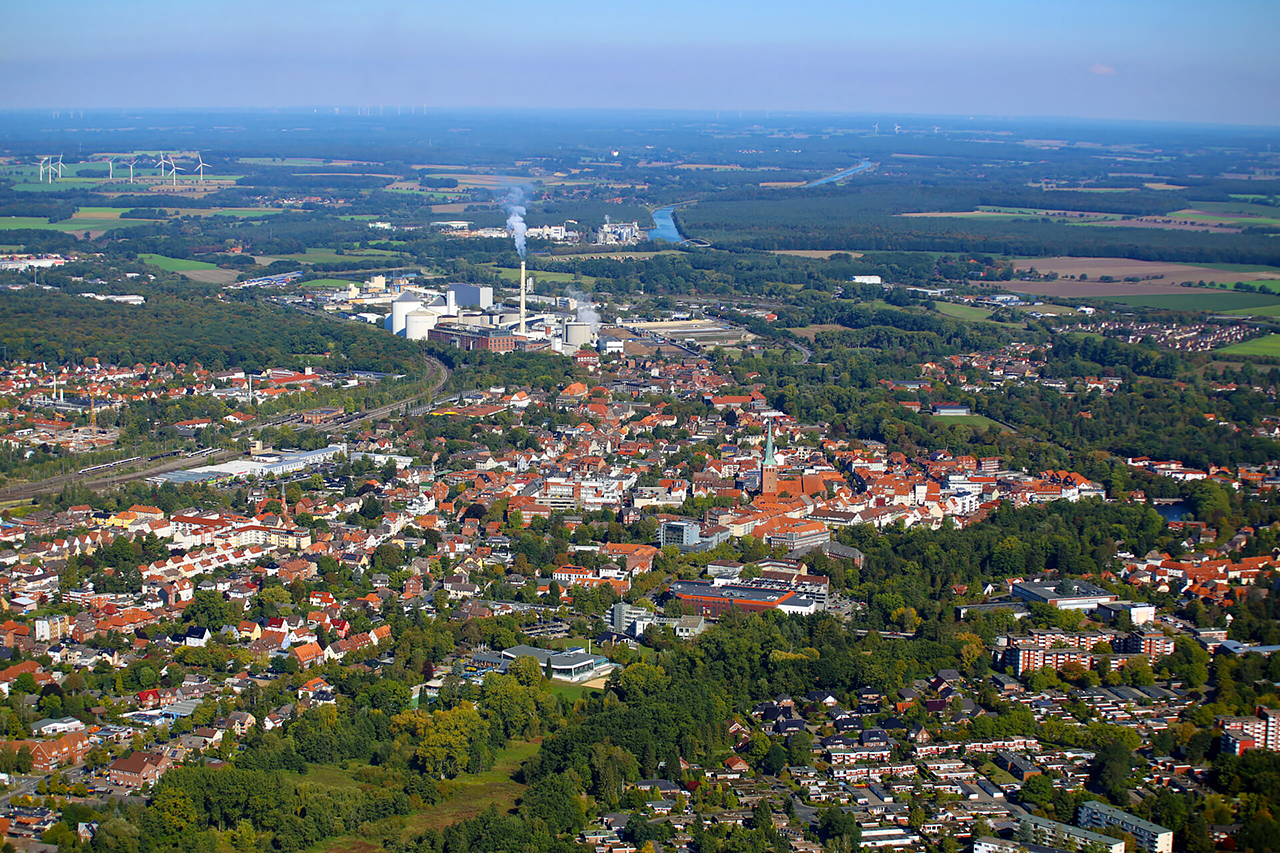
The surroundings of Uelzen seen from the air.
When Rollei Deutschland filed for bankruptcy in 1981, Rollei camera products still accounted for 97% of the production capacity in Singapore, which meant that the factory had to close.
USH (United Scientific Holdings – see New owners) established a new company called Rolloptik Ltd. in order to purchase and store the plant and machinery. This would make it possible to restart production in Asia later on should this be necessary.
In 1974, Rollei’s workforce was distributed as follows: 1,648 in Braunschweig, 314 in Uelzen, and 5,696 in Singapore. Although the Rollei 35 was selling well and all of the production of amateur cameras had been transferred to Singapore, there was insufficient work to keep the enormous workforce busy. Consequently, after a long and draw-out start-up phase, contracts to manufacture on behalf of third-parties were accepted from 1979.
Rollei’s factory in Singapore astounded everyone, especially those outside of Germany; at that time not even the Japanese had successfully managed to carry out precision manufacturing on the Asian continent. Although Rollei Singapore was fully autonomous, it did not do any product development.
Although wages in Germany were low to begin with, they increased steadily, which prompted Peesel to negotiate an exclusive agreement with the government of Singapore in 1970 to manufacture photographic equipment there. In return, he promised to create 10,000 new jobs by the year 1980.
Clearly, Rollei would not be able to finance an expansion on this scale itself, so it approached two regional German banks – the Norddeutsche Landesbank and the Hessische Landesbank – who subsequently became shareholders in the company. In those days, risky investments such as this were not that uncommon; Peesel’s imperious demeanor within Rollei had so impressed the bankers that they were confident of their investment. Only after the collapse of the Herstatt Bank did financial institutions become more prudent in their lending.
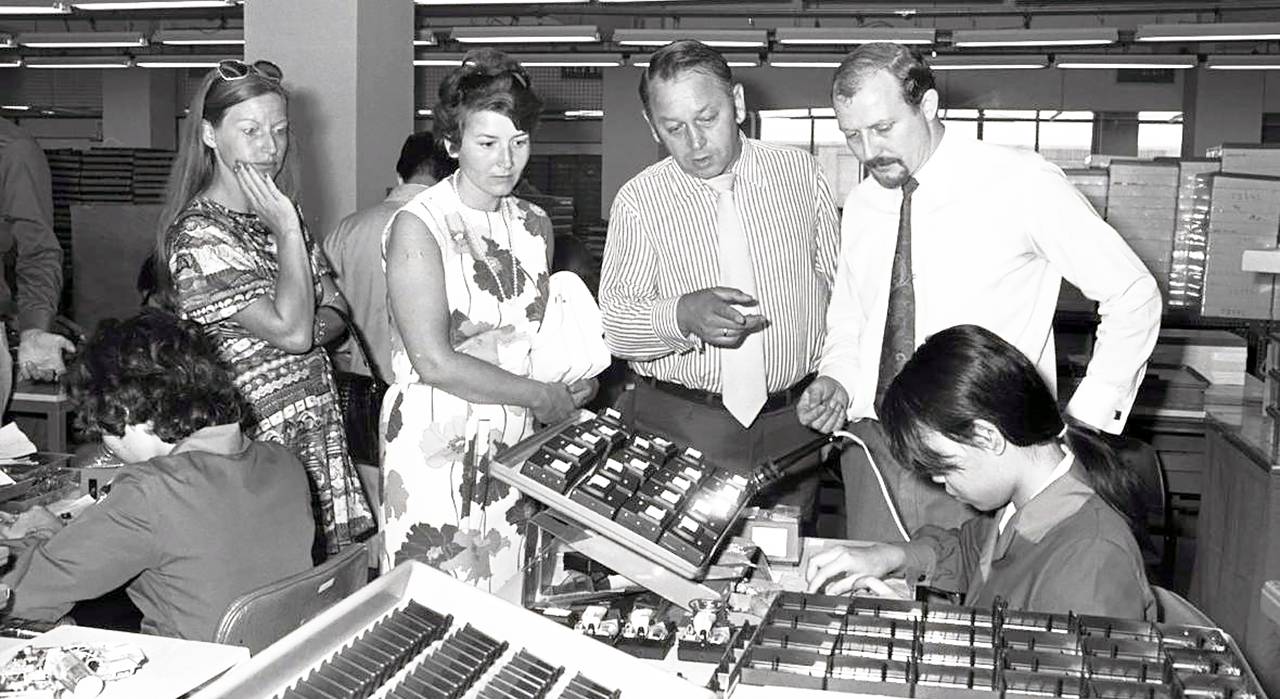
Officials and journalists visiting the factories of Rollei Singapore and Rollei Optical in Kallang Basin.
 Perzak’s behaviour became increasingly erratic; in an attempt to save the factory at Uelzen, he got Kaiser Fototechnik in Buchen to develop an enlarger, which Rollei sold as the Rolleimat Universal. Although it was extremely popular, the market for amateur photo-laboratories was much too small to make any difference to Rollei.
Perzak’s behaviour became increasingly erratic; in an attempt to save the factory at Uelzen, he got Kaiser Fototechnik in Buchen to develop an enlarger, which Rollei sold as the Rolleimat Universal. Although it was extremely popular, the market for amateur photo-laboratories was much too small to make any difference to Rollei.
Furthermore, for some obscure reason, he purchased tripods and 35 mm lenses from Japanese companies, fixed focal length lenses from Mamiya, and zoom lenses from Tokina – even though Rollei had enough spare production capacity in Singapore to make them all itself.
With the new Rolleinar 35 mm lenses, Rollei was finally able to match the range of focal lengths offered by its competitors. On top of that, Peperzak cancelled Rollei’s appearance at Photokina 1978. In the end, he left Rollei on 28 February.
The Norddeutsche Landesbank (Nord/LB) then appointed Heinz Wehling to manage the company on 1 March 1978. So, Rollei was able to exhibit at Photokina after all, but not in its customary location – that had already been allocated.
He negotiated a contract with IEC, the Industria De Equipamentos Cinematograficos S. A. in São Leopoldo, Brazil to manufacture Rollei slide projectors and enlargers under license. Unfortunately, Wehling was no more successful than his predecessor; in particular, he remained committed to 35 mm SLR cameras, even developing a new camera for the range, and steadfastly refused to close the factory in Singapore. Rollei was now perilously close to bankruptcy, so the search began for a new owner.
In the meanwhile, Rollei’s product range had expanded considerably and it had outgrown the factory in Salzdahlumer Straße. Furthermore, recruiting new employees locally in the Braunschweig area had become increasingly difficult as around half of the local workforce was now employed by Volkswagen.
 The takeover by Hannsheinz Porst was met with universal astonishment as his own company Photo Porst was already in trouble. Also, many wondered who, actually, was behind the holding company. Rumour had it that Agfa had taken a share in order to avoid restrictions from the German Federal Cartel Office. The management of Rollei was shared between Otto Stemmer, a former employee of Agfa who became the technical director, and Hannsheinz Porst, who became chairman of the board.
The takeover by Hannsheinz Porst was met with universal astonishment as his own company Photo Porst was already in trouble. Also, many wondered who, actually, was behind the holding company. Rumour had it that Agfa had taken a share in order to avoid restrictions from the German Federal Cartel Office. The management of Rollei was shared between Otto Stemmer, a former employee of Agfa who became the technical director, and Hannsheinz Porst, who became chairman of the board.
Yet nobody took much interest as all confidence in Porst, Rollei and Nord/LB had already been lost. Hannsheinz Porst was especially disappointed when he failed to gain the support of the photographic trade. As a result, Rollei’s turnover declined by 20% from March 1981. In addition, the Yen and the Singapore Dollar had appreciated strongly in value, which significantly increased the cost of the products that Peperzak had earlier contracted to import from Asia.
Mired in debt and close to bankruptcy, Porst finally filed an application on 3 July 1981 in the District Court of Braunschweig to put Rollei into voluntary administration. The court-appointed administrator announced that Rollei’s professional products and services division would be retained, that production would continue until the end of September, and that some employees would be laid off in October. The estimated value of Rollei’s unsold inventory was put at about 100 million DM.
An advertising campaign was mounted to sell the remaining stock, and advertisements were placed in photographic magazines highlighting the fact that this would be the last opportunity to buy accessories for older Rollei cameras. The rights to the Voigtländer brand name were sold to the Plusfoto Group for 100,000 DM. Some 700 employees were still working for Rollei in 1981.
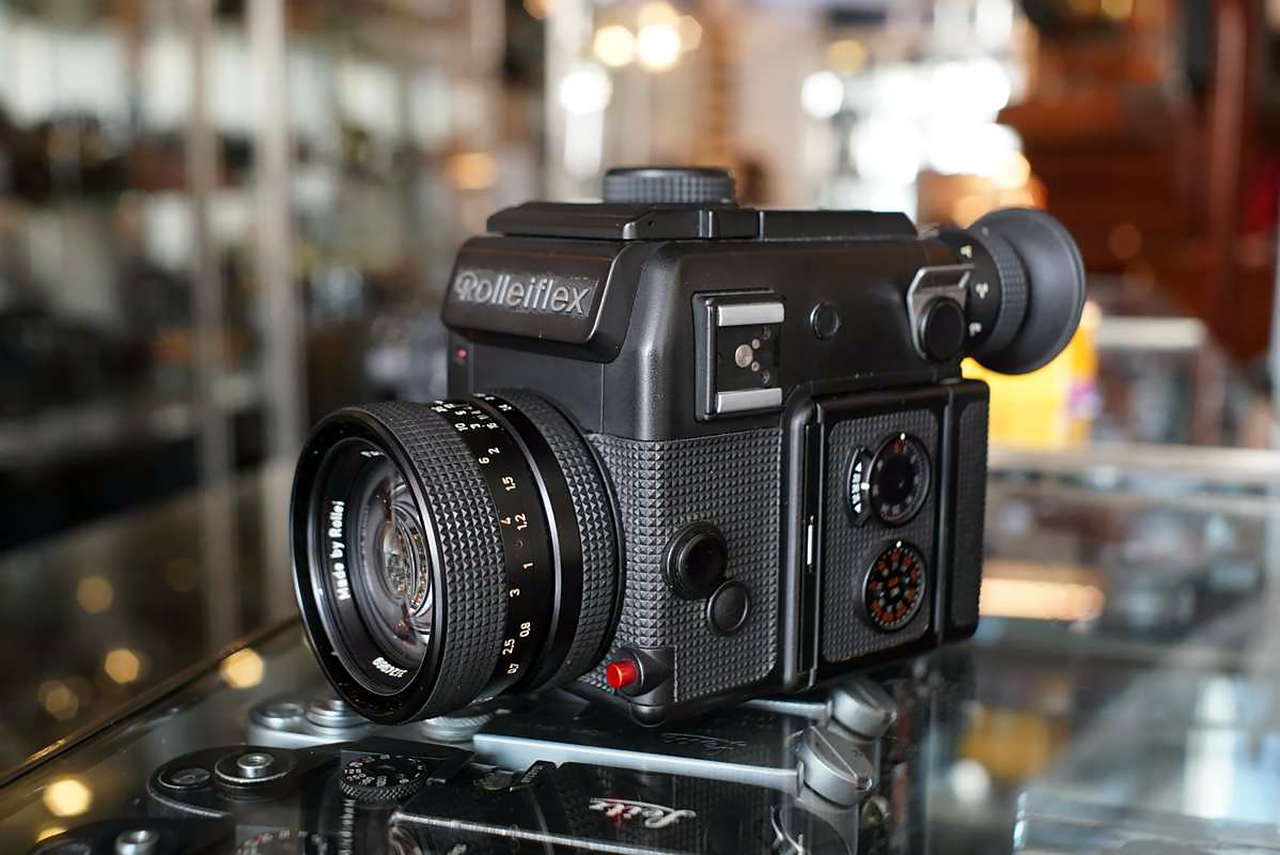
The SL2000F is a 35 mm SLR camera, introduced by Rollei in February 1981 in Europe, and later in the rest of the world. It was first introduced as the Rollei SL 2000 at the 1976 Photokina.
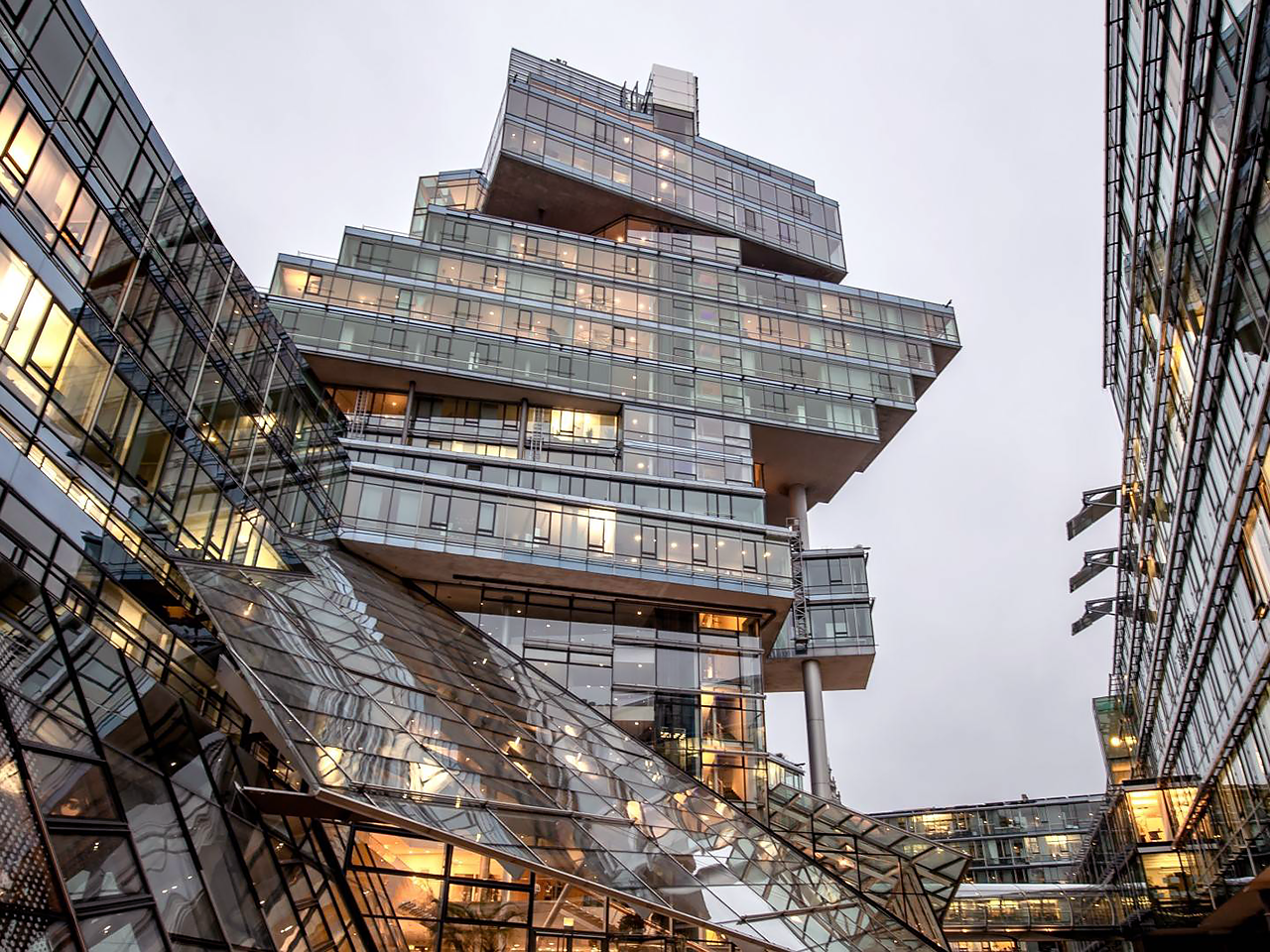
A special shot of the striking Norddeutsche Landesbank building.
On 1 January 1982, Rollei split into three separate companies: Rollei Deutschland GmbH assumed responsibility for disposing of the remaining stock and servicing its former products, while Rollei Gebäude GmbH together with Nord/LB, its largest creditor, took over its properties and the management of its former production facilities.
A new company called Rollei Fototechnic GmbH employing 380 workers manufactured, sold and (until 1 July 1983) serviced a “rationalised” range of cameras, lenses and slide projectors. This company, which had nothing more to do with the former Rollei company up until the takeover of its “leading designs”, was 100% owned by USH (United Scientific Holdings). The London-based USH was founded after the war to manufacture optoelectronic instruments. Rollei initially made contact with USH through its Singapore subsidiary, Avimo Ltd.
The intention was to collaborate in the development of products for the German military. As a result, Rollei began to make 7×42 binoculars, otherwise USH exerted no influence over Rollei’s camera product line. Rollei simply made the products and received test and measurement instruments from USH in return – equipment that it would otherwise have built itself.
Consequently, collaboration with USH proved to be extremely beneficial to Rollei. Rollei Fototechnic GmbH concentrated on system cameras, which were still made in Braunschweig, and slide projectors, which were made in Singapore until 1983. After that, production of slide projectors was transferred back to Germany so that they, too, could be marketed under the catch phrase “Made in Germany”. The P801 slide projector was initially made by Silma in Italy, but its successor, as expected, was also made in Braunschweig. These products were manufactured in leased premises within Rollei’s former factory. Only a quarter of the available space was required; the remainder was utilised by companies unconnected with the photography industry.
After USH’s strategy to manufacture for the military market failed, Rollei was sold to Heinrich Mandermann on 10 June 1987 for the symbolic price of 1 DM together with 14 million DM in debts. Mandermann was a German photographic industrialist, who had owned Schneider Kreuznach since 1982.
Early in 1995, Rollei was purchased by Samsung Techwin, a part of the South Korean conglomerate Samsung Group. After the Asian financial crisis of 1997, Paul Dume and six former Rollei managers purchased Rollei in 1999 in a management buyout. In November 2002, Rollei was taken over by Capitellum A/S, a Danish investment company based in Copenhagen.
In the summer of 1981, Rollei introduced the Rolleiflex SL2000F, a sophisticated SLR camera. At that time, it was the only 35 mm camera that offered interchangeable film backs and dual viewfinders. Development of this camera began in 1975 and a prototype was exhibited at Photokina 1978. One year later, however, the project was suspended due to lack of funding, although it was eventually resumed and completed.
The features that were borrowed from Rollei’s medium format cameras certainly attracted interest, but the high price and limited range of accessories put off many potential buyers, even though a full range of lenses with focal lengths from 14 mm to 1000 mm was available. An improved version, the Rolleiflex 3003, was introduced at Photokina 1984. Rollei eventually withdrew from the SLR market in 1994. By this time, all 35 mm SLRs included autofocus as a standard feature and Rollei was simply no longer able to keep up. The high price of the SL 2000F/3003 range meant that it only ever appealed to serious amateurs, with the result that only 15,000 units were sold.
In 1986, Rollei started making metric surveying systems. This project was instigated by Wilfried Wester-Ebbinghaus, a research associate at Rollei who wanted a camera adapted for the purpose of photogrammetry. Accordingly, especially calibrated cameras were developed along with computer programmes to analyse the resultant images: the 35 metric, the 3003 metric and the 6006 metric cameras incorporated a glass plate in front of the back plane inscribed with grid lines which – as famously shown on the photographs taken during the Apollo moon missions – were visible on the photographic image. Rollei’s system was substantially cheaper than other high-end systems of the time. There was close collaboration with the Braunschweig University of Technology on this project.
Interest in twin-lens Rollei cameras declined in the 1970s so much that the Rolleicord was discontinued in 1976, while the Rolleiflex was only available on special order from 1977. Although there was some revival in interest shortly thereafter, production ceased altogether after Rollei went into voluntary administration. Nonetheless, 1,250 gold-plated Rolleiflexes were assembled in 1982 from the remaining componentry and sold as the 2.8F Gold for 4,000 DM. In 1987, a much-admired successor, the Rolleiflex 2.8 GX, was released which naturally featured the latest in TTL and flash metering. The 2.8 GX sold for 2,800 DM, which was not exactly cheap, but a reasonable price considering the low production volumes.
Rollei then introduced the 2.8 FX in 2001, a modernised version featuring the Rolleiflex logo of the 1930s. In fact, a wide-angled version of this camera is available once more. So, the number of Rollei cameras produced increased yet further – albeit slowly – reaching a total of 3.2 million units. Similarly, a classic version of the Rollei 35 was available for a period of time: the Rollei 35 classic was presented at Photokina 1990 and sold for 2,200 DM with a flash unit.
Following a trend towards rangefinder cameras, Rollei introduced the Rollei 35 RF in 2002. Yet the 35 RF was neither developed by Rollei, nor was it based on any of the earlier variants of the Rollei 35. Instead, it was derived from the Cosina Bessa Rx, a rangefinder camera that was sold as the Voigtländer Bessa R2. Like the Voigtländer Bessa Rx and Zeiss Ikon cameras from Cosina, it utilised a bayonet lens mount derived from the Leica M3. Rollei offered three lenses of its own design made by Zeiss. The Rollei 35 RF is no longer in production, and it appears that not many were sold.
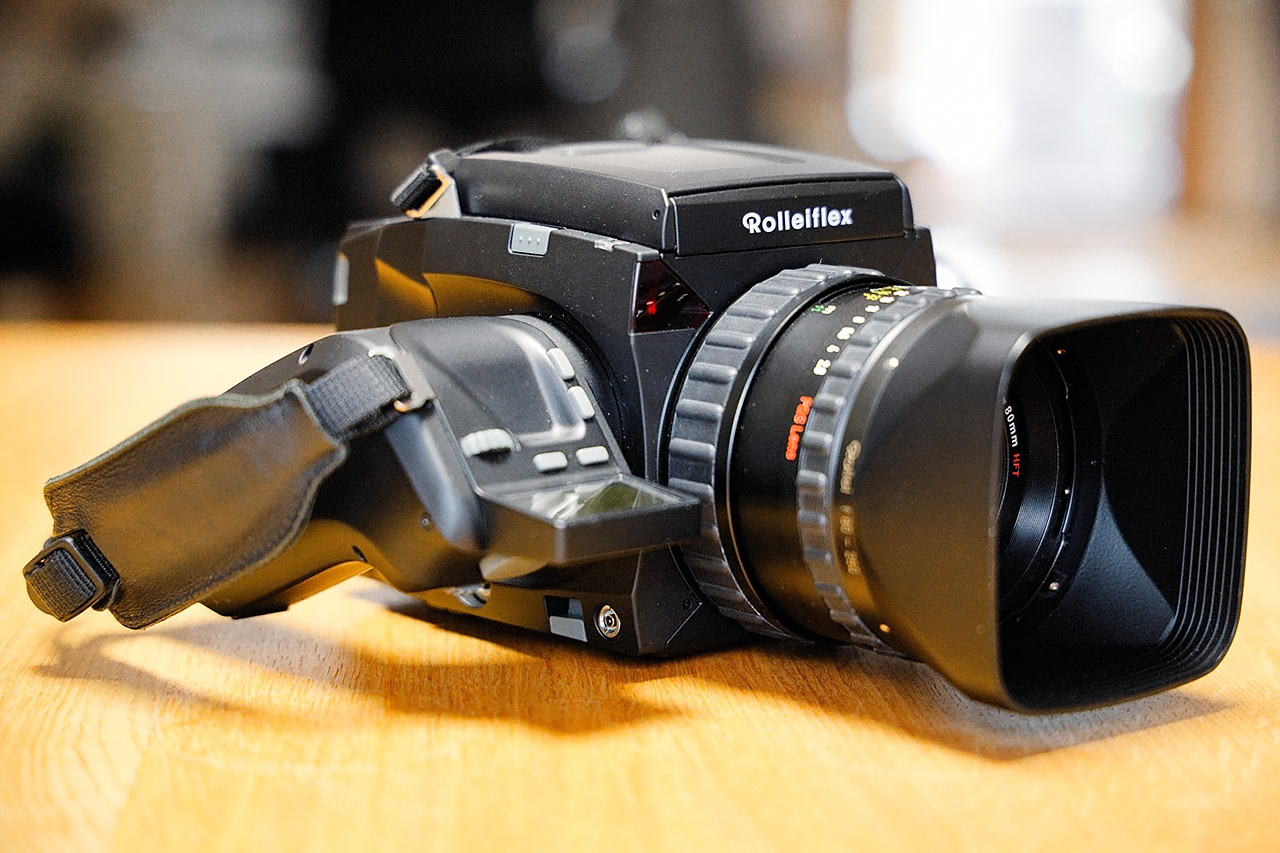
The Rolleiflex Hy6 is a next-generation medium format camera body, based on the long experience Franke & Heidecke acquired with the successful Rolleiflex 6000 series. The Hy6 embodies the technological know-how, precision engineering and manufacturing of three world-renowned companies. Hy6 prototypes were presented at Photokina 2006 and received the Photokina Star 2006 award for most outstanding new product. Designed to capture images using both digital and conventional film backs, the Hy6 offers photographers a true 6×6 cm medium-format size with the flexibility of a 4.5×6 cm camera.
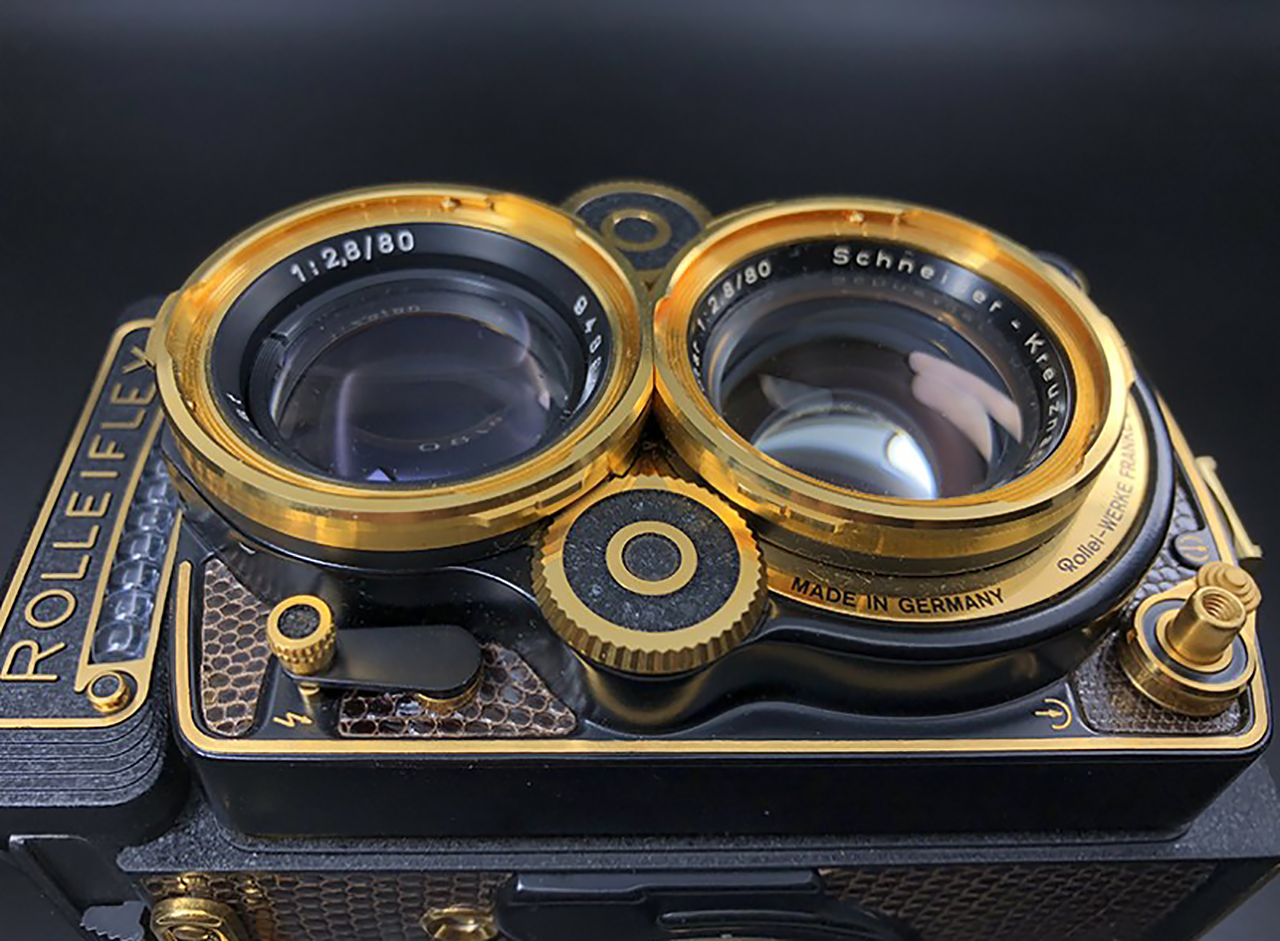
The Rolleiflex 2.8F Aurum of 1983 descended from a long, distinguished line of twin-lens reflex cameras. The Aurum (Latin for “gold”) was finished in black with alligator leather and gold-plated metal parts. Other than the finish and trim, it was a standard 2.8F model, long regarded by professionals and serious amateurs alike as one of the finest cameras produced anywhere.
 Despite an earlier resolution to avoid the mass market, Rollei began to sell a range of viewfinder cameras for the amateur market.
Despite an earlier resolution to avoid the mass market, Rollei began to sell a range of viewfinder cameras for the amateur market.
The cameras were made in Asia by Skanhex, Premier, Kyocera and Ricoh, among others, and sold under the brand name Rollei Prego. The product line initially consisted solely of 35 mm cameras; digital cameras were added later on – Rollei even began to develop these itself.
Single-lens medium format cameras represented Rollei’s most important market segment. Consequently, development of the SLX continued, resulting in the 6006 which was introduced in 1984. Significant improvements included a film magazine and TTL flash metering – superior technology that made it the leading medium format camera.
The 6002 followed in 1986, an entry-level model without a film magazine along with three inexpensive lenses. For the first time Rollei offered low-cost lenses from Asia, although all of the other lenses were still made by Schneider and Zeiss.
In 1988, Rollei introduced the 6008. In addition to improved electronics, this was the first medium format camera to include automatic exposure bracketing; demand for this feature was so great that it led to a five-month lead time. The 6008 SRC 1000 was introduced in 1992, which made exposures of 1/1000 second possible for the first time. The 6008 Integral followed in 1995, then came the 6008 AF with auto-focus, and finally the 6008i2 – a stripped-down version of the AF. The introduction of the scan-back (an attachment that digitally scanned the image, line by line) launched Rollei into the professional digital imaging market as early as 1991, and with great success.
The latest camera from the company (named Franke & Heidecke since 2006) is the Hy6, which was produced in collaboration with Sinar and Leaf. This camera is a completely new, hybrid design with both analogue and digital capability.
Three different versions are available from Franke & Heidecke, Sinar and Leaf respectively. Older lenses from the 6000 series can still be used, although the viewfinder and magazine mounts are new. The motor drive within the film back eliminates the need for a mechanical link between the camera and the film magazine.
In 2004, Rollei Fototechnic GmbH hived off its manufacturing to Rollei Produktion GmbH. In September 2005, Rollei Produktion GmbH changed its name to Franke & Heidecke GmbH; among its shareholders were Kai Franke and Rainer Heidecke, both nephews of the original founders. Once again, Franke & Heidecke was manufacturing medium format cameras, projectors, photo-technical accessories and lenses on the old company site in Salzdahlumer Straße in Braunschweig.
On 27 February 2009, Franke & Heidecke filed for bankruptcy, resulting in all 131 employees being made redundant on 30 June 2009. Some of the bankruptcy assets were purchased by DHW Fototechnik GmbH with a view to partially resuming production.
In the meantime, Rollei Fototechnic GmbH changed its name to Rollei GmbH and was selling Asian-made digital cameras and consumer electronics such as MP3 players and digital video recorders. In 2006, Rollei GmbH closed its consumer products division.
In 2007/2008, what remained of Rollei GmbH (the photogrammetry and custom products divisions) merged with the Danish company Phase One to form RolleiMetrics. This company continued manufacturing from its original site in Braunschweig, but was incorporated into Trimble Holdings GmbH (Raunheim) as their Metric Imaging Department in 2009.
Rollei GmbH continued to manage Rollei’s rights and licences from its headquarters in Berlin until early 2010. One of the licensees of the Rollei brand is Hans O. Mahn & Co. KG (Maco Photo Products), who manufactures photographic film under the Rollei label.
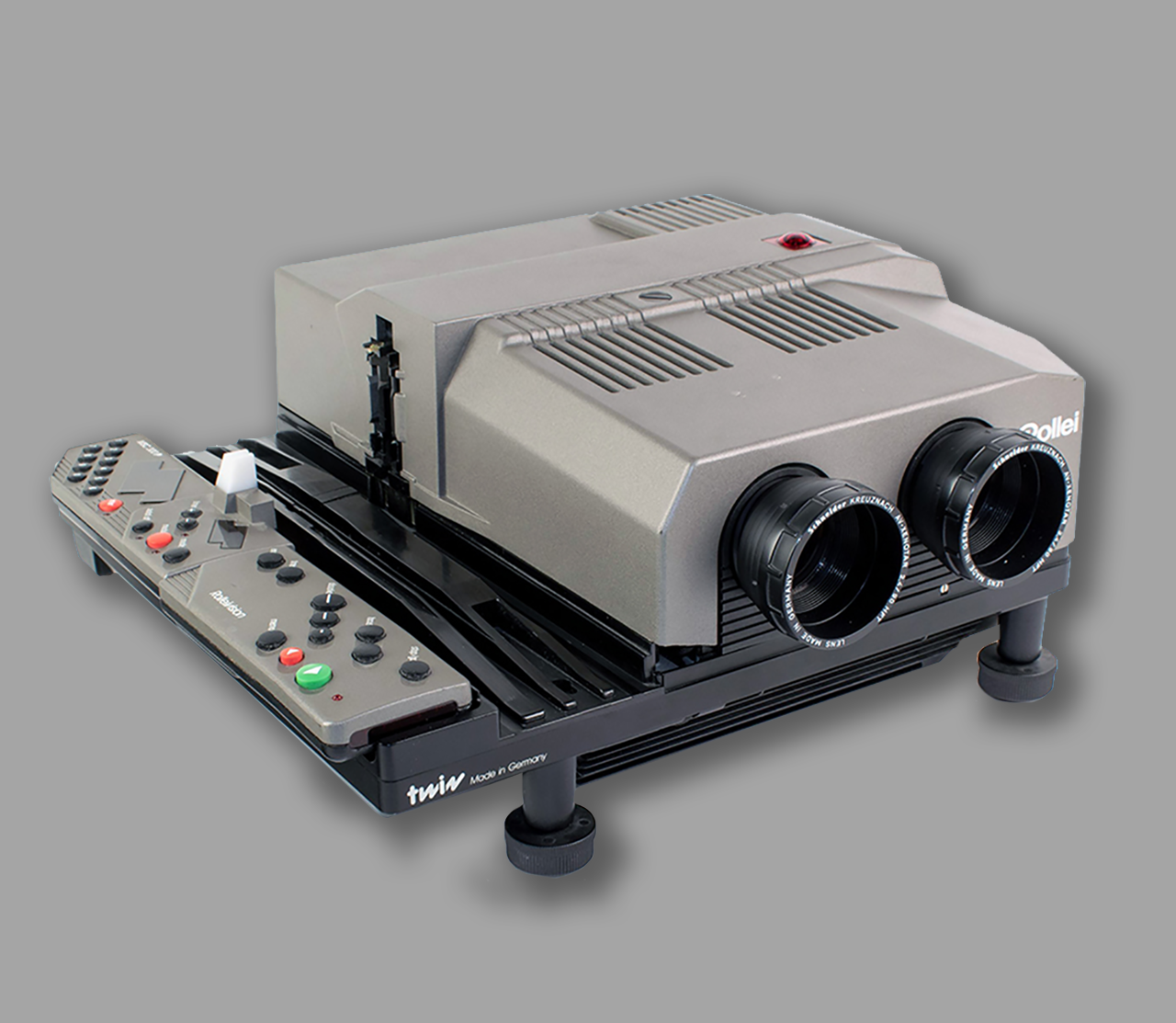
Basically the Rollei, Rolleivision Twin MSC 300P is two projectors in one, along with a dissolve unit and a dissolve rack in one unit. All that in a compact package here with a wireless remote. The beauty of this design is in the symmetric adjustment of the lenses.
It is one of the most sophisticated projectors ever built, but at the same time it has reduced complexity from the earlier models.
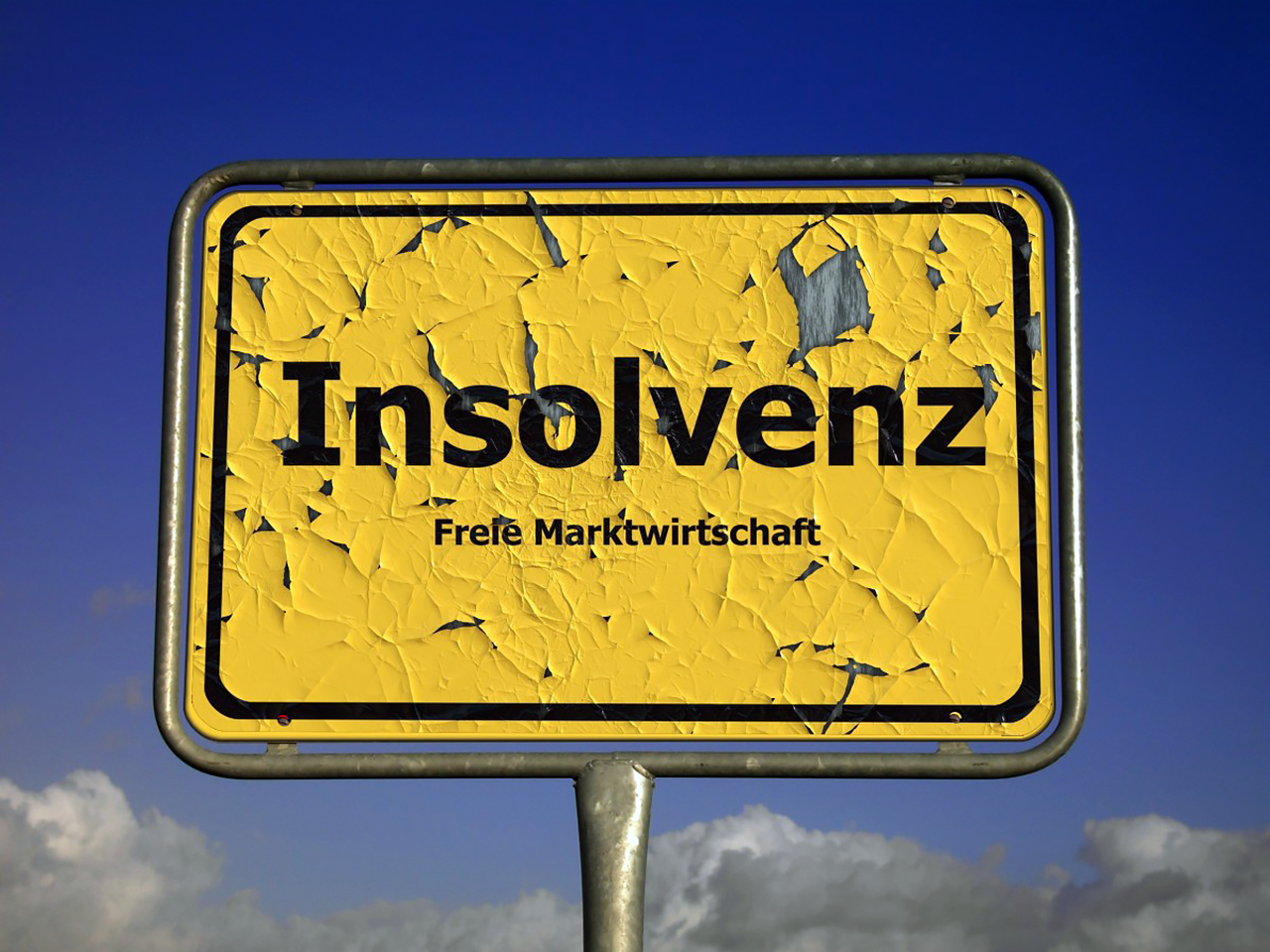
The inevitable end. Admittedly in a number of stages, but still unavoidable.
Hamburg-based RCP-Technik GmbH & Co. KG, which has been selling Rollei-branded consumer products since 2007 under the terms of a Europe-wide licensing agreement, purchased the Rollei brand on 1 January 2010, thereby extending its rights to the brand worldwide.
Rollei’s product portfolio within RCP-Technik included compact digital cameras (Compactline, Flexline, Powerflex, Sportsline), camcorders (Movieline), digital picture frames, slide and photo scanners, as well as tripods (FotoPro).
Rollei’s latest products are currently available in Switzerland, Austria, Italy, France, Portugal, Great Britain, Greece, Sweden, Denmark and the Netherlands. RCP-Technik GmbH established its first subsidiary in Budapest, Hungary on 1 March 2010. Soon thereafter, it opened its second subsidiary in Istanbul, Turkey on 1 April 2010. On 1 January 2015, RCP-Technik GmbH reformed as Rollei GmbH & Co. KG.
DHW Fototechnik (founded in 2009 by Rolf Daus, Katherina and Hans Hartje and Frank Will) in Braunschweig was an exhibitor at Photokina 2010 where it showed the Rolleiflex Hy6, a hybrid digital back-compatible and 4.5×6 / 6×6 film medium format camera, with integrated TTL-metering and an HFT PQS AF-Xenotar f/2.8, 80 mm standard lens, the twin-lens TLR and the Rollei 35.
At Photokina 2012, DHW exhibited the revised Rolleiflex Hy6 mod2, a revised Rolleiflex FX-N TLR, and the DHW Electronic Shutter No. 0 HS1000, which was based on the former Rollei Electronic Shutter. The Rolleiflex 6008 AF and Rolleiflex 6008 integral 2, the X-Act2 camera, the Rollei 35, and the Rolleivision projectors were continued to be sold as well. In 2014, DHW filed for insolvency and was dissolved in April 2015.
FOUNDERS: Rollei-Werke Franke & Heidecke GmbH and the Economic Development Board of the Singapore Government.
COMPANY NAMES:
1971: Rollei Singapore; 1981: the factory had to close as a result of intense competition from Japanese camera makers, as well as poor coordination between Germany and its production base in Singapore.
COMPANY ADDRESS:
1971: Alexandra Road; 1973: a staff training centre in Kampong Chai Chee.
The Republic Singapore once manufactured German cameras that were highly sought after by photography enthusiasts. Rollei cameras were believed to be one of the best in the world and many Singaporeans particularly clamoured for one compact model – the Rollei 35. The company’s compact camera range used to cost around $200 to $300. Today, these compact cameras are still in demand, with multiple forum threads dedicated to how best to acquire and use the “classic” camera.

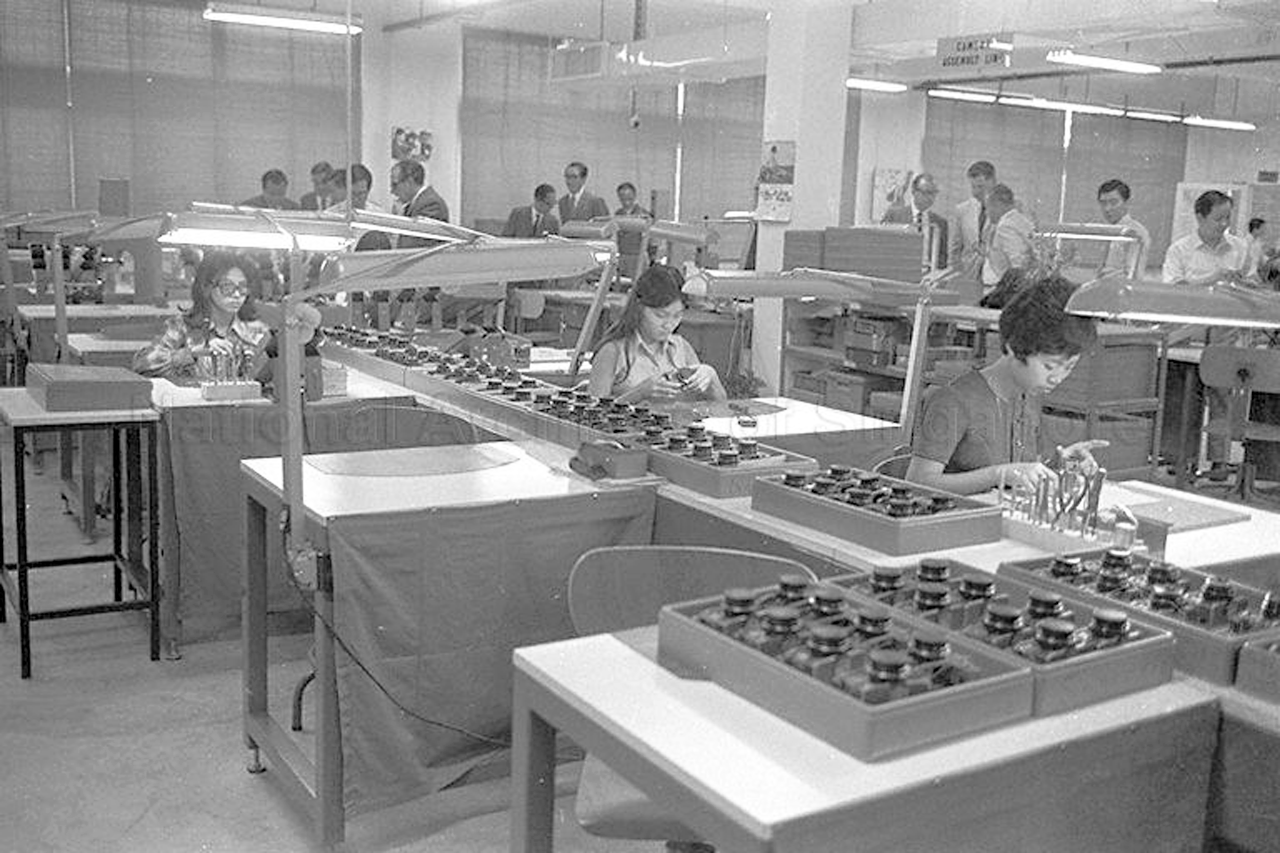
Workforce at Rollei Singapore.
 In 1971, the Economic Development Board of Singapore persuaded the Rollei Germany to set up a production factory in Singapore for cameras, flash guns, projectors, lenses and shutters, and to produce cameras for other German camera brands. The first factory was located in the Alexandra Road.
In 1971, the Economic Development Board of Singapore persuaded the Rollei Germany to set up a production factory in Singapore for cameras, flash guns, projectors, lenses and shutters, and to produce cameras for other German camera brands. The first factory was located in the Alexandra Road.
Two years later, the company and the Singapore Government established a training centre in Kampong Chai Chee for workers in precision mechanics, precision optics, tool making and electro-mechanics.
Rollei invested $149 million here over a decade as part of its attempt to stay competitive against Japanese camera manufacturers. The cameras produced here were engraved with the words Made by Rollei Singapore. From the Singapore Government’s perspective, it was a move away from low-wage industries to higher-technology and value-added ones in the 1970s.
As already mentioned, Rollei transferred the production of the Rollei 35 camera from Germany to Singapore in June 1971. Until August 1974, the cameras were still equipped with a Carl Zeiss German made Tessar 3,4/40mm lens, a construction with 4 elements.
Next to the Tessar model, Rollei produced a Rollei 35 in Singapore with a Schneider S-Xenar lens from July 1972 till April 1973. This was due to a supply shortage of the Zeiss made Tessar lenses. Of these, chrome and black versions were made, in a total of 30,000 pieces.
Also, about 200 Rollei 35 with this S-Xenar lens were made in black with brown Alligator printed leather. These S-Xenar cameras were not offered in Germany, but in Eastern Europe, Italy and the US.
In September 1974, when the Rollei 35S (with the 5-element Sonnar lens) was presented as a new model, the original Rollei 35 was renamed Rollei 35T and the lens was substituted by a Rollei Made Tessar lens.
Rollei 35 cameras made in Singapore came with hand strap and a leatherette soft case. Only the German made Rollei 35 cameras came with real leather cases. They were packaged in a beige box, later in a silver box and came with a multi language manual.
In total, 185.000 Rollei 35 cameras (silver and black) were made in Singapore from June 1971 until August 1974. The serial numbers of the Rollei 35 cameras made in Singapore were in the range of 3.312.000 – 3.499.999.
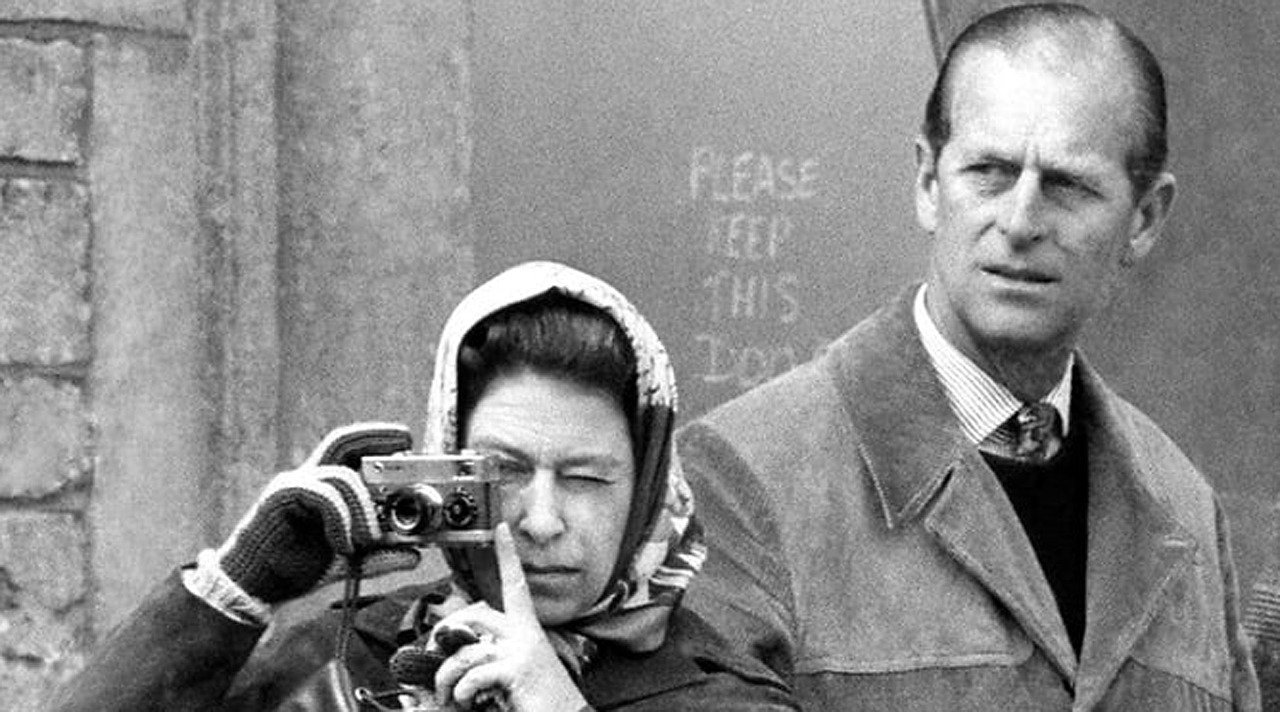
The British queen and her Rollei 35
It was known for being dependable, durable and small – the Rollei 35 camera was popular among many photographers back in the day. Even Britain’s Queen Elizabeth II was spotted using it at the first day of the 1974 Badminton Horse Trials.
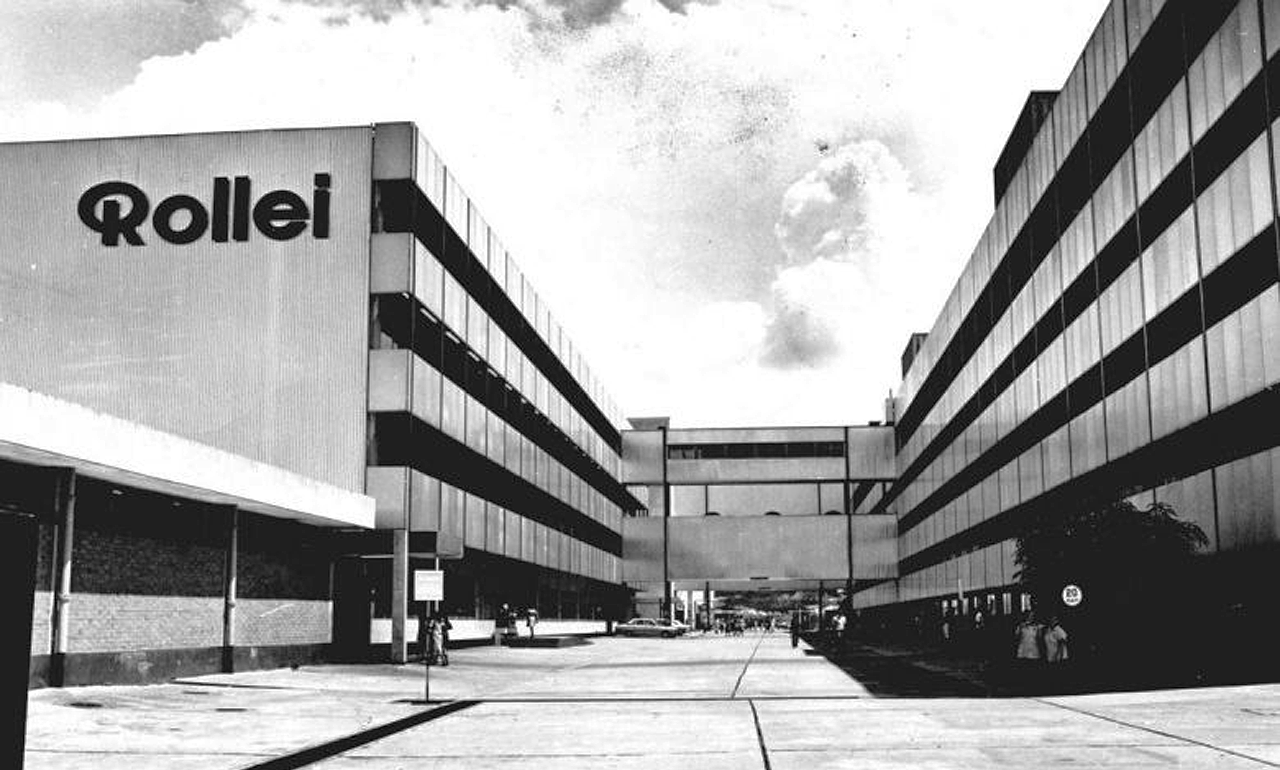
The Rollei Singapore main factory at Kampong Chai Chee.
Rollei’s factory in Singapore astounded everyone, especially those outside of Germany; at that time not even the Japanese had successfully managed to carry out precision manufacturing on the Asian continent. Although Rollei Singapore was fully autonomous, it did not do any product development. Rollei manufactured cameras, flash guns, projectors, lenses and shutters in Singapore, and also produced cameras for other German brands.
In 1974, Rollei’s workforce was distributed as follows: 1,648 in Braunschweig, 314 in Uelzen, and 5,696 in Singapore.
Although the Rollei 35 was selling well and all of the production of amateur cameras had been transferred to Singapore, there was insufficient work to keep the enormous workforce busy. Consequently, after a long and draw-out start-up phase, contracts to manufacture on behalf of third parties were accepted from 1979.
In 1981, Rollei’s parent company went bankrupt. Rollei camera products still accounted for 97% of the production capacity in Singapore, which meant that the factory had to close and 4,000 Singaporesean workers were retrenched.
Among other reasons, its closure was a result of intense competition from Japanese camera makers, as well as poor coordination between its research and development base in Germany and its production base in Singapore.
The thousands of workers who had undergone precision engineering training became “a valuable base in the industrial development for the disk drive industry in Singapore. It provided thousands of jobs, and gave our workers skills, which were later very useful in helping us to do precision engineering in the 1980s when the disk drive industry set up shops there.
Overview of most of the cameras and projectors that were produced by Franke and heidecker, Rollei Germany and Rollei Singapore

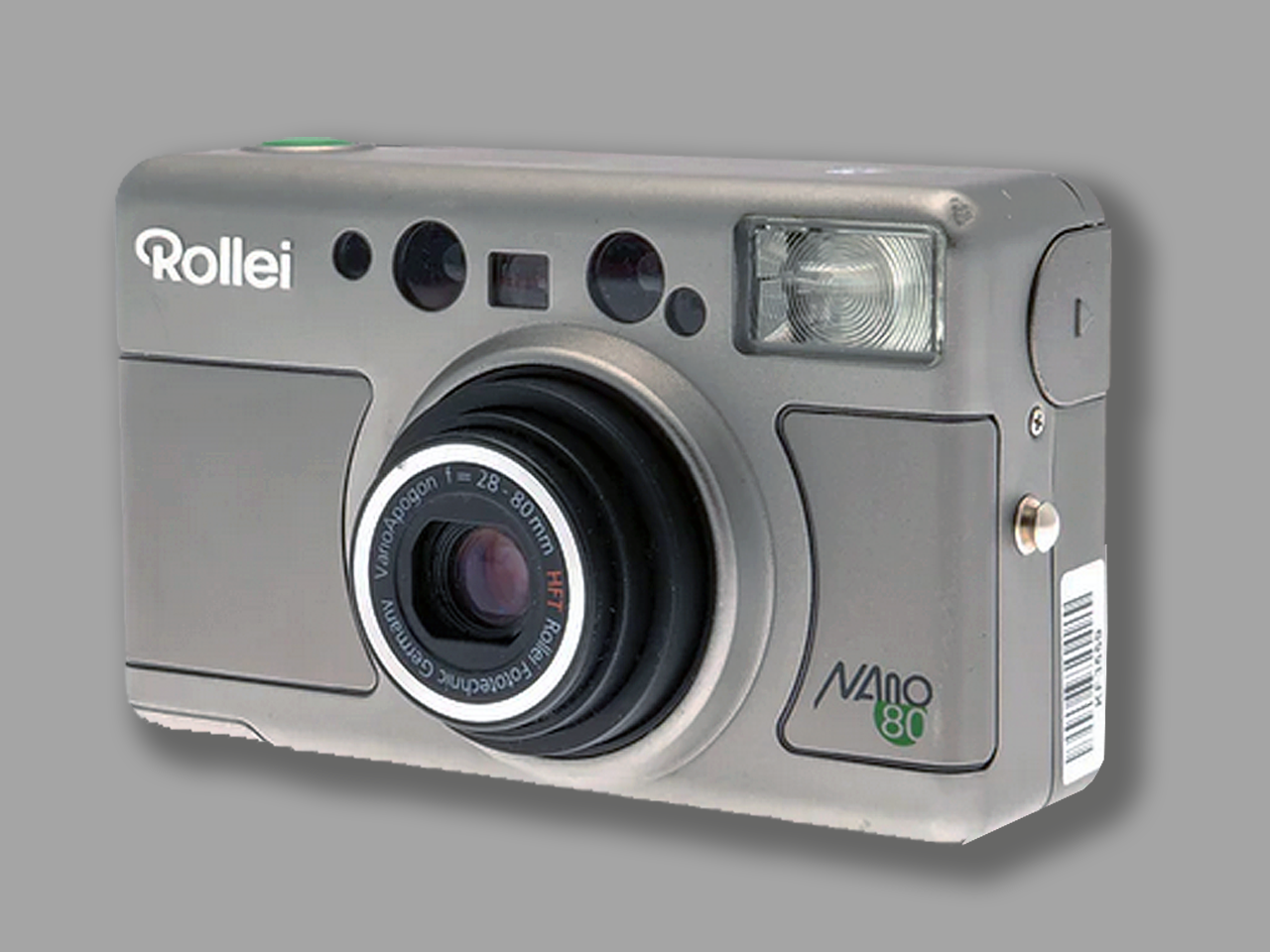
Rollei Nano 80 Camera
APS-film autofocus compact camera released in 1998. Has both date and title printing capabilities as well as three different picture formats (2:3, 9:16, and 1:3). Has a 10s self-timer and a built-in flash. The camera does not fire the shutter if no film has been loaded and only accepts fully unexposed APS cartridges. Plastic body available in grey.
stereo Cameras
- Heidoscop 45×107 mm (1921-34)[1]
- Heidoscop 6×13 cm (1925-40)
- Rolleidoscop 6×13 cm (1926-40)
- Rolleidoscop 45×107 mm (1927-32)
Small Format TLR
- Baby Rolleiflex 4×4
- Sports Rolleiflex
- Rolleiflex (too much to mention)
- Rolleicord ((too much to mention)
- Rollei Magic (too much to mention)
Medium Format SLR
Rolleiflex SL66 Series
- Rolleiflex SL66 (1966-86)
- Rolleiflex SL66E (1982-86)
- Rolleiflex SL66X (1982-92)
- Rolleiflex SL66SE (1986-93)
Rolleiflex
SLX Series
- Rolleiflex SLX (1976-79)
- Rolleiflex SLX Model 2 (“New face”) (1978-85)
Rolleiflex
6000 Series
- Rolleiflex 6006 Model 1 (1984-89)
- Rolleiflex 6006 Model 2 (1989-93)
- Rolleiflex 6002 (1986-90)
- Rolleiflex 6008 Professional (1988-92)
- Rolleiflex 6008 Professional SCR 1000 (1993-95)
- Rolleiflex 6008 integral (1995-2015)
- Rolleiflex 6008AF (2002-2015)
- Rolleiflex 6003 SCR 1000 (1994-96)
- Rolleiflex 6003 Professional (1996-2015?)
- Rolleiflex 6001 Professional (1998-2015)
Rolleiflex
SL2000/3000
- Rolleiflex SL2000F (1981-1984)
- Rolleiflex SL3003 (1984-1994)
- Rolleiflex SL3001 (1986-1991)
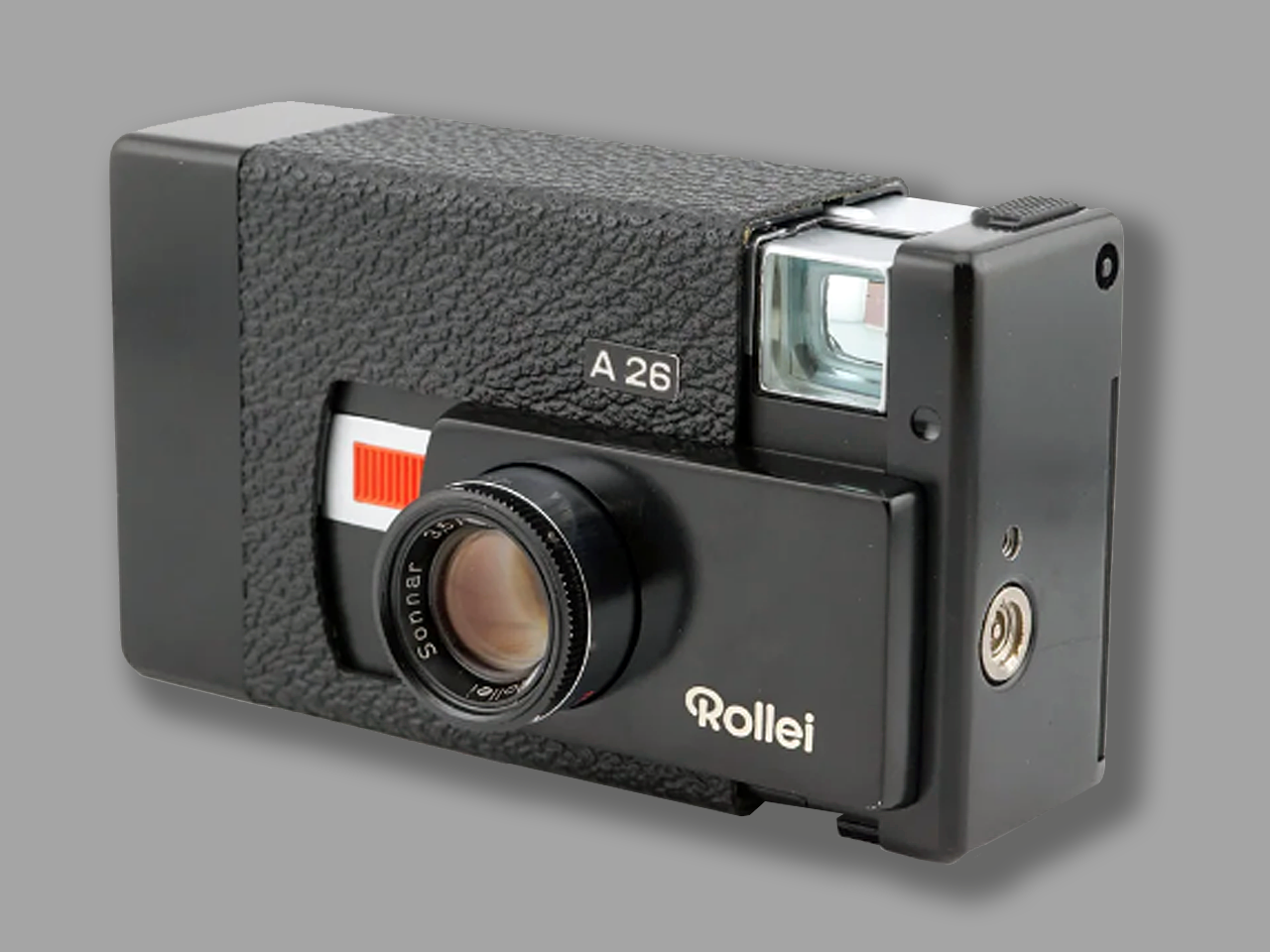
Rollei A26 – Camera
Manual focus 126 compact camera released in 1972 to 1976. Push-pull mechanism for film advance and shutter cocking. CdS-controlled exposure and Prontor shutter. Metal body available in black. The Rollei A26 was the most compact of the better cameras for type 126 cartridges. There was a matching attachable computer flash, the Rollei C26.
35mm Rollei 35
viewfinder cameras
- Rollei 35 (1966-1974)
- Rollei 35T / 35S (1974-1980)
- Rollei 35TE / 35SE (1979-1981)
- Rollei C35 / B35 / 35B / 35LED (1969-1980)
- Rollei 35 Classic (1990-2015)
- Rollei 35 Metric (1991-2000)
- Various limited editions
35mm Compacts
- Rollei AFM35
- Rollei Giro 28M
- Rollei Giro 28 AFS
- Rollei Giro 70 WA
- Rollei Giro 140
- Rollei QZ35W / QZ35T
- Rollei Prego AF (1991)
- Rollei Prego 30
- Rollei Prego 70
- Rollei Prego 90
- Rollei Prego 100 WA
- Rollei Prego 105
- Rollei Prego 115
- Rollei Prego 125
- Rollei Prego 130 WA
- Rollei Prego 140
- Rollei Prego 145
- Rollei Prego Micron (1990s)
- Rollei Prego Zoom (35-70mm, 1993)
- Rollei X70 zoom
- Rollei XF 35 (1974-1980)
- Rolleimat F / AF / AF-M (1980-1981)
- Rolleimatic (1980-1981)
35mm Rangefinder
- Rollei 35RF (1981)
- Rollei 35 RF (2002)
35mm SLR
Rolleiflex SL35
- Rolleiflex SL35 (1970-1976)
- Rolleiflex SL350 (1974-1976)
- Rolleiflex SL35M (1976-1979)
- Rolleiflex SL35ME (1976-1979)
- Rolleiflex SL35E (1978-1981)
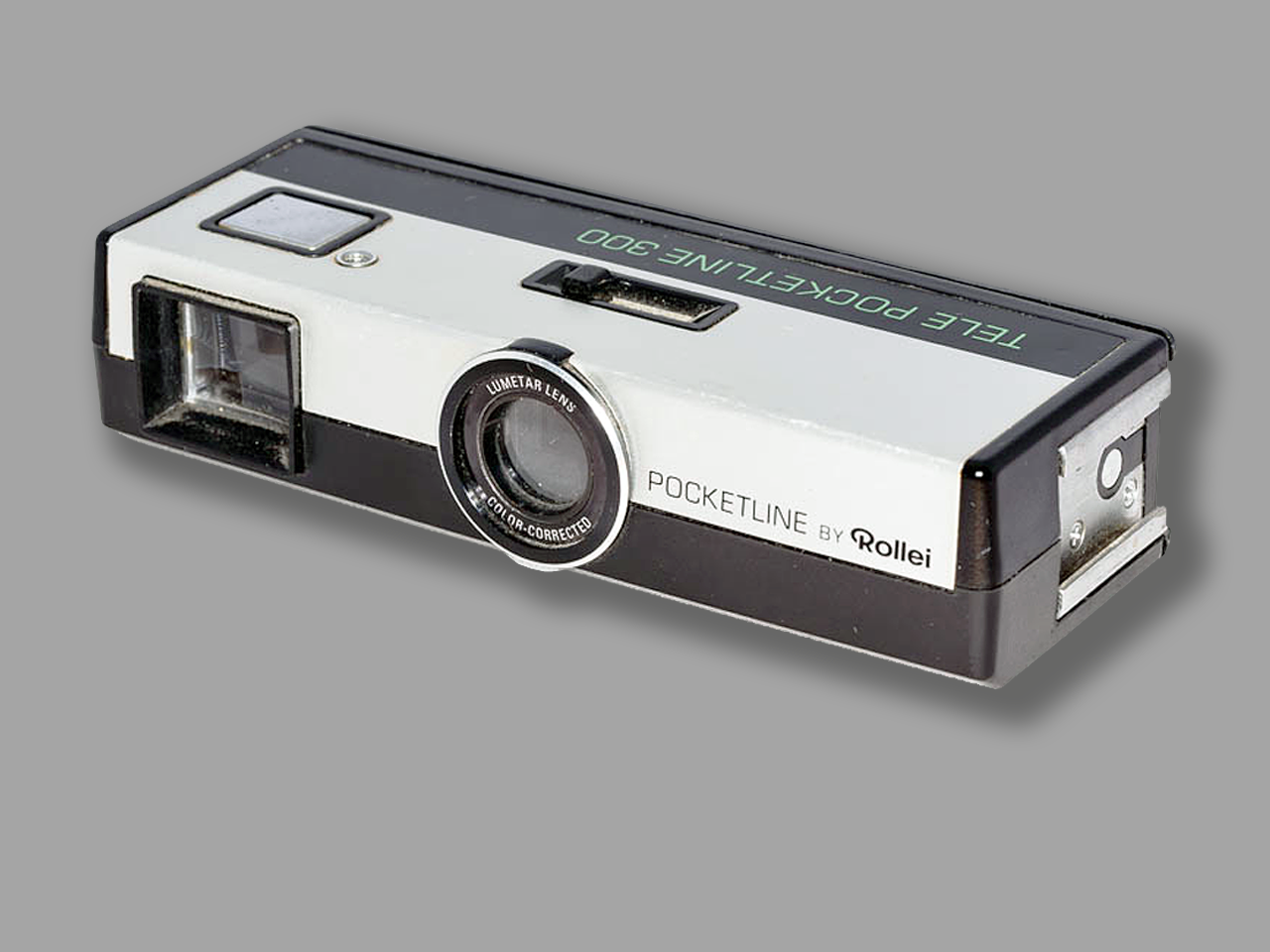
Rollei Telepocketline 300 Camera
The Rollei Tele Pocketline 300 was one of three very similar basic 110 film cameras made from 1977 – 1979. The differences between the models were only small. The “Tele” in its name refers to the possibility to slide an extra lens in front of the Lumetar lens which produces a very modest tele effect. Film transport was done manually with a thumbweel.
Large format
camera
- Rollei LFC (1989-1995)
APS Cameras
- Rollei Nano 60 / 80 (1999-2000)
126 film Cameras
- Rolleiflex SL26 (1968-1973)
- Rollei A 26 (1972-1976)
Pocket Instamatic
110 Cameras
- Rollei A110 (1974-1981)
- Rollei E110 (1976-1978)
- Rollei Pocketline 100 (1977-1979)
- Rollei Pocketline 200 (1977-1979)
- Rollei Tele Pocketline 300 (1977-1979)
- Voigtländer Vitoret 110 EL
16mm Cameras
- Rollei 16 (1963)
- Rollei 16S (1965)
Digital Cameras
- Rollei d7 flex (2000)
- Rollei d30 flex (2000)
- Rollei dr5
- Rollei d530 flex (2002)
- Rolleiflex Hy6 (accepts film backs)
movie Cameras
- SL81 (1969)
- SL82 (1969)
- SL83 (1969)
- SL84 (1969)
- XL8
- XL12
Slide projectors
for 6×6 cm slides
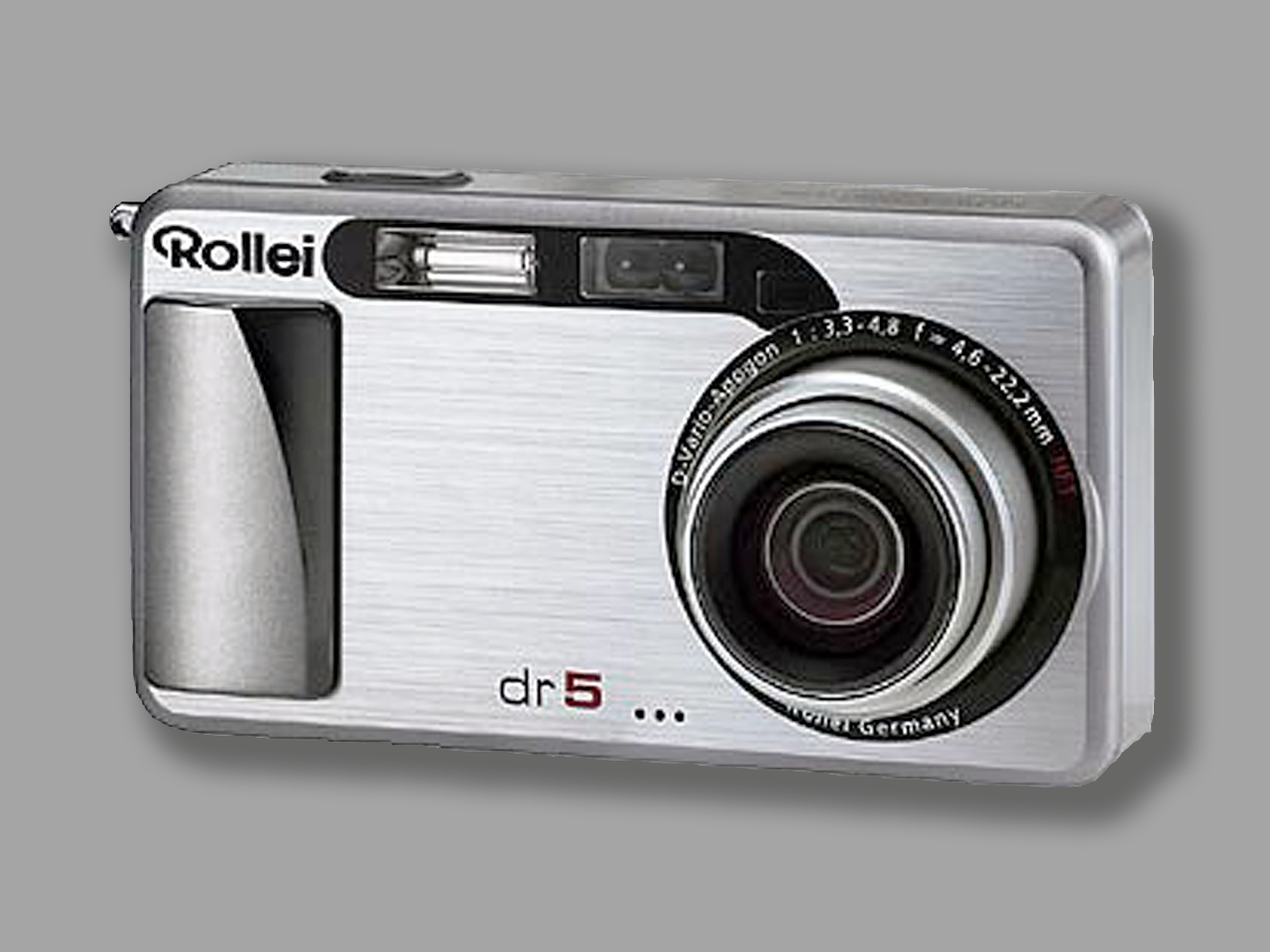
Rollei DR5 Camera
The Rollei dr5 is a compact digital camera introduced in 2005. It features a 5 megapixel sensor. With 25 mm, it is not only ultra-flat, but its neat metal body also makes it a pleasure to look at. Instant readiness and minimal shutter lag makes it an ideal candid camera. It has a 4.8x optical zoom lens, a 1.8″ LCD screen and 12 MB internal memory.
Slide projectors
for 35 mm slides
- Franke & Heidecke Rollei Rolleiscop (1965-1966)
- Rollei P35 (1968)
- Rollei P35A / Rollei P35E / Rollei P35AT (1968) / Rollei P35 autofocus
- Rollei P37A (1972) / Rollei P37E / Rollei P37 autofocus
- Rollei P73E
- Rollei PM35A / Rollei P 300 / Rollei P320 / Rollei Diamat S
- Rollei P 300 automat
- Rollei P 300 autofocus
- Rollei P 305 automat
- Rollei PM35AF / Rollei P320 autofocus / Rollei P340 autofocus
- Rollei P350A (1974) / Rollei P350AT / Rollei P350 autofocus (P350AF)
- Rollei P355 automat / Rollei P355 autofocus
- Rollei P360 (1978) / Rollei P360A (1978) / Rollei P360 autofocus (P360AF) / Rollei P360 autofocus-IR (P360AF-IF)
- Rollei P 801 / Rollei P 801S autofocus (1982)
- Rollei P 1000
- Rollei P 1150 A autofocus
- Rollei P 1250 AF autofocus
- Rollei P 2000
- Rollei P3800 (1976)
- Rollei P3801 / Rollei P3801 IR / Rollei P3801-Stereo
- Rollei 35 twin (1984-1988) / Rollei 35 twin IR (1985)
- Rollei Rolleivision 35 twin digital (1989-1995) / Rollei Rolleivision 35 twin digital P (1991-1995)
- Rollei Rolleivision twin MSC 300 / Rollei Rolleivision twin MSC 300 P (1993)
- Rollei Rolleivision twin MSC 310
- Rollei Rolleivision twin MSC 315
- Rollei Rolleivision twin MSC 320 S
- Rollei / Franke & Heidecke / dhw Rolleivision twin MSC 325 P (-2015)
- Rollei Rolleivision twin MSC 330 P
- Rollei / Franke & Heidecke / dhw Rolleivision twin MSC 535 P (2004-2015)
FOUNDING DATE: 1948
FOUNDERS: Ross Ltd. joined with Barnet-Ensign Ltd. to form Barnet Ensign Ross Ltd.
1948: Ross Ltd. join with Barnet-Ensign Ltd. to form Barnet Ensign Ross Ltd.; 1954: The company changed its name again to Ross Ensign Ltd.; 1961: Ross Ensign had gone completely.
COMPANY ADDRESS:
1948: Walthamstow works; 1955: Ross’s Clapham Common factory.
Ross Ensign produced some of the best examples of folding roll film cameras available in the fifties.
foreplay
On the nights of the 24th and 25th September 1940 enemy bombing destroyed Ensign House, the offices of Ensign Ltd. at 88/89 High Holbourn in London. On Oct. 7th of the same year Ensign Ltd., the sales wing of Houghton-Butcher, was wound up and the sale of the remaining stock of enlargers, epidiascopes and cine-cameras was taken over by Johnson & Sons of Hendon.
The Houghton-Butcher Manufacturing Co. Ltd. continued to trade under their own name, advertising the Ful-Vue along with other cameras in the B.J.A. until 1942, when they announced that they had sole right to the trade name “Ensign” and would be continuing the manufacture and sale of cameras and accessories using the trade name “Ensign”.
Camera production continued at the Walthamstow works, however due to mounting pressure to produce items for the armed forces combined with the loss of their sales wing and the general drop in demand for photographic goods, the retail photographic business took second place to their increasing commitment to the war effort. No new products were developed during this period apart from items that directly related to military needs.
On the 27th June 1945 Ensign Ltd.’s liquidators agreed to a company called Barnet Ensign Ltd. being floated. This new company was a union between the Houghton-Butcher Mfg. Co. Ltd. and Elliot and Sons Ltd. makers of Barnet films and plates.
Birth of Ross Ensign
1948 saw Ross Ltd. join with Barnet-Ensign Ltd. to form Barnet Ensign Ross Ltd. Clearly it was hoped that with the addition of Ross’s quality lenses to their existing range of cameras B.E.R. would become a force to be reckoned with.
Stating in their own publicity hand-out; ” It seems, in fact, beyond doubt that as a result of, the Barnet Ensign Ross alliance the focus of photographic progress has shifted from the continent to Britain.”.
It was around 1951 that the company changed its name again to Ross Ensign and it produced classic 50’s roll film cameras, like the Selfix and Autorange, which are still popular today with many collectors.
By 1955 Ross-Ensign had moved production from Walthamstow to Ross’s Clapham Common factory, where they continued to produce cameras along with lenses and binoculars.
Unfortunately by 1961 Ross Ensign had faded away completely.
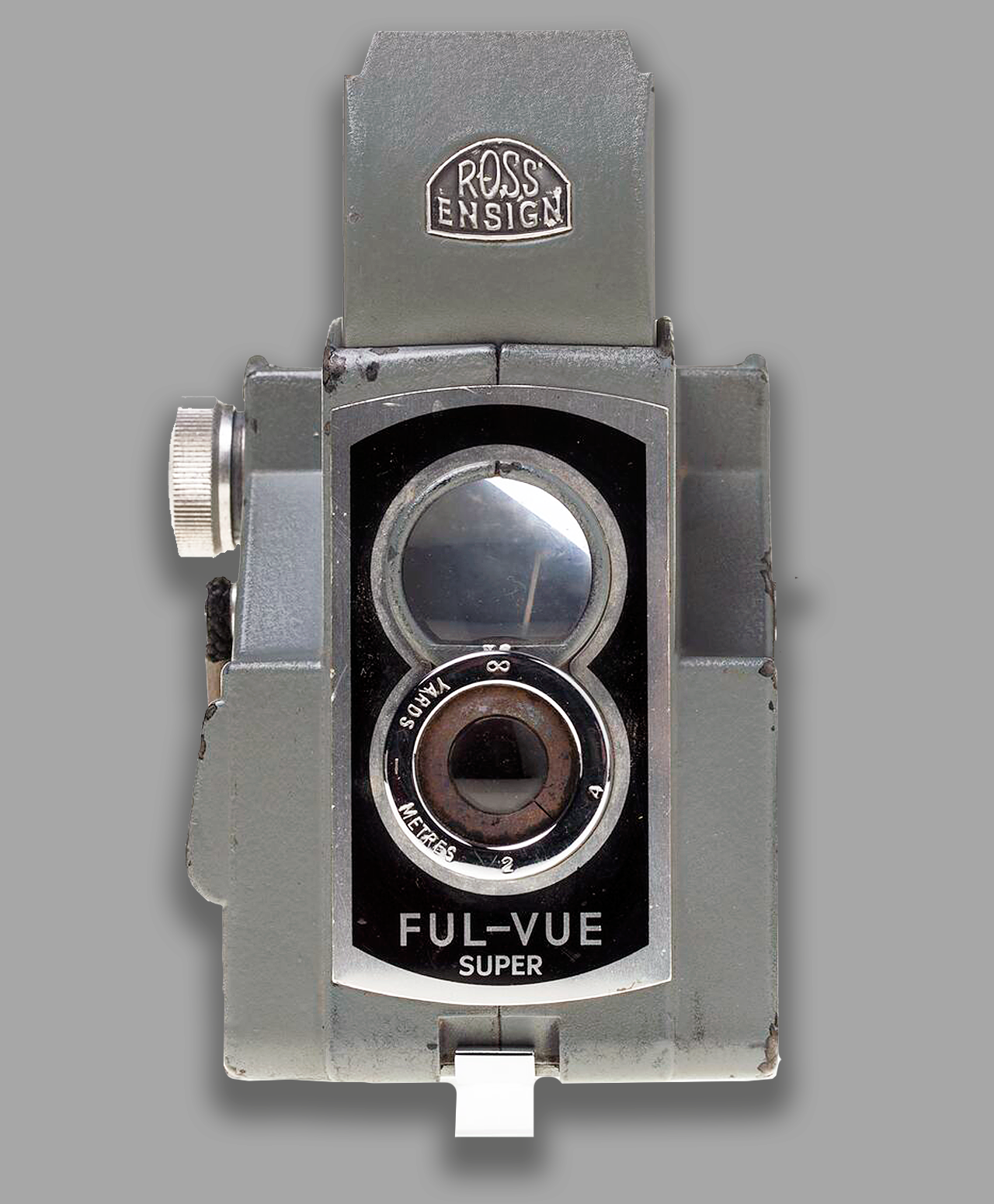
The Ensign Ful-Vue Super was a total and angular redesign of the earlier cameras of Ross Ensign. The Ful-Vue Super version adopted and only accepts 620 roll film. For the finish, Ross Ensign stayed with the crackle finish black paint, printed aluminium front panel and an embossed and burnished Ross Ensign logo glued into the lens hood, again concentrating their efforts on appearance over function. Ensign failed to regain their pre war heyday and silently faded away in the early 1960s.
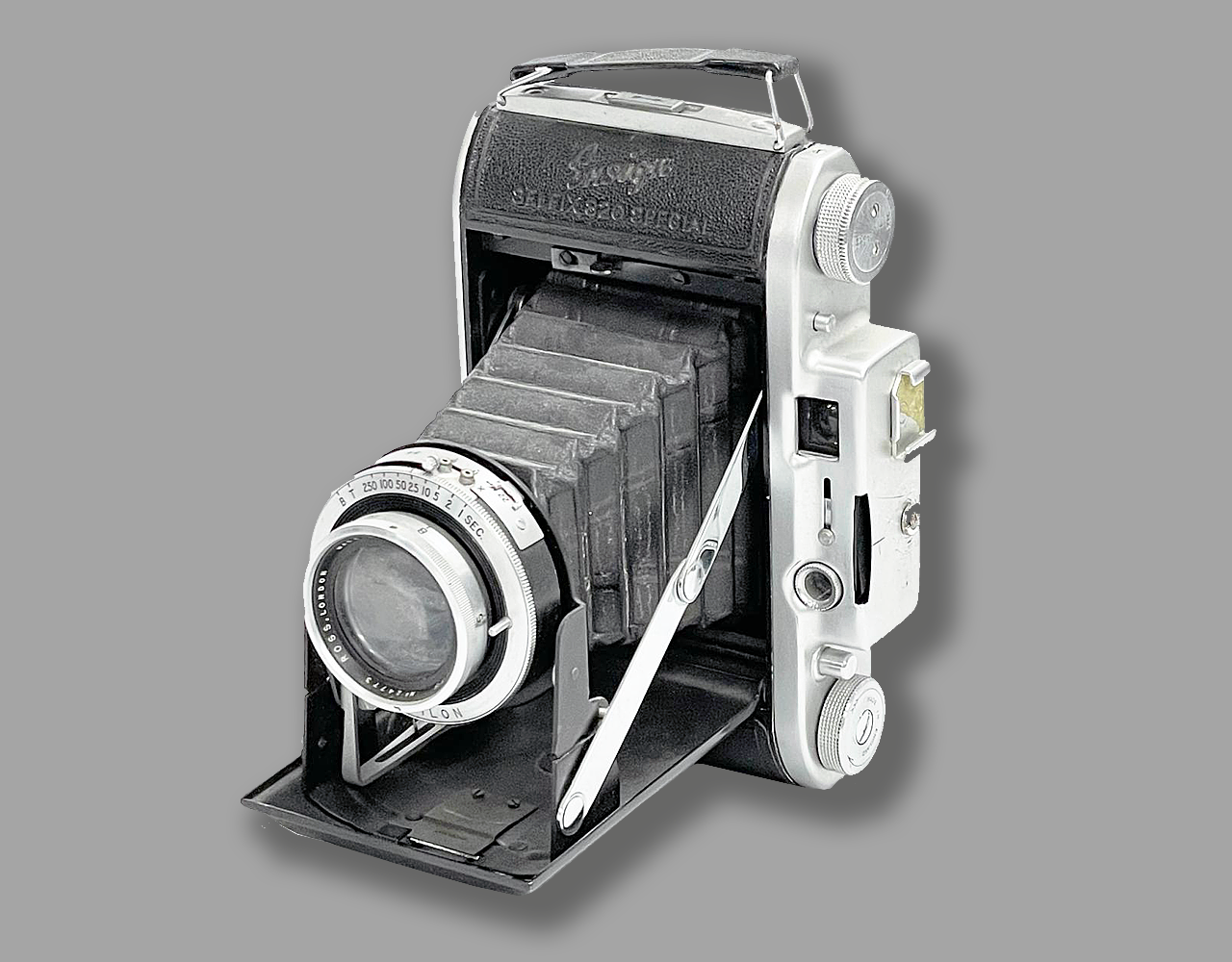
This is an Ensign Selfix 820, a medium format folding camera produced by Barnet Ensign Ross Ltd in London, England starting in 1953. When the first model in the 820 series was released in 1952, it was advertised as “probably the finest roll-film camera, designed successfully to beat all the German competition both in optical and mechanical performance.” The camera natively shoots 6cm x 9cm images on either 120 or 620 format roll film, or with a folding mask in the film compartment, twelve 6cm x 6cm images. It has an uncoupled rangefinder and came with a good 105mm f/3.8 Tessar-Style Ross, London Expres lens.
Reasons for the downfall of Ross Ensign
It is a fact that Ensign produced some of the best examples of folding roll film cameras available in the fifties. So what had brought them to this sad state of affairs?
Ensign was constantly battling against the public belief that foreign cameras particularly those made in Germany were of better quality than British made cameras. By single-minded attempting to develop high quality folding roll film cameras, which would compete with these German companies, they exhausted their research and development budget.
The company completely ignored the publics growing interest in 35mm cameras never producing even a prototype 35mm camera, believing so strongly that the larger format of 120 roll film was superior and would never be surpassed.
In a typically British way they looked back at their fine traditional range of cameras with pride, completely ignoring the changes in the camera industry and retail trade until it was too late.
Ensign cameras were expensive and beginning to look old fashioned. Sales dropped too low to fund the research needed for new designs and Ross-Ensign found it could no longer compete with the new 35mm cameras being imported from Germany and the then expanding camera manufacturers of Japan.
FOUNDER: Giovanni Ropolo
COMPANY NAMES:
1935: RO-TO (ROpolo-Torino); 1970: RO-TO merged into the CIDAF (Italian Consortium Distributors News Photo-cine-radio).
COMPANY ADDRESS:
1935: Turin.
Ro-To (Giovanni Ropolo) was a short-lived Italian camera company, based in Turin.
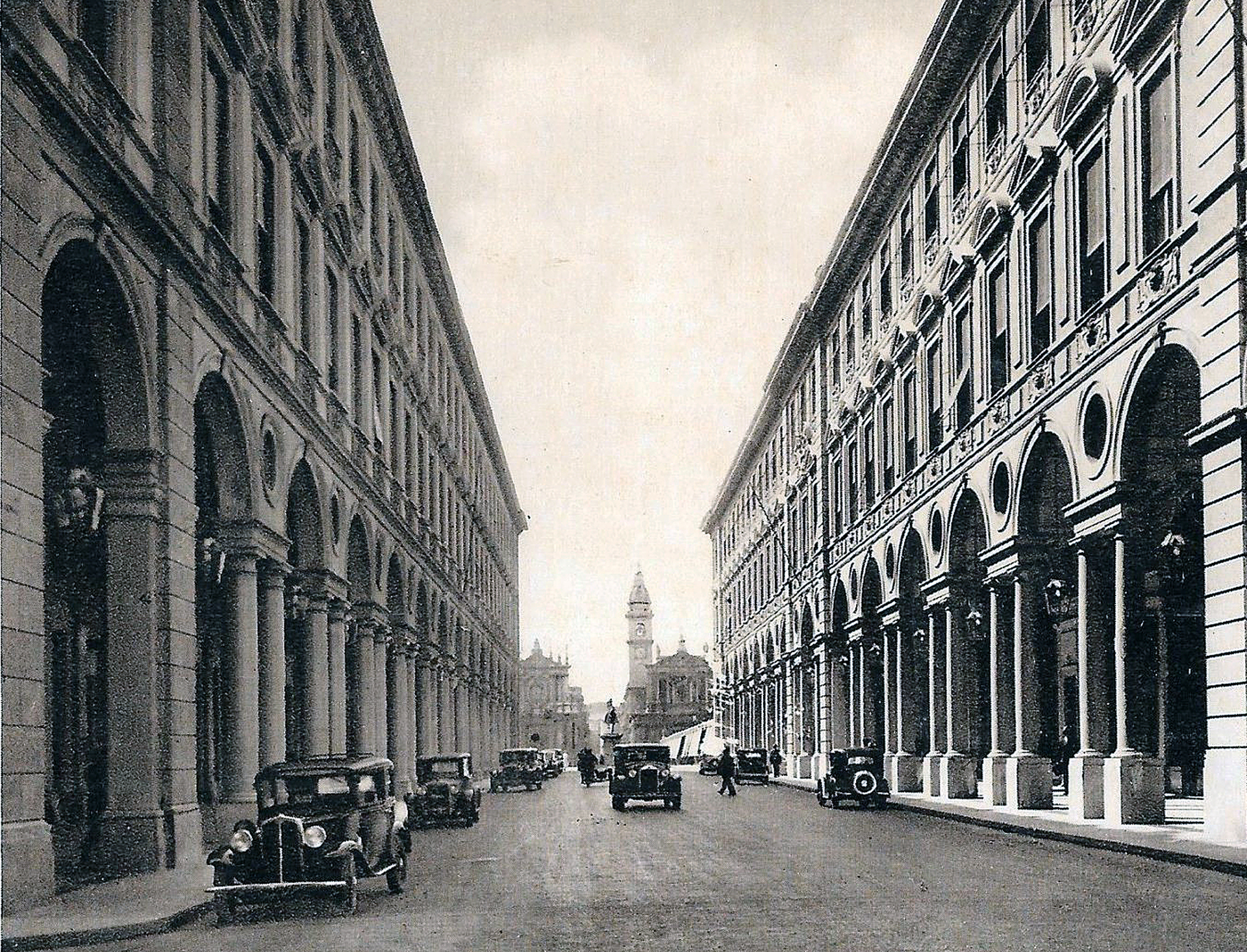
Old cars in the Via Roma da Piazza Castello in Turin, 1935.
Some Tennar cameras have a P&B logo on the shutter, a manufacturer who worked in Turin in the years around the Second World War on behalf of a well-known company that distributed photographic articles to wholesalers. (Ro-To or Ropolo).
 The RO-TO or simply ROTO company was founded by Giovanni Ropolo in the mid 1930s. It was located in Torino Italy. The name is believed to be derived from the first two letters of his last name RO combined with the city of Torino TO in which the company resided, thus representing Ropolo-Torino or RO-TO.
The RO-TO or simply ROTO company was founded by Giovanni Ropolo in the mid 1930s. It was located in Torino Italy. The name is believed to be derived from the first two letters of his last name RO combined with the city of Torino TO in which the company resided, thus representing Ropolo-Torino or RO-TO.
The company marketed photographic goods and sold a variety of cameras that were made locally by small businesses for RO-TO, including the Alpha Photo of Piacenza.
In 1970 ROTO merged into the CIDAF (Italian Consortium Distributors News Photo-cine-radio) which was formed in Milan by a group of 16 distributors operating in various Italian regions including Bancolini of Bologna, Bigagli Florence, Genoa Crovetto, Pecchioli and Ropolo Turin and Palermo Randazzo.
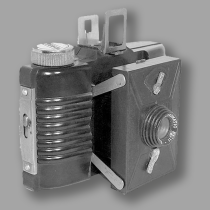
ELVO
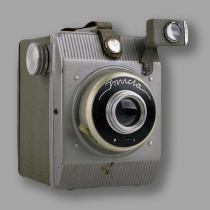
INVICTA
| Camera | Year built | Type | Film Format | Negative Format |
| ELVO | 1939 – 1948 | Bakeliet Box | 120 mm | 4 x 6 cm |
| SIMBI AC2 | 1940 – 1945 | Bakeliet Box | 35 mm | 24 x 36 mm |
| NEA FOTOS | 1947 – 1952 | Bakeliet Box | 35 mm | 24 x 36 mm |
| JUVE | 1947 – 1948 | Metal Box | 120 mm | 6 x 9 cm |
| ARDITA | 1945 – 1947 | Folder | 120 mm | 6 x 9 cm |
| SPRING | 1948 – 1949 | Folder | 120 mm | 6 x 9 cm |
| RECORD | 1950 – 1952 | Folder | 120 mm | 6 x 9 cm |
| OK | 1950 – 1952 | Metal Box | 120 mm | 6 x 9 cm |
| JOLLY | 1950 – 1951 | Metal Box | 120 mm | 4,5 x 6 cm |
| DERBY | 1950 – 1951 | Metal Box | 120 mm | 6×9 & 4,5×6 cm |
| LYS | 1950 – 1952 | Metal Box | 120 mm | 6 x 9 cm |
| INVICTA | ??? | Metal Box | 120 mm | 6 x 9 cm |
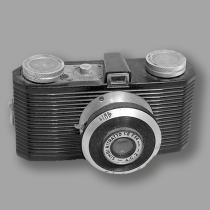
SIMBI
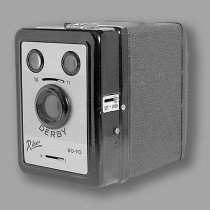
DERBY
